







By Rachael Brown
FURTHER reductions to the rural affairs budget in Wales cannot be ruled out, with First Minister Mark Drakeford unable to provide certainty for farmers at First Ministers Questions this week. Opposition parties have warned failure to support the sector would mean Wales would ‘pay the price for many years’.
Plaid Cymru leader Rhun ap Iorwerth asked Mr Drakeford whether he could provide certainty the Welsh Government draft budget would not have an impact on agriculture, to which he said: “No, I cannot say that.”
Mr Drakeford said ‘no single part of the Welsh Government can regard itself as immune’, including agriculture.
Mr Iorwerth said winter was a tough period for the farming community at the best of times, but under the current climate, the ‘right messages, especially around financial certainty’, could make a difference to the agricultural community right now.
He added: “Farming is not a loss leader, but an industry which generates a dividend from investment and for every £1 that goes into agriculture, £9 is generated for the economy.”

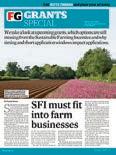













At the Royal Welsh Winter Fair, NFU Cymru unveiled the findings of a YouGov poll which found 82 per cent of the Welsh public backed financial support to farmers to produce food.
More than 72 per cent said supporting Welsh farmers was a good use of public spending with the figure even higher in Cardiff.

Government spend, was a sector which ‘represents exceptional return for public funding.’
With the daunting prospect of further cuts to come, the Welsh Liberal Democrats and Welsh Conservatives have both called on the Welsh Government to prioritise farmers’ mental health at such a testing time.
Mike Crawshaw, who farms on the Berwyn Mountains near Llangollen, said: “We are absolutely banging our heads against the wall trying to run a business making decisions for next year without knowing what is going on.”
A Welsh Government spokesperson said it had been clear it was facing the ‘toughest’ financial situation since devolution.
NFU Cymru president Aled Jones urged the Welsh Government to listen to the ‘resounding voice’ of the Welsh public.
He stressed that a sector which feeds the nation, manages 80 per cent of land in Wales and underpinned the £8 billion food and farming industry, for just 2 per cent of the overall Welsh
The spokesperson said: “We know there are difficult decisions to be made across Welsh Government.
“Despite these challenges, we remain absolutely committed to supporting farmers and rural communities throughout Wales, for example, we have prioritised the Basic Payment Scheme 2023 budget, which remains at £238 million, and advance payments are being made as usual.”


By Jane Thynne
THE ‘soul’ of rural communities is being ‘ripped out’ due to a lack of affordable homes, crippling housing waiting lists and stagnating wages, a new report has revealed.
According to the CPRE study, Unravelling a Crisis: The State of Rural Affordable Housing in England, rural homelessness has risen 40 per cent since 2018, with the average house price now £419,000.
soul from our rural communities.”
He said solutions ‘do exist’ but urgent change was required to ensure rural communities were not pricing out ‘the very people needed to keep them vibrant’.
Amy Wilkinson, Lancashire, and Kate Rowell,
‘Welsh farming is in need of a friend’, says Samuel Kurtz, Welsh Conservative Shadow Rural Affairs Minister
The findings have also revealed more than 300,000 people are on waiting lists for social rented housing in rural England; an increase of just over 10 per cent since 2018. At the current rate of construction, it would take 89 years for everyone on a waiting list to be offered a home.
The charity called on a future Government to end the years of neglect which have left the countryside drained of ‘skills, economic activity and vital public services’.
CPRE chief executive Roger Mortlock said: “Decades of inaction have led to an affordable housing crisis that is ripping the
The Department for Levelling Up, Housing and Communities highlighted a substantial amount of funding assigned to tackle such issues, including its £11.5 billion Affordable Homes Programme; a commitment to deliver 300,000 homes per year, which would see it hit its target of one million homes this Parliament.
A spokesperson said it wanted to ‘level up the country and make sure there are affordable homes in both rural and urban areas’, and it was reforming the planning system and offering ‘greater freedoms’ on farm buildings.
They said: “We are already investing in more social and affordable housing and, since 2010, have delivered over 659,500 new affordable homes, including over 166,300 homes for social rent.”
SUGGESTIONS to cut red meat out of diets and drink ‘plant-based’ milk alternatives to reduce greenhouse gas emissions in the NatWest banking app have been called out by the NFU.
NFU has urged NatWest to maintain a ‘balanced message’ when making any recommendations to cut customer’s carbon footprint. The app provides users with a personalised carbon footprint score each month.

NFU deputy president Tom Bradshaw said the bank had ‘oversimplified’ messaging on the issue.
However, he was ‘encouraged’ NatWest had committed to a full content review of the app’s carbon tracker across the dietary recommendations following a meeting with the NFU.
Simplistic messaging has also been called out by the Association of Independent Meat Suppliers
(AIMS) after a new survey claimed Government failure to curb the amount of meat people were eating was harming the environment.
The study, carried out by The Food Foundation, said the food sector had failed to act on guidance from both the UK National Food Strategy and the Climate Change Committee.
Tony Goodger, communications and membership director at AIMS, said that however well-intentioned reports were, they often attributed a single global figure to the livestock industry ‘simply as a stick to beat us with’.
“They fail to take account of different production standards, and we have never seen anyone who quotes the 42 per cent figure add the caveat that, in many cases, this can be significantly lower if not zero due to carbon sequestration,” he said.

IT has been a series of frosty starts for farmers and their stock as winter sets in, with these sheep at Fell End on the edge of Howgill Fells, Cumbria, looking resplendant as the sun breaks through.
rConsultancy firm appointed for review
By Jane Thynne
THE NFU has dismissed rumours of a ‘cover up’ and revealed further details of the Red Tractor governance review after concerns were raised about the independence of the process.
This week, the NFU announced it had appointed Campbell Tickell, a multi-disciplinary management consultancy specialising in governance, to carry out the review which was ordered following the row over the assurance body’s Greener Farms Commitment (GFC) plan. According to the union, the appraisal will establish Red Tractor’s
members in the first instance. Yes, there are challenges, but the most important thing now is that the ownership body listens and that everyone takes note of what is proposed.”
FARMERS have been left feeling frustrated by delays of three to four weeks on passports returned to the British Cattle Movement Service (BCMS) for ‘minor changes’.
Farmer and NFU Cymru Brecon and Radnor county adviser, Stella Owen, said with cattle sales dates set and crucial bTB test dates, the last thing needed was a delay.
“While the BCMS staff have always been exceptional, the significance of the current delays are huge for cattle farmers,” she said.
A Defra spokesperson said additional resources had been put in place and the normal processing time for these requests was ‘expected to resume shortly’. The spokesperson emphasised there had been no delays with passport issuance for new calves by BCMS and reiterated they were being processed at the ‘usual timescales’. decision-making procedures and its transparency, examine who is consulted by Red Tractor in its development of standards and look at the balance of this feedback and how Red Tractor engages with stakeholders.
Speaking to Farmers Guardian, NFU president Minette Batters dismissed reports circulating last week which had questioned the independence of the review and had likened the process to Red Tractor ‘marking its own homework’.
“I am amazed that people thought this was some kind of cover up,” Ms Batters said.
“Campbell Tickell are experts in this field. These things take time and we had to find someone with the right skillset. Also, the information had to be communicated to our
The review was ordered after Red Tractor was accused of acting outside its remit when it announced its Greener Farms Commitment (GFC) — which required farmers to achieve a list of asks to boost retailers’ environmental aims — without proper consultation with members.
The National Sheep Association’s vice-president and Red Tractor sector board member, Bryan Griffiths, said the fact the NFU and Red Tractor were ‘surprised’ by people’s concern as to
the nature of the review, showed the ‘lack of connectivity they had with grassroots farmers and, that in itself, could be seen to be part of a governance issue’.
Red Tractor said there will now be no decisions on the implementation or timing of the GFC or on other changes to existing Red Tractor standards until the NFU’s review of governance is complete.
The emerging findings of that review will be presented to NFU Council in late January.
The Red Tractor Ownership Body has agreed to ‘own the findings of the review and also approved the terms of reference’.
The final report should be made available in mid-February.



Farmers Guardian, Unit 4, Fulwood Business Park, Caxton Road, Fulwood, Preston, Lancashire, PR2 9NZ
Editor
Olivia Midgley, 07787 240 750 olivia.midgley@agriconnect.com
Head of News and Business
Alex Black, 01772 799 409 alex.black@agriconnect.com
Chief Reporter
Rachael Brown, 07974 039 778
rachael.brown@agriconnect.com
News and Business Reporters
Jane Thynne
jane.thynne@agriconnect.com
Chris Brayford, 07773 110 733
chris.brayford@agriconnect.com
Business Reporter
Cedric Porter
cedric.porter@agriconnect.com
Group Editor – Arable
Teresa Rush, 07917 271 989 teresa.rush@agriconnect.com
Arable Technical Specialist
Ash Ellwood, 07786 190 188 ashleigh.ellwood@agriconnect.com
Head of Machinery and Farm Technology
Toby Whatley, 07583 054 831 toby.whatley@agriconnect.com
Machinery Reporter
James Huyton, 07787 242 185 james.huyton@agriconnect.com
Head of Livestock
Katie Jones, 07786 856 439 katie.jones@agriconnect.com
Head of Livestock Sales
Angela Calvert, 07768 796 492 angela.calvert@agriconnect.com
Livestock Specialists
Ellie Layton, 07814 997 407 ellie.layton@agriconnect.com
Katie Fallon, 07815 003 227 katie.fallon@agriconnect.com
Online Editor and Features Editor
Emily Ashworth, 01772 799 446 emily.ashworth@agriconnect.com
Head of Creative Services
Gillian Green, 01772 799 417 gillian.green@agriconnect.com
Picture Editor
Marcello Garbagnoli, 01772 799 445 marcello.garbagnoli@agriconnect.com
Sales Director Stephanie Ryder, 07917 271 987 Stephanie.ryder@agriconnect.com
Group Publisher Ben Briggs ben.briggs@agriconnect.com
Circulation
Subscription hotline 0330 333 0056
help@subscribe.farmers-guardian.com
Newstrade enquiries 01772 799 434
UK print subscriptions £189; Europe: £226.80; RoW: £283.50. FG digital subscriptions: £109

News trade distribution
Seymour Distribution Ltd, 2 East Poultry Avenue, London, EC1A 9PT. Tel 0207 429 4000, Fax 0207 429 4001
Following his appointment in March this year, Wales CVO Richard Irvine spoke to Rachael Brown about his priorities in the role.
BOVINE TB remains ‘front and centre’ of Wales’ priorities, according to its chief veterinary officer. However, after a year in post, Richard Irvine refused to confirm whether he believed the country had the capacity to meet its ambitious target.
Dr Irvine, who was appointed in March 2023, said an expected assessment of the bTB target next year will serve as a ‘formal checkpoint’ and an opportunity to ‘take stock’ on the issue.
While he was keen to point out the overall medium- and long-term trends in Wales showed a reduction in new bTB incidences – which was good news from an ‘all Wales’ perspective – he failed to point out the short-term trajectory in Wales.
In contrast, the direction of travel of bTB in England has showed a comparatively optimistic and progressive picture. The latest quarterly statistics showed slaughter rates in England were down by 21 per cent. In Wales, it had decreased by only 2 per cent within the same period. Wales’ herd incidence declined by just 0.3 per cent, while its herd prevalence had risen.
When questioned on how he


The latest quarterly GB statistics showed slaughter rates in Wales had decreased by 2 per cent.
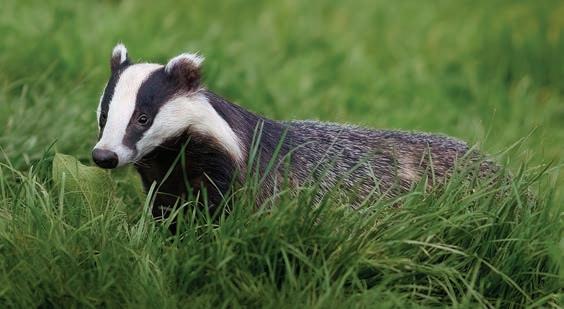
would respond to Welsh farmers, who have shared their frustrations about hearing vets in England repeatedly stating in public arenas how they were using ‘all tools in the box to eradicate bTB’, Dr Irvine emphasised there was a ‘specific context here in Wales’.
He raised the point that the animal health and welfare policy was devolved, adding ‘the specific context is what we have to operate in for Wales and we have to work with what we can do in and for Wales’.
“What I am very clear about is that we work closely in partnership to achieve those goals, whether it is bTB or other health and welfare challenges. It is clear in my mind that working together is how to deal with these challenges,” he said.
However, as CVO Dr Irvine finds himself in a dual position as both vet and a civil servant working for the Welsh Government.
He said: “As a vet, animal health
and welfare is number one for me.” He added that he thought Wales already had a strong track record of welfare that he was keen to build on. When talking about his priorities for the next six months, he said ‘naturally’ bTB was ‘front and centre’ of that. He also highlighted the threat of other infectious diseases such as bird flu, and the most recent cases of blue tongue.
As part of ongoing monitoring of these diseases, he once again stressed the importance of cooperation, and said he was in constant communication with his counterparts across the UK.
He added: “I have daily conversations. In terms of the working together, it is tight knit. We meet regularly as four CVOs, looking at the disease picture we have across the UK and threats that might be on the horizon.”
THE pig sector has moved to reassure members of the public and the industry that it remains safe to handle pork and eat pork products after the first human case of the H1N2 influenza virus was detected in the UK.
Chief executive of the National Pig Association Lizzie Wilson said the H1N2 strain has been circulating in pigs around the world for many years
and that rare instances had been detected in humans in the past.
“There is no evidence that there is any risk to humans by either handling or eating pork. There is currently no evidence of human-to-human transmission,” said Ms Wilson.
The case, which is believed to be in North Yorkshire, was reported earlier this week by UK Health
Security Agency (UKHSA). It was detected as part of routine national flu surveillance undertaken by UKHSA and the Royal College of General Practitioners. The individual was tested by their GP after experiencing respiratory symptoms and has fully recovered. The source of their infection has not yet been ascertained and remains under investigation.







FIRST impressions of the new Defra Secretary have been of a politician who is receptive and engaged in conversation, as Steve Barclay headed out on-farm to get across his new brief.
Tenant Farmers’ Association (TFA) chief executive George Dunn, who has had many a ‘first meeting’ with a new Defra Secretary in over 25 years in his role, pointed out Mr Barclay’s continual note-taking which was ‘peppered with sensible questions’.
He added he had been quick to grasp the problem of short-term tenancies when it comes to financing investment, driving productivity and participation in long-term environment management.
He noted the TFA’s disappointment over the Government’s decision to delay any possible changes to landlords’ agricultural property relief from inheritance tax.
Mr Barclay has also been out onfarm visiting NFU officeholders over the last few weeks, looking at divers-
By Jane Thynne
THE Labour Party has launched its campaign to win over rural voters by pledging a ‘new deal for farmers’ that would boost rural growth and restore pride in the countryside.
Speaking at this year’s CLA conference, Steve Reed, Shadow Secretary of State for Environment, Food and Rural Affairs, said the party was committed to ‘turbocharging’ the countryside econ-
ification and productivity innovation.
NFU deputy president Tom Bradshaw said they discussed family farms, the ongoing threat of bovine TB, infrastructure issues such as planning, plus the need to deliver on promised solar grants.
He said: “It is important the department now focuses on stabilising the sector and providing much needed certainty for farmers and growers.”
NFU vice-president David Exwood said it was positive Mr Barclay was keen to explore innovation during a visit to his farm in Horsham, Sussex, but he stressed that, first and foremost, farmers needed to be profitable and have confidence to invest.
He added: “Farmers need supporting through the transition to the Environmental Land Management scheme. This includes delivering the Sustainable Farming Incentive 2024 options quickly, addressing the gap in funding from the phase out of Basic Payment Scheme, and offering more for upland and horticulture businesses.”


It came as Mr Exwood confirmed he will stand for deputy president at the union’s February elections.
He added: “At a time of change in the industry, stability at the top of the NFU is important. Working as part of a strong team I will stand alongside the president to deliver for British farming.”
It means he does not intend to challenge current deputy president Tom Bradshaw, who is the only candidate hoping to replace Minette Batters as president.
Other nominations for officeholder positions are expected in the coming days.
omy to get it ‘firing on all cylinders’.
Mr Reed launched an attack on the Conservative Government’s record, which he said has left rural communities ‘in peril’.
Mr Reed said: “Westminster in more recent times has ignored the
needs and ambitions of our rural communities; communities that are facing an age of insecurity, and a period of rapid change that has left too many behind.
“Our countryside and its communities cannot afford any more decline. It is time to turn the page, and embrace a decade of national renewal that has the countryside at its heart.”
The MP for Croydon North also outlined Labour’s plans to boost food security, which he described as a matter of ‘national security’.
According to analysis from the Labour Party, food imports have risen by 21 per cent from 2010 to 2022, leaving ‘consumers exposed to shocks and British farmers with food rotting in their fields’.
He said: “Skyrocketing food inflation, empty shelves and working people queuing outside food banks all tell us one thing: food security is national security.
“We need a new deal for farmers to cut the red tape and costs at our borders. Labour will seek a veterin-
ary agreement with the European Union that will get our great British food exports moving again.”
In a nod to previous concerns regarding Labour’s ‘Right to Roam’ policy, Mr Reed said the party ‘respected’ the countryside which meant ‘people from urban areas –like me – not telling people who live and work in the countryside how they should live their lives’.
Westminster in more recent times has ignored the needs and ambitions of our rural communities
STEVE REED

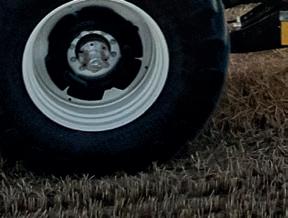
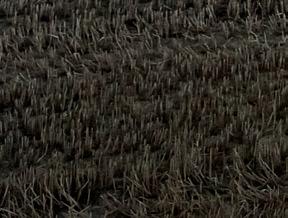
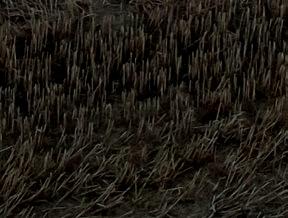

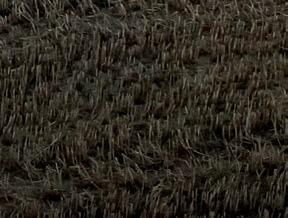

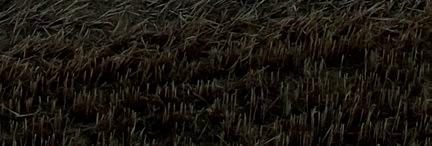
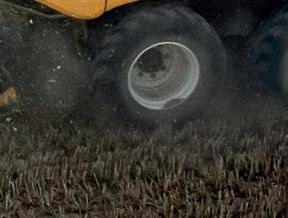



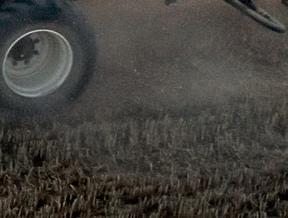

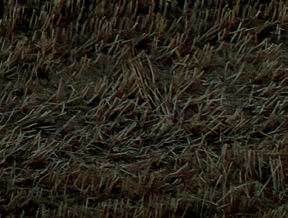

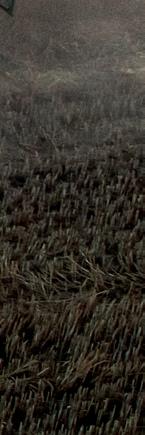

SOMERSET MP Jacob Rees-Mogg has come under fire once again from the agriculture sector after stating the UK ‘does not need fruit pickers’ because it could import ‘cheaper fruit’ from abroad.
Speaking to BBC Radio Four, he also called for greater controls on legal migration and warned numbers are ‘getting out of control’ after the Office for National Statistics said net migration had increased to 745,000 last year; 140,000 higher than previous predictions.
Liz Webster, chair of Save British Farming, said Mr Rees-Mogg was ‘letting down farmers’, failing his constituents and ‘the country as a whole’.
She added research showed the majority of the public backed British farming and food security was an issue of national security.
“With some of the highest standards in the world – local, fresh, high-quality food is good for our health and also for the environment.
“It is a shame we cannot say this about some of our MPs, like Mr Rees-Mogg, who are letting farmers down so badly,” she said.
Earlier this year, NFU president Minette Batters labelled Mr Rees-Mogg ‘morally bankrupt’ after he welcomed the idea of importing hormone-injected beef from Australia because it was ‘cheap and delicious’
By Jane Thynne
WARNINGS that the minimum wage rise will have a massive impact on farming have been issued following the Chancellor of the Exchequer’s decision to introduce a near 10 per cent hike.
During last week’s Autumn Statement, Chancellor Jeremy Hunt unveiled 110 fiscal policies, including a move to full expensing – which will be available to limited companies investing in plant and machinery – and cuts to National Insurance contributions.
The national living wage (NLW) was also boosted to £11.44 per hour for workers over the age of 21. This is an increase of £1.02 compared to the current NLW; a 9.8 per cent increase.
The Government has also lowered the age threshold to receive NLW, meaning that all workers over the age of 21 will be eligible. Alongside this, 16- to 17-year-olds and apprentices will be paid £6.40 per hour, while the rate for 18- to

at the Conservative Party Conference. NFU horticulture and potato board chair Martin Emmett said seasonal workers who come to the UK played

Seasonal workers play a ‘crucial role in aiding domestic food production’, said Martin Emmett, NFU horticulture and potato board chair.
a ‘crucial role in aiding domestic food production’, and it was vital the Government recognised the importance of seasonal workers.
He said: “Relying on cheaper imported produce also fails to recognise the invaluable contributions of British farmers and growers.”
Incorporating this cost increase after a couple of years of cost pressures will really test farm retailers
EMMA MOSEY
20-year-olds will be £8.60 per hour.
NFU deputy president Tom Bradshaw said the higher-thanexpected increase will have a ‘massive impact’ on agricultural
businesses, which are already facing increased production costs. He said: “We fully recognise the challenges with the cost of living and we need to recognise the value of our people working in agriculture. But wages within the agriculture industry have already seen huge growth, increasing by a third over the past two years.”
Mr Bradshaw’s comments were echoed across the industry. Fran Barnes, Horticultural Trades Association chief executive, said the sector could not ignore the difficulties posed by wage increases amid a backdrop of mounting inflation, energy costs, skills shortages, regulatory changes, climate change and fluctuating consumer confidence over many months.
Farm Retail Association chair
Emma Mosey said the rise will be a huge challenge for farm businesses, which may lead to price hikes for consumers.
She said that while they welcomed the increase to hardworking employees’ pay packages, it would be difficult to cover a 10 per cent increase for staff costs, with an increase for staff on the living wage also needing to be passed on to those above them.
“Incorporating this cost increase after a couple of years of cost pressures will really test farm retailers.
“Our members have begun planning now to help them work out how they can weather this new challenge without increasing costs to consumers, though this might not be possible,” said Ms Mosey.
By Rachael Brown
CUTS to the rural affairs budget have been described as the ‘latest act of betrayal’ to Scottish farming, with farmers feeling ‘misled’ by Scottish Government after promises of ‘no cliff edge’ in farm support.
Details of the budget changes were contained in a recent letter from the Deputy First Minister and Cabinet Secretary for Finance, Shona Robison, who outlined her intentions to reprioritise funding and cut several Scottish Government portfolios, including rural affairs, to address a significant shortfall in the wider budget.
Scottish farmers and crofters had expected some £33 million of deferred payments taken out of the ringfenced agricultural budget last year to be returned after NFU Scotland said it had received ‘categorical assurance’ that would be the case.
Instead, a further £28m of ‘uncommitted’ funding is to go the same way as part of the 2023/2024 budget rejig.
Farmer and former NFUS presi-
dent Jim Walker said the conditions set around Bew Money was that it was strictly ringfenced for agriculture, adding that agreement has now been ‘torn up and ignored’.
Mr Walker said the £61m now ‘pocketed from the rural economy’ to ‘fill the financial black hole created by years of Government economic mismanagement and giveaways’ would have made a significant difference to people’s lives far beyond the farmgate.
Dairy farmer Colin Ferguson from South West Scotland said farm
finances were facing ‘untold pressures’ and businesses were being told they needed to change to tackle climate change, but Government was ‘unwilling to fund it’ and now removing promised funds.
Mr Walker also criticised the competency of the Cabinet Secretary for Rural Affairs and Islands, Mairi Gougeon, for not fighting for farmers and crofters. And he took aim at NFUS’ handling of the situation and the union’s negotiations with Scottish Government, urging it to declare no

confidence in the Cabinet Secretary. NFUS has written to the Deputy First Minister demanding the money is allocated through direct support top-ups this financial year, adding the decisions were taken without ‘any consultation or engagement’ with the agricultural industry.
A Scottish Government spokesperson said Ministers had been ‘clear’ the money deferred will come back to the portfolio in further years, adding: “The Government remains committed to spending this funding in full on the right agricultural priorities and will return this funding to the Rural Affairs, Land Reform and Islands portfolio at the appropriate time.”


And finally...
Getting on top of new funding streams can seem like a minefield, but our grants special gives you the details you need to know. See pages 37-45.

FARMING is rooted in tradition and proud of it. Its history is rich; just look at some of the sector’s farming families whose stories go back years — sometimes centuries — and you see that agriculture really always has been the backbone of our country.
Sometimes that can work against it, though.
People looking in from the outside can perceive farming as ‘behind’, whether that is someone looking for a job and thinks the industry is more stuck-in-themud than incredibly innovative, or those at the top who impose new rules and restrictions on farmers without truly understanding the intricacies of the land farmers manage.
Farming’s traditions, history and heritage should not be seen as an obstacle, and these things certainly do not hold its people back.
This week’s Farm Profile (pages 20-22), showcases how the vibrancy of youth and the new ideas that come with it, can go hand in hand with traditional farming. Young farmer, Frank Carr, is proud to be a fourth-generation hill farmer and continue his family’s farming legacy. The idea of preserving the
farm’s heritage is one thing, but the flipside to this is that yes, he is bound by certain farming styles but, there is always room for improvement. From the implementation of digital weighing systems to streamlining processes and efficiency savings, to increasing the abundance of rare, native wildflowers that now envelop the farm’s moorland.
This is not someone who is being left behind; this is someone who has seen the farm change over the years and has adapted, along with his family, to take the farm forwards in a new age.
In this week’s livestock section, the tradition of hefting is discussed, a historic process deeply rooted in uplands and the communities they serve.
Again, many place blame on such traditions for ‘sheep-wrecking’ such areas but, these traditions are steeped in one thing that those looking in do not have: knowledge. And knowledge, as we know, is power.
Rather than leaping to new-fangled ways, harnessing tradition and, where appropriate, adapting methods, is surely the best way to ensure these practices remain fit for the future.
‘I
Background: I am a fourth generation farmer and feel proud to call Scotland my home.
Our farm consists of a 150 suckler cow herd producing some of the finest beef you will ever taste.
The business used to trade in dairy until the milk crash of 2009, which made it impossible for us to keep going.
However, some of my earliest years as a child helped shape my aspirations to be a farmer. I remember when I would help my dad taking the cows to the parlour early in the morning. We would get to bond and spend valuable family time together.
He was my dad first and foremost, but also became my best friend, which is why farms are magical places. First steps: I did not go to university after school — I found it really hard to study and stay focused in class.
So, I went straight into work and did
some contracting, until I was brought home to the farm after my dad had broken his shoulder.
It was quite daunting because I was effectively managing the farm on my own and had to take the role my dad who had performed the job so well.
Taking such a weight of responsibility at a young age helped shape the farmer I am today.
I am proud to be a farmer because I feel I am following in the steps of my great-grandfather, my grandfather and father, who have worked the land and given the farm every ounce of sweat and tears they could give.
I wake up every morning to make them proud of me.
Young Farmers: I was chair of Strathspey Young Farmers’ Club for two terms. It was a fantastic experience where I learned vital leadership skills. Another reason

why Young Farmers’ Clubs are vital is the ability to socialise and gain friends who will stay with you for a lifetime. Especially when the role of farming often means you are isolated and alone for hours, weeks and months without seeing another human being.
It is vital to keep raising the importance of mental health in the farming industry.
Another challenge farmers face at the moment is trying to change systems of farming which have been
Calum Smith
Grantown-on-Spey, Moray Calum Smith, 28, from Grantown-on-Spey in Moray is a beef farmer.
established for centuries and many older farmers today just cannot cope and are being left behind.
Future: I am also concerned by those who are walking away from farming, whether they have a choice or not, with former farms being placed into environmental rewilding schemes, which diminishes the role of farming. Farmers have always been pioneers of innovation in their field and lead by example. Life is getting harder for farmers, but they are still leading by producing food to the highest standards. In the future, I want to see more recognition for this vital role farmers play in feeding the nation.
MORE INFORMATION
If you would like to be featured, email chris.brayford@agriconnect.com
IT is high time the Welsh Government and the Environment Agency take a long, hard look at themselves and the impact their disastrous policies have on us all.
In a debate in Cardiff at the Welsh Parliament (The Senedd) about the bTB eradication programme going forward, the MS for Mid and West Wales, Joyce Watson, suggested farmers with perpetual bTB infection status should get out of farming and find another business. How dare she?
What is this woman paid for and what knowledge does she bring to her job, if she can utter garbage like that?
It is their disastrous policy and inaction which has led to the situation here in Wales, now spreading to clean areas in North Wales.
In areas of England where badger culling has taken place, the number of cattle culled has dropped by 20 per cent year on year.
In the past seven years, I bred pedigree British Blue cattle for charity with a high tensile boundary badger-proof fence around the field. They were tested eight times, plus all the pre-movement tests. Always clear.
I am surrounded by three dairy farms which have all tested positive, all closed herds, and those farmers are all at the top of their game. It does not take a genius to work it out.
While I am on the subject of waste, the latest of their proposals is the creation of another National Park in the Clwydian Range and Dee Valley, having engaged the bloated quango, Natural Resources Wales, to do a feasibility study.
It is not just a badger cull we need


British
granddaughter, Dr
but a cull in Cardiff, not the election of an extra 33.
Furthermore, what about the money squandered by the Environment Agency? Its policy over the past 40 years is one of total neglect.
Emyr Wigley, Llansantffraid, Powys.
RURAL land and countryside is permeable and readily accepts rainwater, as it has for centuries.
Millions of acres of concrete and tarmac rapidly displace trillions of tonnes of water with minimal capacity for it. Many low-lying areas have been raised one to two metres to accommodate development, thus
near
increasing flood zone levels. Man has caused the problems – not the convenient buzzwords climate change. Do not use farmers as scapegoats – they feed the nation.
Do the maths: two inches (50ml) of rain equates to 200 tonnes per acre; 640 acres = 1sq.mile. Small cities of 500-900sq.miles or more of solid infrastructure needs to expel many millions of tonnes of water.
The failure of urban planning and the water companies including sewage disposal to upgrade the aged inadequate infrastructure has also caused the massive problems therefore flooding is set to become worse as development expands.
Flooding will never be satisfactorily addressed unless drastic measures are employed:
Dredge and widen rivers to accommodate total volume of water from these ever-increasing towns


and cities. Or alternatively, not impossible, excavate a massive bypass canal from upstream, circling the affected areas.
Tunnel through hills and obstacles as was achieved for canals and railways.
The project may well incorporate hydro-electric schemes as a bonus too. To sea it must go.
Finance a national flood relief scheme by taxing the fat cat developers and offshore companies heavily; cancelling useless environmental schemes, Sustainable Farming Initiative, Environmental Land Management, HS2 and space projects; disband the Environment Agency, Natural England and Defra and use monies from the above to pay for storm water flood relief schemes.
Cyril Emmett, Via email.
is part of the Arc network (we, us, our) and we are committed to protecting and respecting your privacy. We are registered under company number 07931451 and have our registered o ce at Unit 4, Caxton Road, Preston, Lancashire, PR2 9NZ. For the purposes of this policy, we are the data controller of personal data provided to us. We are a UK company specialising in providing information services including news, analysis, data, pricing, insight and market intelligence to agribusiness professionals across the globe. This policy sets out how we do this and applies the use of your personal data that you disclose to us by entering into our competition to win £200 for the Stockjudging Competition or £20 Love2Shop vouchers for the weekly Crossword Competition, referred to throughout this statement as the “Competitions”. How we collect your information: We collect the personal data you have provided to us by lling in the form on our website www.fginsight.com OR printed form when entering the Competitions. If you have entered the Competitions via our site we may also collect some technical information about how you use our site, for example, the type of device you are using, your operating system, IP address, uniform resource locator (URL), clickstream and length of visit. How we use the information you provide: We will use your personal information: • to administer the Competitions, on the basis that the use of your personal data for this purpose will be necessary to enter you into the competitions and, if you are successful, contact you to notify you of your prize; and, • if you are new to Farmers Guardian and where you have agreed to this, to provide you with news and updates from time to time about our services; and, if at any point in the future you do not wish to receive any news and updates from us or from, you can unsubscribe from our marketing list at any time by following the steps below. To unsubscribe from any communications using the link on the email we send you or by emailing us at dataprotection@farmersguardian.com. We will not use your information for any purposes except those listed in this policy without letting you know and getting your permission, if necessary, rst. Who do we share your information with? We will not disclose your information to any third parties without your consent, except where: • it is necessary to enable any of our sta , employees, agents, contractors, suppliers or commercial partners to provide a service to us or to perform a function on our behalf; • we have a legal obligation to disclose your information (for example, if a court orders us to); or • there is a sale or purchase of any business assets, or where Farmers Guardian or any of its group companies are being acquired by a third party. Where we use third parties as described above to process your personal information, we will ensure that they have adequate security measures in place to safeguard your personal information. For how long do we keep your personal information? We keep your personal information for 36 months for the purposes for which it was collected or for any period for which we are required to keep personal information to comply with our legal and regulatory requirements, or until you ask us to delete your personal information. Your rights: You have a number of rights in relation to your personal information. These include the right to: • nd out how we process your personal information; • request that your personal information is corrected if you believe it is incorrect or inaccurate; • obtain restriction on our, or object to, processing of your personal information; • ask us
To become a Farm Futures member and gain access to the exclusive video of the panel discussion, plus unlimited access to all news, articles, insight reports, a networking members lounge and receive a weekly editor’s briefing, visit farmersguardian.com/membership
Ahead of the COP28 climate summit in Dubai and to coincide with Countryside COP, which sees UK agriculture set the agenda and amplify policy asks around climate change, Farmers Guardian held a Farm Futures round table to discuss industry opportunities.
IDENTIFYING ‘emissions hotspots’ or areas of a farming business which have the highest carbon footprint is the best place to start for farmers looking to boost their sustainability credentials.
While the ultimate goal for many will be to reduce carbon emissions, increasing business resilience should be a key focus.
These were the key messages running through a Farm Futures Exchange digital round table, entitled ‘Why is low carbon farming more than a box-ticking exercise?’, organised by Farmers Guardian last week. And the capturing and monitoring of data has never been more important.
Lucy Hopwood, business development director and lead consultant for bioenergy and anaerobic digestion at consultants NNFCC, said: “The critical starting point is really understanding where the hotspots are on your farm in terms of the emissions and the impacts. And to do that you need the data and tools to monitor and measure what is happening and where, and then work out what you can do to address those.”
She advised farmers to pool resources and ideas with neighbours and like-minded farmers from other regions to develop solutions.
“You do not have to be in competition. I think everyone is trying to address the same problem here,” she added.
For David Shelton, who runs a mixed operation comprising 650 head of finishing beef, 230,000 broilers, B&B pigs, a 20-hectare solar farm and combinable crops across 890ha


in Leicestershire, data management is essential.
He said: “I cannot stress enough the importance of collecting data. On the beef side, we buy-in cattle which finish between 18-28 months at similar deadweight. By regular weighing you can see which animals are performing better and are most suitable for the system.
“Genetics and breeding are going to have a lot to do with reducing emissions [in livestock] in the future.”
Mr Shelton, who supplies Morrisons, is one of the retailer’s ‘top 50’ Sustainable Beef and Lamb Scheme

producers and was recently named Sustainable Farmer of the Year at the British Farming Awards.
By running a mixed enterprise, he feels he is able to get close to net zero goals.
“I do not think we will get there purely on beef alone, but certainly by mixing all the elements together with woodland, environmental creation and renewable energy we are heading in the right direction,” he added.
This integrated farming approach is key, according to Vicky Robinson, head of sustainability at the Agricultural Industries Confederation.
“Recognising that you cannot focus on one thing in isolation, but having a systems approach and recognising that each sector impacts on others, is really important,” she said.
“You need that join-up to make sure there are not unintended consequences of focusing on one element of the business.
“And you need a suite of data across all aspects of the business.”
She said focusing on soil and in particular, soil resilience, was also a good place to start.
On how individual farm businesses could benefit from more circular solutions, she said looking at waste was crucial.
“I would love for there to become a time when we did not talk about waste because everything is used as part of the circular system,” she added.
Ms Hopwood said renewable energy and anaerobic digestion technology in particular could play a key part in this, but schemes had to be ‘scale-appropriate’.
“Subsidies which are available at the moment have driven everything bigger and bigger is not always better,” she said.
“Farmers get approached by largescale developers who want to lease their site to develop a huge project and import 80,000 tonnes of third party waste per annum to run a project which does not sit well with the farming community.
“Look at what is scale-appropriate, look at what farm feedstocks are available and that is ultimately livestock manures and slurries, potentially some crop feedstock from cover or sequential crops, rather than focusing on maize, grass and rye silage.
“The end goal is driving down emissions in agriculture.
“We know the direction. But we need to accelerate faster; we can always do more.”
The need to go green often requires a large capital outlay and for Ben Makowiecki, agriculture sustainability director at Lloyds Bank, businesses which had a clear baseline and targets on sustainability were more attractive to lenders.
“A lot comes down to understanding what farms are doing to reduce emissions and seeing the before and after,” he said, adding the bank wanted to play its part in accelerating businesses’ transition to net zero and, importantly, ensure they are rewarded for it.
He pointed to the bank’s collaboration with the Soil Association Exchange programme, which takes a holistic approach to sustainability on-farm, focusing on six key areas, including: biodiversity, soil health, carbon, animal welfare, water quality and wider social impacts.
“The key is to then understand what this data means and identify where farms can make changes that ultimately improve the overall sustainability and footprint of their business in tandem with their bottom line,” said Mr Makowiecki.
“We know a joint approach is needed; farms which are environmentally sustainable will be financially sustainable. It makes good business sense.”
MORE INFORMATION
For more on FG’s Farm Futures membership, go to farmersguardian.com/ membership




It is compulsory for businesses that operate a combustion plant such as an engine, boiler, or turbine with over 1MWth input to have an environmental permit in place. Existing plants - those put into operation prior to 20 December 2018, that are over 5MWth input must have an environmental permit in place by 01 January 2024.



At NFU Energy we have a range of services to assist you and your projects’ environmental compliance needs. From permitting applications and variations with our inhouse experts, to management of tricky and complicated dispersion modelling and emission testing with third party suppliers, we can help your project go from paper to reality. Contact the team to see how we can get you compliant without the headache of complicated jargon and piles of paperwork.
At NFU Energy, we help you stay ahead of the ever-evolving energy landscape, helping you stay compliant with all necessary schemes and providing you with a gateway to unlocking various incentives. Here’s some key dates to bear in mind in 2024*. 31 March 2024 Combined Heat and Power QualityAssurance(CHPQA)CHPQA is a government initiative used toschemesmonitorCombinedHeatandPower(CHP) and incentivise quality and efficiency – basically the more efficient your scheme, the greater the financial reward! At NFU Energy we guide you through the application process and handle the annual submissions, while you reap all of the benefits CHPQA has to offer. Get ahead of the curve and give the team a call today. We can start preparing and processing your data now. schemes






ESOS is compulsory for large companies with turnover in excess of €50 million or with 250 employees or more, that must assess their energy use and set out an energy saving strategy.


For all of your energy needs, contact our friendly team today!













Phase 3 qualification date is the 31 December 2022 and the compliance date is 05 June 2024. To be ESOS compliant, your business must have 12 months’ worth of data available to assess and submit (allowing time for the processing of both to happen). Here at NFU Energy we can take care of the whole process for you. Our ESOS audits and inhouse energy audits undertaken throughout the last decade have shown that most organisations have considerable opportunities to save energy, costs and emissions.






Edited by Alex Black – 01772
rCrop water damaged and di icult to store
THE second half of November was much drier than the first half, but waterlogged soils mean there was still as much as 10 per cent of the national potato crop which has not been lifted and, for some growers, a much larger proportion of their crops is still in the ground.
In Northern Ireland and the Republic of Ireland, as much as 40 per cent of the crop is still to be harvested.
DSDF Agriculture agronomist
Simpon Faulker said: “It will be a real struggle to get the remaining area out of the ground, especially now the weather is colder.”
He added even the crop which had been lifted was water damaged and would be difficult to store.
A planted area of little more than 100,000 hectares and harvest difficulties means the UK has produced its smallest potato crop ever, at fewer than 4.2 million tonnes, according to estimates from World Potato Markets, although reports there will not be enough potatoes for Christmas dinner were exaggerated.
Extreme weather has now impacted four of the last six potato harvests –droughts hit in 2018 and 2022, while a wet autumn made lifting very difficult in 2019 – with the other two harvests in the past six impacted by Covid-19.
Defra put the UK’s potato selfsufficiency at 63 per cent in 2022 and the problems of this year could mean that figure dips below 60 per cent. As recently as 2006, the rate was almost 90 per cent.
Gerard Croft, secretary of the Brit-



Potato growers who were unable to get on their fields made their way to the British Potato Event in Harrogate, Yorkshire, last week. The weather was a hot topic, but so was the long-term future of the sector. Cedric Porter reports.

The UK has produced its smallest potato crop ever, at fewer than 4.2 million tonnes, according to estimates from World Potato Markets.
ish Potato Trade Association, added it was a concern as it was a crop the UK can grow well, with massive demand.
He said: “It also leaves us vulnerable to a lack of supply in other countries.”
The wet weather has also impacted on the European crop, with as much as 20 per cent of the crop still in the ground in Belgium, which is the largest supplier of frozen chips or fries to the UK.
The relationship between the UK and EU, particularly when it comes to trading seed, was a topic at the show,
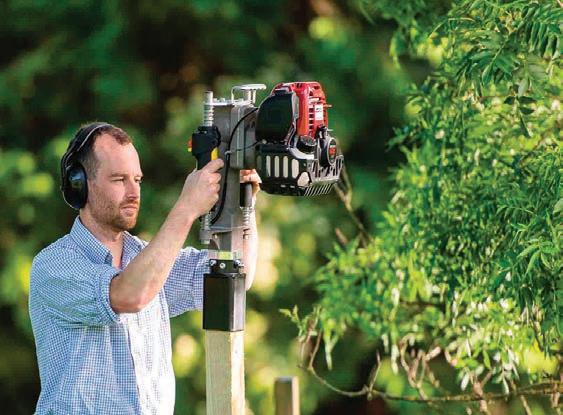

which played host to members of the Europatat potato association.
Its technical director Romans Vorss said a ban on the export of UK seed to the EU remains, but he was encouraged by the support that the Scottish Government has given for the lifting of the ban and the progress which now allows shipments to Northern Ireland.
Before Brexit, the UK used to export about 30,000t of seed to the EU. In the last year, about 11,000t of EU seed has arrived in the UK under rules which allow it to be directly traded between farms.
There is a strong future for potato production in the UK, argued Mark









Taylor, chair of GB Potatoes, but such a difficult year has inevitably impacted growers.
He said: “Growers certainly understand the risk of growing potatoes and many regard the reward is not sufficient for them to re-invest in production which can be costly.
“That is why we think it is important there is a collaborative organisation which can facilitate research, co-ordinate knowledge exchange and gather useful production information.”
For more from the British Potato Event, see pages 84-85.
SOURCE: DEFRA AND WORLD POTATO MARKETS
rWeather woes offer support for 2024
By Cedric Porter
INTERNATIONAL factors are driving the grain market, with the prospect of more Black Sea wheat and a delayed order for French wheat by the Chinese putting pressure on prices.
The November 2023 wheat price on the London ICE exchange has now closed with the last price at £185/ tonne. That was only £10/t more than at its start in July 2021.
In the intervening 28 months it soared to £293/t in May after Russia’s invasion of Ukraine, before plunging
to £180/t a year later. Wheat prices on the Paris and Chicago markets fell to levels not seen before the Ukraine war early this week after reports that Chinese buyers had pushed back shipments of up to 2.5 million tonnes of French wheat from December to March 2024.
US wheat exports were also down, according to CRM AgriCommodities.
The UK has been shielded from the worst of the falls due to a lack of exportable wheat because of a small 2023 harvest.
AHDB has set its market barometers to bearish for wheat, maize and barley this week. Competition from large volumes of Black Sea wheat and a strengthening euro have put some pressure on prices. In contrast,



uncertainty about weather conditions in South America had given the market some support late last week.
Prices for 2024 crops are trading at a premium to 2023 crops because of poor planting in northern Europe, including the UK as rain delayed sowing.
November 2024 futures on the London ICE market were trading at £205/t this week, with November 2025 at £212/t.
The oilseed market was still being dominated by Brazilian weather.
Chicago soyabean futures (May-24) were underpinned at the start of


last week from ongoing weather concerns. Also, a weaker US dollar and the Argentinian election result offered further support to the market.
However, futures subsided at the end of the week as rains were forecast for central and northern parts of Brazil, according to AHDB.
CRM AgriCommodities senior analyst Mike Verdin said: “Talk of crops being replanted, or abandoned, is rife, although it should be noted that official forecasts show a record 2023/24 harvest is still on the table.” He added growing conditions have improved with rains, but the election left analysts ‘scratching their heads’.

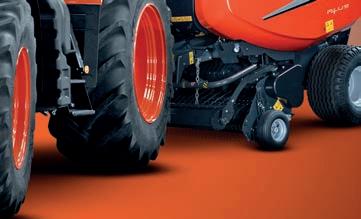











By Alex Black
WELSH lamb will soon be available on plates in Japan after a new export deal was announced by Hybu Cig Cymru (HCC) at the Welsh Winter Fair.
HCC chair Catherine Smith said there was a ‘double Welsh lamb whammy’ with success in the German market too.
“I can tell you today that Welsh lamb is on its way to Japan,” she said.
“It will be arriving this week and we now have firm plans to build on that with a significant launch into food service businesses in Japan early in the new year.”
She added HCC’s work had also ‘borne fruit’ with a new agreement
These figures show we are at the head of the Welsh economy – but we are also the heart of the Welsh economy CATHERINE SMITH
which could see Welsh lamb stocked in up to a further 1,000 stores in a major German retail chain.
She said supplying Japan had taken years of negotiation, advocacy
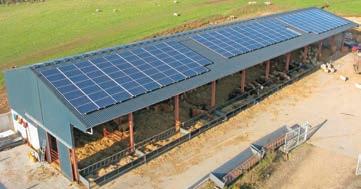

PICTURE: RUTH REES


and persistence in HCC’s 20th year.
“Our evidence-based consumer branding work has informed and underpinned the current ‘Experts In Our Field’ marketing campaign.
“I am delighted to report that this campaign is succeeding and that this work would not be possible on the scale that it has been carried out without the brilliance of our farmers and their unrivalled sustainability credentials product – and, of course, the valuable and continued support of Welsh Government,” she said.
“We are in a good place – and it is vital we stay there.”
Ms Smith highlighted the value of Welsh livestock to the economy, with exports worth £258 million.
She said: “These figures show we are at the head of the Welsh economy –but we are also the heart of the Welsh
economy. Our ‘industry’ is an all-embracing term for our majestic patchwork quilt of production, our incredible network of traditional family farms.”
She added Wales could not afford to lose any farms, ‘our young inspirational farmers’ or put at risk its critical mass of livestock and world-leading processing sector.
“Leadership falls to all of us in this room today: to build on the noteworthy gains that have been made by our industry over the years; to ensure that we move forward together to protect an industry in which the farmers of today and tomorrow can continue to operate the profitable enterprises that sustain our economy, and are rewarded for positive sustainability outcomes,” said Ms Smith.
DESPITE a challenging year, farmers are the least likely of any business sector to be putting their businesses up for sale, according to investment management company Vestd.
It analysed data from online business sale platforms and found that just 228 agriculture businesses were for sale out of a total of 215,000 registered business – a rate of 0.1 per cent.
This compared with more than 10 per cent of registered hospitality businesses, which includes bars and restaurants. The figures do not take into account how owners in each sector sell their businesses, which may mean that farmers are less likely to sell a business via an online seller.
Other data showed that in the year to the end of September 2023, there were 127 insolvencies in
agriculture and fishing; up 74 per cent on the previous year. Despite the big increase, the figure was still small compared to other sectors, with more than 4,000 construction businesses closing down over the year and 3,500 accommodation and foodservice businesses.
During the three months to the end of September 2023, overall insolvencies were at their highest quarterly level since the second quarter of 2009.
Ifty Nasir, founder and chief executive of Vestd, said: “Planning an exit that meets your individual requirements, as well as those of your business, will make the process of selling as stress-free as possible –but that is easier said than done with the current set of challenges.”
rMuller steps away from doorstep delivery
By Alex Black
MULLER has announced the sale of its milk round and doorstep delivery service, Milk & More, to Freshways Group, with the sale completing on January 1, 2024.
The Milk & More brand delivers milk and other products to doorsteps across the country and employs 1,100 people. It was acquired by Muller as part of its acquisition of Dairy Crest’s wider liquid milk processing and distribution operation in 2016.
Muller said it had ‘transformed’ it into a modern service, investing in a digital platform, a large fleet of electric vehicles and a broader range of products beyond milk.
However, it said that following a strategic review, it decided to divest its interest in Milk & More as a direct-to-consumer business, with its focus instead on supplying milk to


Freshways is ‘delighted’ to be entering a marketplace it has not been a part of for many decades, said Freshways managing director Bali Nijjar.
retail, wholesale and other businesses.
Bali Nijjar, managing director of Freshways, said: “Freshways is
delighted to be entering a marketplace which we have not been a part of for many decades.”
Mr Nijjar highlighted changing customer habits with people looking for convenience. This has been demonstrated through the growth of home delivery operations such as Amazon and Deliveroo.
“We are confident that we can carry forward the Milk & More business in the same manner that we have elevated Freshways over the past 30 years,” he said.
Patrick Muller, chief executive of Milk & More, said: “The synergies that exist between Milk & More and Freshways, and the opportunity afforded through vertical integration with a direct supply of fresh milk, offers Milk & More the means to further develop its proposition for customers.
“Potential also exists to advance our sustainability agenda by offering its customers the choice between refillable glass bottled milk and renewable cartons – the environmental credentials for which have significantly improved.”






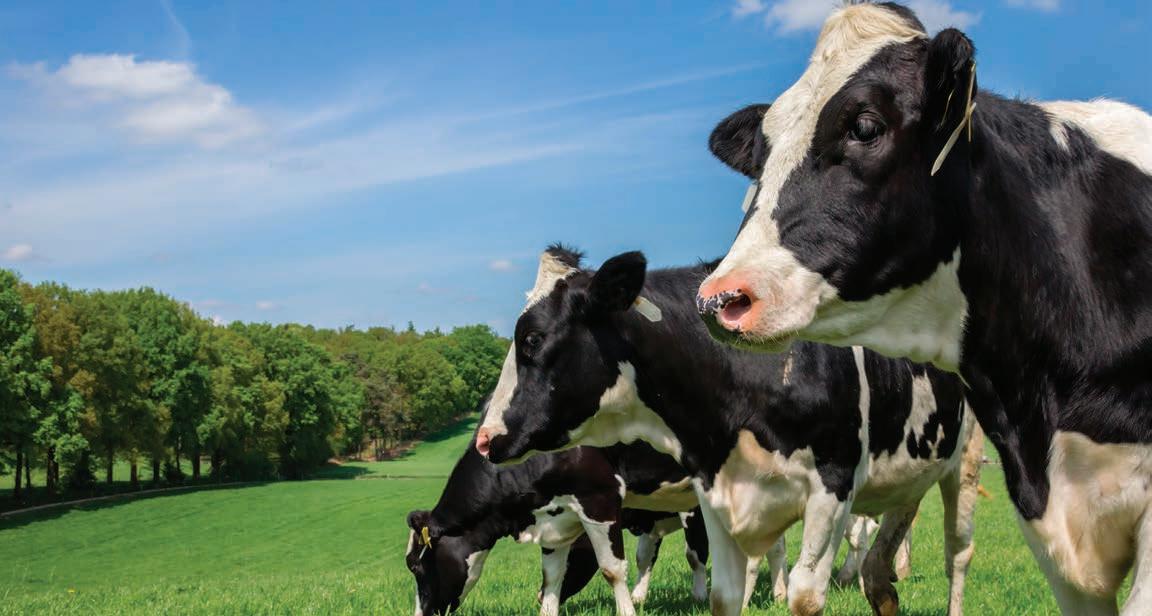






With obstructive tenant and landlord relationships currently in focus, Rachael Brown looks at the Duchy of Cornwall and how it is working with tenants to achieve its goals.
rAmbitious plans to reach net zero by 2030
THE tenanted farming sector has been brought into sharp focus over the past 12 months following the Rock Review and now Defra’s further call for evidence into whether a Tenanted Farming Commissioner was necessary.
In recent weeks, Farmers Guardian has reported on cases where tenant and landlord relations have broken down and had an adverse impact on farm businesses.
But for many other landlords, engagement with their tenants has been higher up the priority list.
The Duchy Cornwall Estate has ambitious plans to reach net zero by early 2030, but at the centre of the bold vision are people, plus a commitment to supporting and taking their tenant farmers along with them to a successful route of sustainable stewardship.
There are more than 200 tenant
farms on the Duchy of Cornwall Estate, from a 10-cow dairy farm on the Isles of Scilly to large mixed farms such as Phil Gorringe’s 344-hectare mixed arable and beef unit in Herefordshire.
Mr Gorringe has been a tenant of an institution, a private landlord and now the Duchy, adding the Duchy was unique as it adopted a long-term view.
“The Duchy recognises the whole thing is about teamwork, rather than an us and them relationship. That makes a difference,” he said, adding there was no ‘hidden agenda’.
Mr Gorringe was chosen as one of the focus farms for the estate’s net zero project and has since made a transition to ‘regenerative agriculture’ focused on improving soil, using less fertiliser and an overall low input approach.
But he said it was only made possible by the advice and the


estate’s investment early on of an on-farm agronomist. The Duchy’s future farming budget, which covers its natural capital and net zero work, equates to £1 million per year, a substantial investment which helps fund a team of regional advisers, new equipment and specialist advice.
Duchy of Cornwall rural director, Matthew Morris, said: “We are great believers in ‘seeing is believing’. Facilitating meetings on focus farms allows an honesty among farmers on what is working and what is not.”
He added as a landlord they were not ‘the only voice in the room’ with farmers being encouraged to play their part.
“Farmers are being encouraged in a net zero direction by grain mer-
chants, milk buyers and even banks. There are lots of pressures on the journey right now and we recognise we are only part of the story.
“From a landlord’s perspective respectfully, it is our farmers business decisions, but we are here to support.”
In the past few months, with the support of The Prince and Princess of Wales, the estate has launched its mental health strategy.
The initiative seeks to offer help and support to all tenants and also ensures the Duchy team can signpost farmers to the most appropriate support. Mr Gorringe added there was an ‘openness and trust’ with the estate, where tenants felt happy to speak up about rents and challenges they faced.
AN ‘industrial scale and economy-wide transformation’ in infrastructure is needed if the UK is to cope with climate change and the drive to net zero by 2050.
Jeremy Moody, secretary and adviser to the Central Association of Agricultural Valuers, suggested the Government needed to invest in areas including the production of non-fossil fuel energy, building new homes and improving water infrastructure in order to meet its net zero target.
Speaking at the Western Coun-

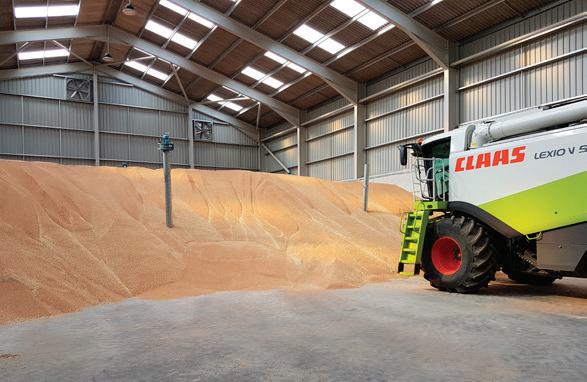
ties Autumn Conference in Devon, Mr Moody also suggested farmers should be open to exploring ‘generous’ Government funding in slurry storage to help ‘reduce emissions’ (see page 42).
“Farmers are getting carrots now, but under evolving legislation, they are probably going to have to do it anyway under their own resources; 2050 is only 27 years away and we are moving on to second-generation net zero discussions, with an absolute focus on renewable energy.”

By Alex Black
MAJOR egg producers conspired to limit US egg supplies to raise prices, an Illinois court has ruled.
The case stems from a federal lawsuit, originally filed 12 years ago, in which several large food manufacturing companies, including Kraft Foods Global and The Kellogg Company, alleged producers used various means to limit domestic supplies and raise prices during the 2000s.
A jury unanimously delivered its verdict on Tuesday in the Northern District of Illinois, with damages not yet decided.
The suppliers include the family company of an Indiana egg farmer running for the US Senate in the state.
The jury found that the egg suppliers exported eggs to reduce the overall supply in the US domestic market, as well as limiting the number of chickens through various means, including cage space, early slaughter and flock reduction, court documents said.

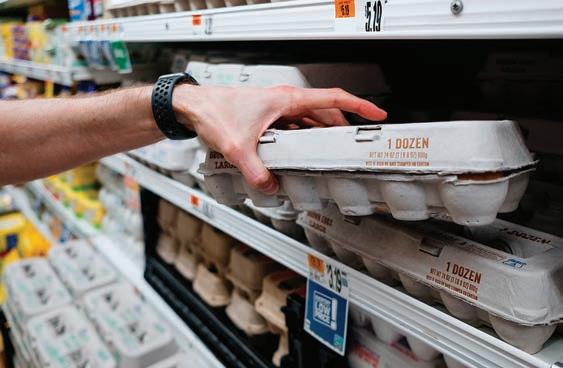
Brandon Fox, representing the food manufacturers, said in a statement, they were ‘incred-
ibly pleased’ by the jury’s decision.
“For the first time, the defendants have been held liable for their
anti-trust violations. We are now going to turn our attention to the damages phase.”
Court documents say the jury found the food manufacturers suffered injury in the timeframe of 2004-2008.
Jurors were specifically told not to consider more recent egg pricing during their deliberations.
The jury found the egg suppliers who participated in the conspiracy were Cal-Maine Foods, United Egg Producers, United States Egg Marketers and Rose Acre Farms, a southern Indiana-based company previously chaired by John Rust.
Mr Rust, who is running for Indiana’s US Senate seat in 2024, declined to comment on Wednesday, citing the ongoing litigation. Rose Acre Farms claims to be the second-largest US egg producer.



Is your land in a Severn Trent priority catchment? Thinking about farm environment improvements? We have a range of options and can match fund up to £30,000 APPLY NOW

Severn Trent Environmental Protection Scheme (STEPS) is open until 31 December 2023. It’s quick and easy to apply for match funding grants of up to £30,000.
You get the improvements you need, at the same time as helping protect watercourse and our environment. We can help you fund solutions like:
• Pesticide handling;
• Watercourse fencing;
• Cover crops and loads more.






Edited by Emily Ashworth


– 01772
After spending some time away, Frank Carr has found himself back at Lee Gate Farm and it is easy to see why.
Looking out over the vast landscape that makes up the 809-hectare (2,000-acre) family farm in the heart of the Yorkshire Dales National Park, even on the mistiest of winter days, the views are second to none.


There is, of course, like many other hill farms across the country, a story attached to Lee Gate, with Frank being the fourth generation to take on the land.
His great-grandfather, Henry, came to the farm on a tenancy in 1927, and Henry’s son, Frank, then continued the farm.

Lee Gate initially sat around 700/800 acres, all rented until it was bought in the 1940s. When Frank married his wife, Florence, they were able to buy a further separate 300 acres as Florence came with a dowry (although not commonplace in this country anymore, dowries still exist in other countries today).






It changed the farm’s story. As the next generation to farm, Frank, 32, believes his grandma was instrumental in pushing the farm forwards – and not just because of the financials.
“They were able to buy more fields, but she was a smart lady,” he says.
“She was actually a mathematician – pretty unusual for the time – and she gave that up to do

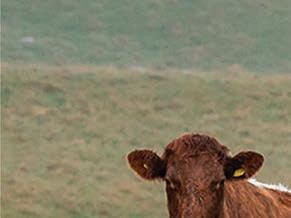


Frank Carr is happy to follow in his family’s footsteps. Emily Ashworth visits the young hill farmer to find out more.






all the bookkeeping for the farm.
“In the 1940s, hydram pumps were introduced, so the first reliable source of water was introduced to the farm. She really is who to thank for what Lee Gate is today; she laid the foundations.”
The farm, with 607 hectares (1,500 acres) owned and 202ha (500 acres) rented, was then run by Frank’s father (also called Frank) plus his uncle, Norman. It was originally run as a beef, sheep and dairy unit.


Frank says: “My dad says for as long as he can remember, the



farm, along with most others in the area, used to milk and take milk kits down to a local village for the train to Leeds.”
Unfortunately, foot-and-mouth put an end to this system, but Frank says his father wanted to move forwards, and at the time grants were encouraging farmers to fatten livestock.
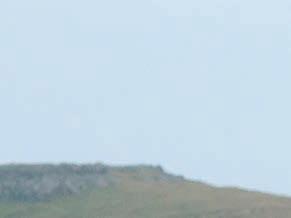

current system, rearing a variety of cattle such as Longhorns, Herefords and Shorthorns.
“It is quite unique in this area as we breed, store and fatten,” says Frank.
“A lot of people do one or the other, but it also gives us a unique marketing opportunity.”
They began running pedigree Highlands and were on a Waitrose contract, but the system evolved and they slowly moved towards what is now their





Sitting at 1,200 feet high, most of their land is a Site of Special Scientific Interest (SSSI) and the stock do well on rough grazing.
A few of the cattle go through the market, but the rest go to various outlets like a local butcher, Gordon Atkinson Elite Meats, Townend Farm Shop and more

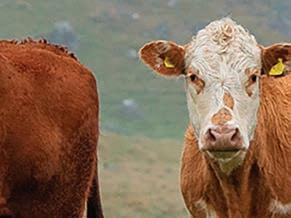


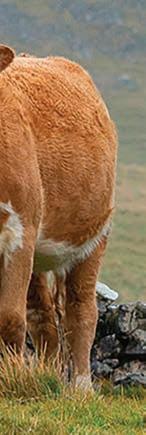






Days when you could be stood at your farm gate and the sun is shining, it feels like there are no problems at all FRANK CARR
recently, Butcher Farrell’s Meat Emporium.
The sheep are mostly Mules and Swaledales. Mules are lambed indoors in February and the Swaledales lamb outdoors around April.

Lambs go through Gisburn or Hawes market.
Farming in such landscapes brings its own challenges, and being situated in a national park they are bound by certain restrictions.
Along with the SSSI land, they are also in a special area of conservation due to the Craven Limestone Complex, which is home to priority habitats for upland flushes, limestone pavement and breeding wading birds.











Carbon traceability
Another challenge is carbon traceability and how to get comparative measures.
“There is not one common system; there are so many carbon auditing tools, and we need a baseline to work off,” says Frank.

He has implemented


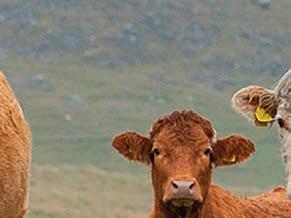
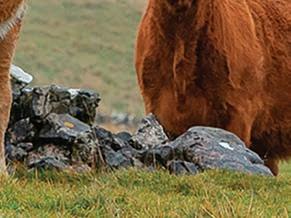



some new aspects too, in the hope of streamlining processes and moving forwards technically – his father, he says, is open to ideas.
He says: “The cattle are all weighed, and I would like to start on an EID system to streamline processes and get that digital traceability.”
The family’s social media account



showcasing life on the farm – which was started by Frank’s father initially – has racked up a huge number of followers too, with over 20,000 on Instagram.
Frank says: “It is about public awareness of different farming methods, and it is something you have to do if you want to move forwards.”
Nature is thriving too, perhaps encouraged by the changes they





have made over the years, and more thought is turning to the environment and the potential incentives.
Hedges have been planted as part of the Aire Catchment Flood Management scheme, and they are part of the Higher-Level Stewardship scheme. There is evidence that their methods are working: a multitude of fungi populate the field, plus waxcap mushrooms,




which are indicators of good biodiversity and soil health.
In the warmer seasons, the farm’s moorland is quilted with wildflowers: marsh orchid, grass of parnassus, lady’s bedstraw, field scabious and harebells, to name a few. Some of these wildflowers are very rare and, Frank believes, can only be found in a few select areas, including eastern Europe.
This is something that is not lost on Frank, and noticing the diverse flora is something he enjoys, and he would like, he says, to introduce more wildflowers.
Having had his time away from the farm, studying human physiology at Liverpool University and travelling, he has found his place at Lee Gate – especially having dabbled in an office job.
The ‘spectacular’ area the family have farmed in for over 90 years is more than just a business.
Frank adds: “It is a rewarding profession. My future is here. There has been no pressure – my dad never pressured me to farm. It is the heritage of it; I would like to carry it on. I would like to have children here and I will be like my father – I will not pressure them, but I would very happy,
Hedges have been planted on-farm as part of the Aire Catchment Flood Management scheme.

and proud, if they did carry it on.
“Days when you could be stood at your farm gate and the sun is shining, it feels like there are no problems at all. One or two good days can make the bad days worthwhile.”
■ Lee Gate has been in the family since 1927
■ The farm extends to 809 hectares (2,000 acres): 607ha (1,500 acres) are owned and 202ha (500 acres) are rented
■ Cattle are bred, stored and reared on-farm
■ Mules are lambed indoors in February, whereas the Swaledales lamb outside from April

Lambs go through Gisburn or Hawes market.

■ Cattle are varied, including Herefords, Longhorns and Shorthorns, and most go to outlets such as butchers
■ They are in a Higher-Level Stewardship scheme and have various fungi, wax cap mushrooms and an array of rare wildflowers on-farm









3,000+
















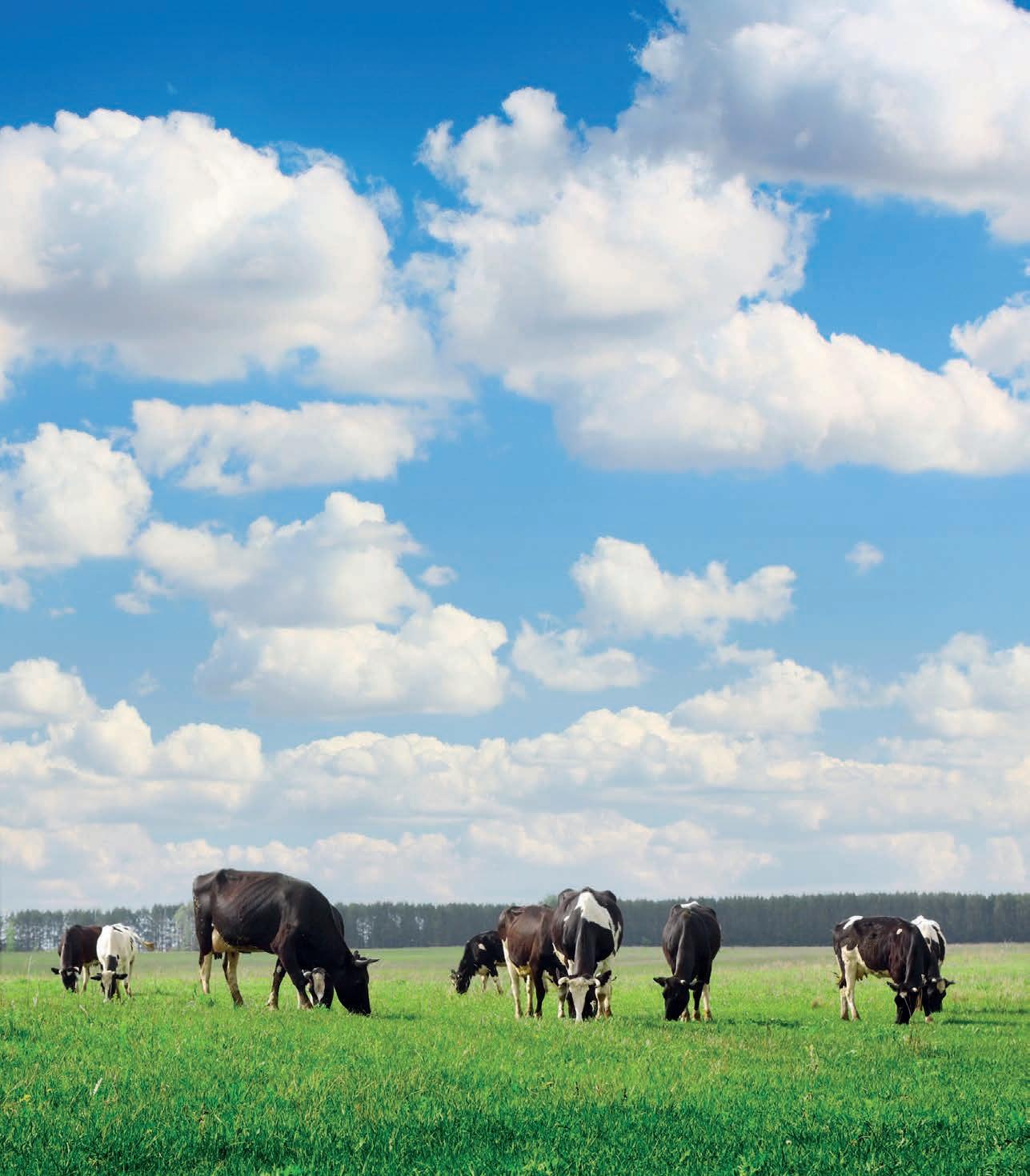






Edited by Teresa Rush – 07917
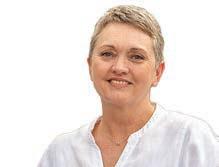

By Ash Ellwood
PLANT disease experts are advising farmers to keep a close eye on developments of Syndrome Basse Richesse (SBR) and Rubbery Taproot Disease (RTD), as they spread through Europe causing significant damage to sugar beet and other crops such as potatoes.
The diseases have not yet been found within the UK, however infected areas within Germany, Austria, and Poland are becoming larger with more severe symptoms reported.
There is also uncertainty surrounding the differences between the two diseases, as they are caused and spread by similar pathogens and vectors.
The British Beet Research Organisation’s head of science, Professor Mark Stevens, says: “We had a false alarm with SBR in the UK in the late 1990s at a time when it was first identified in France, but the conclusions were it was more a physiological or environmental problem rather than a disease.”


Both diseases cause extensive yellowing of the beet leaves, with necrotic edges, deformation of heart leaves and browning of the vascular bundles.
SBR can cause up to 5 per cent reduction in sugar content and a fresh mass reduction of up to 25 per cent.
RTD and SBR diseases can be caused by phytoplasma pathogens and are spread by leaf hopper vectors which Prof Stevens believes
to be species-specific, although some species of leaf hopper are in the UK currently.
Prof Stevens says: “You need both the leaf hopper and the [pathogen] to do the damage.
“I know we do not have that combination yet and now we just need to keep a close eye on [the disease spread].”
The South German Sugar Beet Growers’ Association (VSZ) and the International Confederation of
A NATIONWIDE study of commercial wheat crops has revealed a huge variation in the levels of soil-borne beneficial fungi.
The results indicate that soil management practice directly influences how much a wheat crop can benefit from arbuscular mycorrhizal fungi (AMF).
The study, carried out by the British On-Farm Innovation Network (BOFIN) and Crop Science Centre, looked at colonisation of wheat roots by AMF from more than 40 samples sent in by the Soil Squad — farmer members of the network.
All followed the same protocol to dig up and process the root sample from first wheat crops, most of which were the varieties KWS Extase or RGT Skyfall.
All growers who took part submitted details of cultivation practice, soil type and farming system.
Direct drilling resulted in the most root colonisation at 36 per cent, followed by shallow non-inversion tillage at 32 per cent, while the lowest proportion of AMF was found in deep tillage systems (27 per cent). Highest levels of AMF were found in organic systems at 50 per cent of roots colonised,
although only three organic samples were submitted. Most of the Soil Squad farmers claimed to be regenerative and these samples had significantly more AMF at 37 per cent than from conventional arable farmers at 26 per cent.
Colonisation tended to be highest in medium soils (36 per cent), followed by heavier soil types (33 per cent) with lowest levels found in light soils (25 per cent).
“The results on tillage practices are really interesting and pretty clear — less disturbance is better for these fungi,” says Dr Tom Thirkell of CSC, who led the project.
European Beet Growers (CIBE) say that the diseases make harvesting and processing sugar beet challenging with an increased soil tare.
Prof Stevens says: “The sugar beet root becomes soft and rubbery as the season progresses making both harvest and then slicing of beet at the factory difficult.”
At the time of writing, VSZ and CIBE were not aware of any evidence of these diseases (or vectors) coming to the UK — but they say this does not mean that it could not happen.
A spokesperson for VSZ and CIBE says: “The diseases are transmitted by certain species of cicada and, as far as we know, cicadas in the UK do not carry the relevant pathogen to transmit the diseases.”
You need both the leaf hopper and the [pathogen] to do the damage. I know we do not have that combination yet
PROF MARK STEVENS


rFirst grower meeting to be held December 5
A NEW project to help fine-tune storage practices has been established by a consortium of GB Potatoes, storage specialist Adrian Cunnington, of Potato Storage Insight, and agronomist Simon Faulkner, of SDF Agriculture.
Industry partners involved in the storage sector are being encouraged to sign up to the Strategic Potato Stores project, which has been based on the Strategic Potato (SPot) Farms model, run by AHDB Potatoes prior to its demise.
The first grower meeting will be held in Wisbech on December 5, and the first SPot Stores have been chosen; the potatoes loaded will be
used for trials. There are also plans for an open day in May 2024. Growers and their advisers attending the open days will get to see the setup and then return to find out how practices develop over future seasons, says Mr Cunnington.
He says: “Currently, there is a lack of practical research in storage, and very limited funding available for any research and development. Rather than revisiting old trial results on paper, we believe that practical activity will help growers better understand how to refine their own storage facilities’ performance.
“Working together to build better practice will help improve returns as we will be monitoring costs such as energy.”
The trials aim to demonstrate the contrasts of what can happen
in store, with a range of varieties subjected to different strategies.
“To be sustainable and make a margin, potato stores need to be profitable, so tuber quality needs to be good and costs need to be transparent and controlled.
“Seeing things done in a commercial set-up helps our hosts and partners share experiences with visitors who can then go home and confidently apply them in their own stores,” says Mr Cunnington.
Learnings from the SPot stores will also be shared at other workshops run by GB Potatoes in Yorkshire and Shropshire in 2024.
Mark Taylor, GB Potatoes chair, says: “At GB Potatoes, we are committed to supporting work on potato
storage strategies, with knowledge being shared across the industry.
“Our work will focus on ‘practical solutions’ which have the potential of immediate impact.
“Workshops, together with demonstration sites, will bring our industry together to share best practice and consider simple changes to refine farm practices.”
In addition, PCN-resistant varieties are being held in two stores in the south of Lincolnshire for additional evaluation. This follows the successful first year of field demonstrations held in conjunction with SDF Agriculture and Hutchinsons.
Mr Faulkner says: “This will assess the storability of useful PCNresistant varieties that are set to help growers develop an effective strategy against PCN.”
AN industry-wide consultation on the business case for implementing a digital passport for combinable crop movements began on Monday, November 20, 2023, and closes on Friday, February 2, 2024.
The business case will set out how the Digital Passport (Combinable Crops) system will operate, replacing the existing paper passport which has been in use for more than 30 years.
The electronic passport will, as now, be initiated by farmers with
input from hauliers, before being transmitted to receivers.
Switching to a digital passport is expected to improve data integrity and security, provide scope for real-time assurance checks, reduce costs across the supply chain and increase confidence and credibility for growers, buyers’ customers, stakeholders and regulators.
Live updates of assurance status, prior to the vehicle leaving farms, are expected to reduce the risk of delay
or rejection at the receiver’s site. The system will allow for data to flow simply and reliably between farmers, grain merchants and end users such as millers, maltsters and feed mills.
A spokesperson for the Leadership Group says that substantial time has been invested in developing a business case which addresses all aspects of the new system, from governance to development and operation.
“Operationally, it would be a
marked change, and we are now keen to hear views from stakeholders across the supply chain on the proposal,” says the Leadership Group.
The group are looking for feedback received during the 11-week consultation to assess support for the business case and whether it meets industry requirements.
MORE INFORMATION
For more information, visit ahdb.org.uk/digital-passport
Good decision-making with spring cropping is always important, but after storms curtailed winter wheat drilling across parts of the country, it could have added significance this season. Farmers Guardian reports.
rSpring barley area expected to increase
EVERY now and again a season strikes where the weather halts winter wheat drilling, says ProCam seed manager Lee Harker, which has happened in multiple areas this year.
Even if growing a ‘normal’ area of spring crops, he says attention to detail with crop choice and agronomy are important. But if relying on an increased area of spring crops for profitability, it is paramount, Mr Harker adds.
He says: “With any spring crop, factors such as its suitability to the land, securing a market for the harvested crop, and how it fits into the rotation are crucial to consider.
“However, good spring crop management can also have a tremendous impact on gross margin. From our own historical data, for example, a top-performing spring oilseed rape crop has given a higher gross margin than an average spring malting barley crop. Yet the average gross margin for the spring OSR was well below the average for the barley.
“This illustrates the importance of taking spring crop agronomy seriously. This starts with soil testing – but do not only test for levels of nutrients in the soil. Use testing that also indicates how much of each key nutrient is potentially available to the plant.”
On farms where winter wheat drilling has been curtailed, Mr Harker advises growers to avoid a knee-jerk reaction of thinking a spring crop is the only option.
He says: “Most winter wheat varieties can still be planted up
With any spring crop, factors such as its suitability to the land, securing a market for the harvested crop, and how it fits into the rotation are crucial to consider

Treat spring crop agronomy just as importantly as that for winter crops, if wanting the best margins, says ProCam’s Lee Harker.

until the end of January in suitable conditions, and some can be planted up until the end of February.
“They may not yield as well as autumn-sown wheat, but if you already have the seed and your land is dry enough, late-drilled winter wheat is worth considering versus the cost of spring seed.”
Of the spring crop options, Mr Harker predicts the spring barley area will increase in 2024 alongside demand for spring wheat seed, but supplies are likely to be extremely limited.
Mr Harker says: “As well as having the potential to deliver up to nine or 10 tonnes per hectare in the best situations, and a possible malting premium for the right variety and quality, spring barley can yield 4-6t/ha of straw; a potentially valuable commodity.
“All spring crops can help with black-grass management, but spring barley tends to tiller more than spring wheat, which provides useful crop competition. Spring wheat can also suffer more from ergot coming
from certain grass-weeds. Depending on location, spring barley also has more drilling date flexibility, although late drilling of any crop can delay harvest.
“However, a good seedbed is vital for successful spring barley establishment. Within reason, seedbed condition and soil temperature can be more important than drilling date.
“If growing spring cereals after OSR or pulses or on heavy land, soil nitrogen levels might be higher than expected. This is an added reason for accurate soil nutrient testing, especially with the sensitivity of spring malting barley grain protein to N levels.”
An alternative cereal option is spring oats, says Mr Harker, although loss of Extensions of Authorisation for Minor Uses (EAMUs) for grass-weed herbicides could make them a difficult crop for some.
He says: “Agronomically, spring
oats do offer good grass-weed suppression. But they can be late to harvest and difficult to sell unless you have a contract. Frit fly can also be a problem in a following winter wheat crop if oat volunteers, where eggs are laid, are not destroyed sufficiently early.”
Spring OSR can be a useful break crop offering rotational benefits, says Mr Harker, and can be drilled quite late, allowing extra time for stale seedbeds.
He says: “I have seen it drilled in May and still perform well. Again, drilling conditions can be more important than absolute calendar date, with moist, warming soils helping it to establish strongly. A vigorous Clearfield hybrid can be a good investment and help in the control of difficult weeds.
“The main pest concern with spring OSR is pollen beetle, so vigilance is needed. It is a classic example of a crop where attention to
Continues on page 28.






























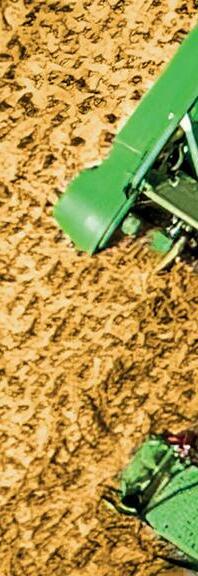






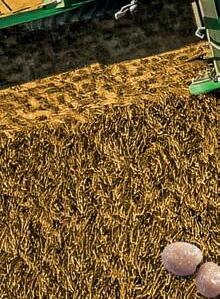



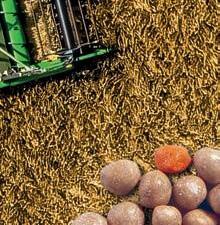












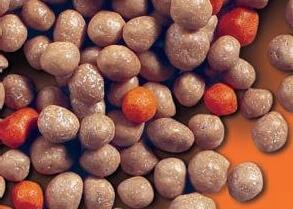




detail with agronomy is essential to maximise gross margin potential.”
As well as being break crops, pulses are useful N fixers, but the wet 2023 harvest affected germination in spring beans, so seed supply will be tight, says Mr Harker. Although, winter beans can be sown in spring, providing the seed rate is appropriately increased.
He says: “If using farm-saved bean seed, it is imperative to get it tested, including for stem weevil and ascochyta. Loss of herbicide EAMUs in beans could also make weed control more of a challenge.
“Peas could be an option, but be prepared for a potentially later harvest, which can compromise following crop establishment.”
Although a specialist crop that should ideally be grown on con-
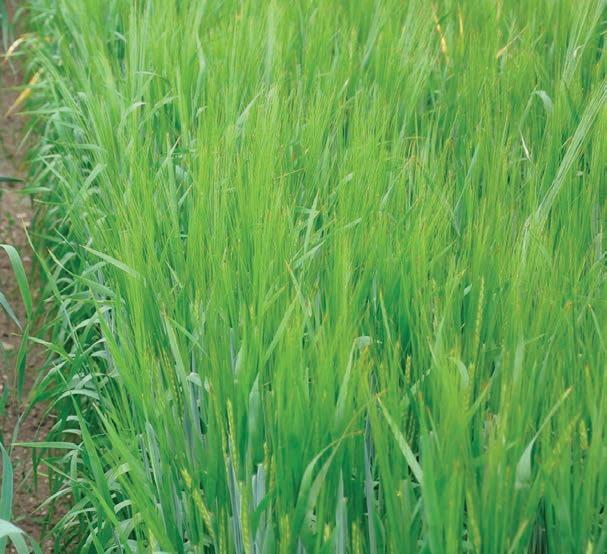
tract, there are some added value outlets for linseed, such as for omega 3 oil, says Mr Harker, and while it can remove soil moisture, good wheat crops can still be achieved after it. Like all spring crops, he says linseed needs to be properly planned.
Besides growing maize for anaerobic digestion or forage, consider growing grain maize if farming in a suitable area, suggests Mr Harker.
For livestock farms, he says grain maize makes a high energy feed for beef rations or crimping for dairy diets, or there is the potential to dry the grain for compound feed.
“If looking for a break crop to build organic matter, about 50 per cent of a grain maize crop at harvest is returned to the soil. This
LOSS of certain ‘off-label’ EAMU (Extensions of Authorisation for Minor Uses) herbicide approvals could make weed control in crops such as spring beans and spring oats more challenging in 2024, and may cause some to re-think crop choice, says Mike Thornton, head of crop production at ProCam. At the time of writing, he says there are two new herbicide registrations pending for spring beans, but oat growers have no grass-weed herbicide options available, apart from one product in seed crop oats.
Mr Thornton says: “It really will be a case of working with your agronomist to check which herbicides can and cannot
be used in each crop. Spring barley and spring wheat still have various on-label herbicide approvals, and there are still a few on-label approvals available for combining peas and beans.
“To help bean growers, we have been trialling various herbicide mixtures and dose rates, including existing products, with promising results.
“Where herbicide choices are restricted, agronomic techniques will become particularly important, for example choosing less weedy fields and making effective use of cultivations and stale seedbeds. Increasing seed rates and selecting

surface mulch makes harvesting easier and provides an excellent cover for farmland birds over winter. It is also a useful crop for capitalising on the nutrient benefits from applying digestate or slurry,” says Mr Harker.
“Although maize needs a contractor to plant and harvest it, its relatively late planting date offers an opportunity to tackle black-grass.
“Certain maize varieties, such as Rodriguez [KWS] and [Field options] Agagold, which have given consistent yields, have potential for all three uses – biogas, forage or grain maize.
“Watch points include fusarium, which impacts on standing power, so look for a variety with stem stiffness. And grain maize must be dried gently; it is harvested at about 35 per cent moisture and
taller varieties may also be worth considering. Although these increase lodging risk, this might be a compromise worth making.”
needs drying to about 14 per cent.”
If looking to improve soil health and give land a break, a Sustainable Farming Incentive NUM:3 legume fallow could be an attractive spring cover crop option on eligible land, says Mr Harker.
“You have to sign up for three years, but it pays £593/ha/year and is a legume cover crop so returns N back to the soil,” he says.
“Your agronomist should be able to help you check whether you can meet the requirements, and help you get the biggest benefit for your land. Use quality seed that gives plenty of biomass, rather than getting by with a thin crop.
“The greater the biomass above ground, the bigger the root biomass below ground, which will return more carbon to the soil via root exudates to benefit soil biology.”
Agronomic techniques will become particularly important
MIKE THORNTON
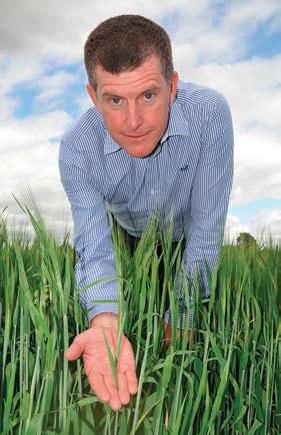






Explore the wide range of career opportunities beyond farming
hether
Jobs In Agriculture can help.



Whether you are seeking a new career path or aiming to further develop in your current role
eady









We are dedicated to connecting the right individuals with the right opportunities. With a diverse range of opportunities available, including on-farm positions, exciting roles in science and technology, engaging marketing and sales positions and more.






Ready to explore beyond farming?



It is time to open the gate to your growing career









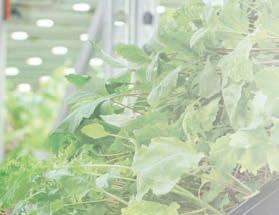







The agriculture industry provides roles that cater to every interest and skill set. Whether you enjoy working outdoors in the elds, prefer the company of machines and technology, or like working with numbers and science, there’s a role for you in this industry.

All you need to do is connect with the right people... It’s never too late to explore a career in agriculture! That’s why we will be there to help you nd the right path for your future at LAMMA 2024.








Edited by Angela Calvert –
THE online Woodies and Saltire reduction sale for Stuart Wood and Stasa Moyes, Skene, Aberdeenshire, hosted by Harrison and Hetherington, topped at £3,900.
This was for Saltire Blue Euphoria, a 2020-born Blue Texel ewe by Saltire Blue Casanova, in-lamb with twins to Quarryview Hank.
The buyer was Messrs Roberts, Shrewsbury, who also paid £2,900 for the Blue Texel shearling gimmer, Saltire Blue Giggle, by imported sire Saltire Blue Hulk, carrying twins to Sam’s Hercules.
Imported ewe
Making £2,600 was a 2019-born imported ewe, scanned with triplets to Quarryview Hank, which sold to Messrs Morrison, Girvan.
Beltex peaked at £2,600 for Woodies Honeycomb, a shearling gimmer
by Borderesk Finders Keepers, carrying twins to Vickys Gladiator, which sold to Messrs MacGregor, Glasgow.
Making £2,400 was Mellor Vale Gorgeous, a 2021-born Aviemore Festival daughter, in-lamb with twins to Smart Ass Jackpot.
It sold to Messrs Carroll, Huntly, who also paid £2,100 for Woodies Just Class, a Beltex ewe lamb by Shawtonhill Gypsy King.
Badger Face Texels sold to 1,900gns for a 2018-born imported ewe, in-lamb to Full Monty from the Woodies flock, which was bought by Messrs Pedley, Kirkby Stephen.
Messrs Millichap, Mid Glamorgan, paid £1,800 for Woodies Be Mine, a 2020-born ewe carrying twins to Geert, and Woodies Ewe Beauty, an imported ewe lamb.
Woodies Golden Girl, a ewe lamb by Tiptop Charlie, topped the Dutch Spotted section at 900gns, selling to Messrs Smith, Harrogate.
Auctioneers: Harrison and Hetherington.
LIMOUSIN bulls topped at 9,000gns at the North West Midlands and North Wales Club show and sale at Welshpool.
Sale leader was Sarkley Tom, an April 2022-born son of Loosebeare Fantastic out of Sarkley Ilanie, a Wilodge Fastrac daughter consigned by E.H. Pennie and Son, Mongomery. The buyer was Messrs Jones and Sons, Llanidloes.
Pabo Tex
Next, at 6,500gns, was March 2022-born Pabo Tex by Whitehall Larry out of Sympa-sired Pabo Jenelope from W.P. Hughes and Son, Anglesey, which was knocked down to Messrs Thomas, Knighton. Also selling for 6,500gns and from the same vendors was June


Sale leader, Saltire Blue Euphoria from Stuart Wood and Stasa Moves, Skene, Aberdeenshire, which sold for £3,900.
THE Winter Warmers show and sale of in-lamb ewes and ewe lambs at Melton Mowbray topped at 1,800gns for the pre-sale show breed and reserve inter-breed champion.
This was a Suffolk ewe lamb from G.I. Richmond’s Sullom flock, Preston. By Pyeston Real Deal, it sold to Jake and Emma Pamplin, Northamptonshire.
Making 1,000gns was Littlewood Hettie, a Blue Texel ewe lamb from Josh Geary, Milton Keynes, which sold to Ron Darlington, Hartington.
At the same money was a Suffolk ewe lamb from Pam Lupton’s Kexbeck flock, which was knocked down to E. Boby, Newark.
Texels topped at 840gns for the breed and inter-breed champion, a shearling ewe from Messrs Chaves, Peacehay flock, Wellington, which sold in-lamb to Teilo Fendigedig.
rick Flodden, from Robert Mawer and Emma Benge, Woodall Spa, which sold to C.A. Jessop, Colerton. New this year were Border Leicesters, which topped at 750gns for Cwm BLA35, carrying quads to Trinant Titanic from D.J. and G.A. Watkins, Hereford. The buyer was J. Simpson, Faringdon.
Also selling for the first time were Dorsets, which peaked at 480gns for S.D. Driver, Glossop, with ewe lambs to 320gns from Alex Birch, Baslow.
Charollais ewe lambs sold to 610gns for both A. and K. McNeil, Doncaster, and Deborah Whitcher, York, with Dutch Spotted ewe lambs to 600gns from A. Salt, Darley Moor.
2022-born Pabo Tank, also by Larry and out of Pabo Martha, a Norman Harvest daughter, which sold to Messrs Potter, Faringdon.
First prize winner, Garyvaughan Tecru, an April 2020-born bull by Meadowrig Pedro from C.V. Lewis and Sons, Buttington, made 5,500gns to Messrs Davies and Son, Builth Wells.
The reserve male champion, Woodmarsh Sultan by Wilodge Cerberus from M. and J.C. Gould, Shrewsbury, sold for 5,200gns to Messrs Walters, Usk.
AVERAGES
17 bulls, £4,901.03; 4 females, £2,415. Auctioneers: Harrison and Hetherington with Welshpool Livestock Sales.
Texel ewe lambs sold to 550gns for S. Cobbald’s Lavenham flock, Sudbury.
Blue Texel ewes sold to 750gns for Premier Glitz, in-lamb to Ett-
The annual commercial production sale from G.A. Stephens, Melton Mowbray, saw in-lamb four-tooth ewes top at 420gns, with Texel gimmers to 400gns. Auctioneers: Melton Mowbray Market.

Pre-sale show breed and reserve inter-breed champion, a Suffolk ewe lamb from G.I. Richmond’s Sullom flock, Preston, which sold for the top price of 1,800gns.
THE Stephenson family, Bordley, consisting of father John, son, also John, and daughter, Laura, claimed the prime cattle championship for the fourth time in five years at Skipton’s Farmers Guardian-supported Christmas show and sale.

for 369p/kg (£2,253) to Hagg Lane Farm, South Duffield.
June Dowie and Jennifer Hyslop, Settle, secured reserve supreme with their male champion, 630kg Turbo Tam, an 18-month-old black home-bred Limousin cross steer.
male reserve, a 560kg British Blue cross, made 375p/kg (£2,097) to Knavesmire Butchers.
The champion was a 630kg 16-month-old home-bred British Blue cross heifer which sold for the day’s top per kilo price of £4.54 (£2,863) to Jon Black, Wakefield.
The Stephensons also stood third in the same class with a 610kg Limousin cross heifer, which sold
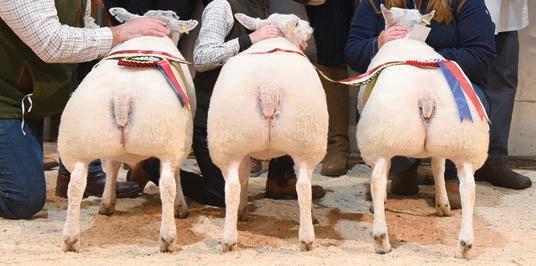
DEFENDING champions, Adrian and Kathryn Leach, Hebden Bridge, retained the supreme championship in the prime lamb section with a Beltex trio.
The 41kg victors were tapped out as continental cross class winners, then trimmed, lowland and supreme champions by judge, Clare Mellin, Long Preston, who later claimed them for the top price of £500/head (£12.19/kg) for Cropper Family Butchers and Deli, Accrington.
She also paid £4.51/kg (£170/head) for the reserve trimmed, reserve lowland and reserve supreme champions, the first prize 37kg Beltex cross trio from Jon Midgley, Luddendenfoot.
The Leach family also sold the third prize 45kg Beltex cross lambs for £4.41kg (£200/head) to Knavesmire Butchers.
Runners-up in both trimmed lamb show classes, again Beltex crosses, came from Brian and Linda Lund, Walshaw, with their 39kg trio making 428p/kg (£170/head), the heavier 42kg pen making 433p/kg (£185/head) both to Vivers Scotlamb.
The third prize under 40kg trio, 36kg Beltex from James Towler and Sammy Fawcett, Grindleton, made £5.55/kg (£200/head).
Ellis Bros, Addingham Moorside, stood both champion and reserve
in the untrimmed lambs section with red rosette-winning three-quarters home-bred Beltex trios. Their first prize 47kg pen made 436p/kg (£205/head) – the first prize 30kg trio 483p/kg (£190/head).
Clinching the hill lambs championship for the third year running were the Hutchinson family, Faceby, with a trio of 52kg Scottish Blackface wethers, which were knocked down at £140/head (265p/ kg) to Swaledale Foods, Skipton. Reserve hill champions also became a further Swaledale Foods purchase at 227p/kg (£125/head).
These were the first prize 55kg North of England Mule wether lambs from Kevin Wilson and family, Blubberhouses.
William and Michael Oldfield, Newsholme, clinched the supreme championship in the lamb carcase competition with their 41-44kg continental class winner, a home-bred Beltex cross with a liveweight of 41kg, deadweight 23.9kg, killing out percentage 58.2 per cent and AHDB grading of E2. It sold to the judge George Cropper, for the top price of £460.
Mr Cropper also paid £310 for the reserve champion, another Beltex cross and first prize winner in the under 41kg class from Clive and Trevor Robinson, Tosside.
It made 351p/kg (£2,214) when becoming one of 19 acquisitions by Robert Pearson, of Ralph Pearson Wholesale Butchers, Bradford.
From the same home, Fools Gold, a 780kg home-bred Charolais cross steer stood runner-up in the heavy class and was another Pearson acquisition at the top gross price of £3,648 (339p/kg).
Both the male and female reserve championships fell to home-bred class winners from John and Clare Mellin, Long Preston.
The latter, a 565kg Limousin cross sold at 377p/kg (£2,132) to Kitson and Sons Butchers, Crathorne, and the
A prize awarded to the best beast purchased from CCM Skipton went to a 650kg Limousin cross from the Critchley family, Hutton, which made 344.5p/kg (£2,239) to Pearsons.
The Critchleys also finished runners-up in a continental heifer show class with a 565kg heifer, which sold at 389p/kg (£2,200) to K. and J. Green Butchers, Chorley.
Francis, Andrew and George Smith, Masongill, won the heavyweight class with a 730kg red Limousin cross bullock, which made 363p/ kg (£2,653) to Kitson and Sons.
The unhaltered champion from Jim and Christine Scrivin, Elslack, was a 550kg British Blue cross heifer, which was also the best home-bred beast and made 357.5p/kg (£1,966).
Auctioneers: CCM.

DANIEL Thackray, Prospect House Pietrains, Fewston, was supreme champion in the prime pig show classes for pens of three with his first prize cutters, 94kg pure Pietrain, which sold for top price of £3.50/kg (£329) to judge Luke Swales, Knavesmire Butchers.
From the same home, the second
prize 77kg trio made 220p/kg (£169.40/head) to Stephen Taylor, W. Taylor and Son Butchers, Bamber Bridge. The same buyer also paid 280p/kg (£300/head) for the 107kg first prize winners from the baconers class and overall reserve champions from Tom Dyas and Callum Smith, who trade as W. Berry, Doncaster.
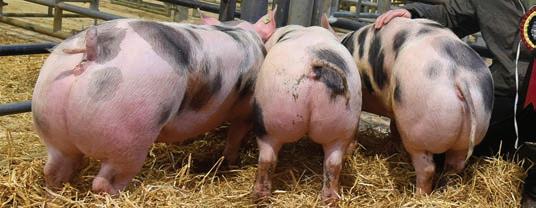
To be in with your chance of winning up to £200, test out your judging skills by entering our annual beef stockjudging competition.
This year’s beef stockjudging competition is now open for entries. Our annual competition is once again sponsored by Show Time, supplier of specialist livestock products for cattle, sheep, horses and other animals, covering the UK and Europe.
How to take part
Take part by pitting your judging skills against those of our professional judge to be in with the chance of winning one of three cash prizes.
The first correct entry to be drawn at random will receive our top prize
of £200, while two runners-up will each win £50. To be in with a chance of winning, you need to rank the four animals pictured (one being the animal you rate most highly), in the same order as our judge.
Complete the entry form opposite and return it to: Showtime Stockjudging Competition, Farmers Guardian, Unit 4, Fulwood Business Park, Caxton Road, Fulwood, Preston, Lancashire, PR2 9NZ, by January 15, 2024.
ENTER ONLINE
Alternatively, you can enter the competition online at farmersguardian.com/showtimestockjudging




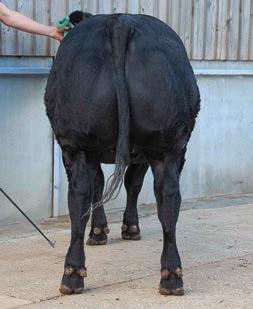
















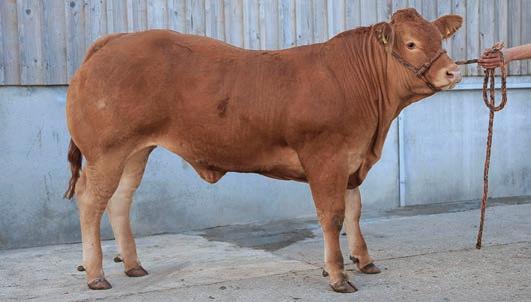
THE Christmas dairy show and sale at Bentham topped at £3,300 for the reserve champion and winning pedigree heifer, Killington Magician Wendy, from J. and R. Waller, Killington.
The buyer was Graham Stephenson, Kirkby Lonsdale. Next, at £2,950, was Luptonhall River Bessie 2, a pedigree heifer from Brian Robinson, Ingleton, which was knocked down to John Howard, Skipton.
The day’s champion and first prize pedigree cow, Hallcroft Feul Blueblood, from Edward, Angela and Charlotte Booth, Wigglesworth, sold for £2,850 to judge John Lawson, Cockerham.
A Jersey giving 24kg from Messrs Waller sold for £2,500 to Mike, James and Rachel Batty, Burneside, Kendal.
Many heifers sold from £2,300£2,700, with cows at £2,200£2,500. A quartet of bulling heifers from Messrs Waller topped at £900 to average at £825.
Auctioneers: Richard Turner and Son.
ZWARTBLES sold to £1,050 at Dingwall for the pre-sale show champion, Janetstown Eynhallow; a five-crop ewe from Sammy Stewart, Janetstown.
The buyer was Lorraine Crum, Torranyard flock, Kilmarnock, who also paid £1,020 for the second prize winner and reserve champion, Janetstwon Glow, from the same home.
The winning ewe lamb, Janetstown Ladyship, also from the same vendor, sold for £500 to Andrew Bateman, Kendal, for the Holmepride flock.
Carrie, Sarah and Iain Bissett, Carrah, took £360 for home-bred Carrah Latte, which sold to the judge, Nicola Henderson, Stirling, for the Aquila flock. Jen Birtles and Lesley Grant, Romach, sold to £280 for Romach Lusitania, which went to Sammy Stewart.
Commercial crosses sold to £111 for Messrs Munro, Portmahomack, and J. MacLeod, Portgower. Auctioneers: Dingwall and Highland Marts.
A EWE lamb from Messrs Gibb, Cairnton, led the trade at 1,900gns at the Suffolk Supremes sale of pedigree females at Lanark. The Bridgeview Belvenie daughter out of a Millhouse Remarkable sired home-bred dam sold to Messrs Barkley, Blackbrae flock, Ballymena.
Next, at 1,800gns, was a gimmer by Bridgeview Bill from Messrs Scott, Strathview, which sold, carrying twins to Forkins Faultless, to Messrs Robertson, Lochwinnoch.
A gimmer by Muirton Double Diamond, carrying a single to Westcarse Immaculate, from Messrs Christie, Westcarse, sold for 1,600gns to Messrs Henderson, Perth.
Making the same money was another ewe lamb from Messrs Gibb, this time by Frongoy Firepower and out of an Cairness Agent sired dam.
The consignment from Messrs Douglas, Cairness, topped at 1,200gns for a Cairness McCoy sired gimmer, in-lamb with twins

to Cairton Ninety Nine, which also went home with Messrs Robertson.
Topping the aged ewes at 1,100gns was Messrs Craft, Lakeview, with a 2016-born, Solwaybank sired daughter carrying a single to Ballynacannon Playboy, which was a previous Royal Highland Show breed champion. It sold online to Messrs Garland, Aghafad flock, Northern Ireland.
to Messrs Barkley, Ballymena.
Also selling for 1,100gns was a gimmer from Messrs Douglas, Cairness, by Cairness Mike Tyson and carrying twins to Cairnton Ninety-Nine, which was knocked down to Messrs Duckworth, Floors Farming, Ayrshire.
AVERAGES
Overall, 61 head, £750.49; 16 aged ewes, £666.09; 37 gimmers, £734.13; 8 ewe lambs, £993.56.
Auctioneers: Lawrie and Symington.
AT Lanark’s Christmas show and sale of prime cattle, the judge, Jamie Chapman, Chapman Butchers, Wishaw, chose as champion a Limousin heifer from D. Dickinson, Canobie, which sold for 440p/kg to J. and H. Cairnes Butchers, Law.
The reserve champion was a
Charolais heifer from J. Warnock, Biggar, which made 345p/kg to S. Collins Butchers, Coatbridge.
Limousin bullocks sold to 340p/kg for Messrs McFadzean, Perth, to Bowland Foods, Preston, and to £2,129 for Messrs Lindsay,
Whitburn, to Chapman Butchers, Wishaw. Beef cows sold to £2,650/ head and 287p/kg for Messrs McGarva, Biggar.
Dairy cows sold to £1,470/head from Messrs Whyte, Lesmahagow and to 162 p/kg from Messrs Wilson, Cupar.
Auctioneers: Lawrie and Symington.
AT Leyburn’s Christmas store cattle show and sale, the judge, Brian Phillips, Northallerton, awarded the championship to Guy and Oliver Hird, Whashton, with a Limousin heifer which sold to Brandon Acton, Leyburn, for £2,600. The heifer also took the J. Duffus Cup for best Limousin and the Leyburn Mart Canteen Trophy for best home-bred, presented by Anne Sunter.
Alan Kendall, Reeth, took the reserve championship with a Limousin steer, which made £1,830 to Mick and Liam Rodney, Masham.
The second prize winning Limousin steer from Bainbridge Bros, Marrick, sold for £1,800, and the third prize winner from Nick Wilson, Grewelthorpe, made £1,790.
The winning bull was a pedigree
Limousin from David Amsden of A. and J.A. Iveson, Hawes, which later sold as a breeding bull to Geoffrey Porter and family, Reeth, for £3,600.
The second place bull, which was from Sam Whitehead, Sedbergh, made £1,830, and the third place bull from the Porter family, Low Oxnop, made £1,650.
Auctioneers: Leyburn Auction Mart.
rOverall reserve goes to Limousin cross bullock
A LIMOUSIN cross heifer from Wilson Peters, Monzie, stood overall champion at the Aberdeen Christmas Classic at Thainstone. The February 2022-born 620kg heifer, by Uptonley Living the Dream and out of a Limousin cross dam, sold for the top price of £4,800 to Scott Watson, on behalf of B.T. Kitson Butchers, Hutton Rudby.
Mr Peters also took the champion butcher’s award with a home-bred 522kg Limousin cross heifer by Carmon Lionbar, which sold for £3,800 to Alistair Bruce from Bruce of the Broch Butchers, Fraserburgh.
The overall reserve championship went to W. Robertson and Son, Tomintoul, with a home-bred 734kg Limousin cross bullock, which sold to John-Paul and James Duxbury, RPD, for £3,000.
Anna Fettes, Braes of Enzie Buckie,

Overall champion, a Limousin cross heifer from Wilson Peters, Monzie, which sold for £4,800 to B.T. Kitson Butchers, Hutton Rudby.
stood Young Farmers’ champion with a May 2022-born 644kg Limousin cross heifer, which sold for £3,000 to Border Meats, Lockerbie.
A 664kg British Blue cross heifer
THE show and sale of pedigree sheep topped at 5,000gns twice for Suffolks. Firstly, for the champion - a gimmer by Creweland Kingpin from the Innes family, Huntly, which sold to Craig Paterson, Aberchirder.
Matching this was a Suffolk ewe lamb by Forkins Firecracker from G.L. Stuart, Ellon, which sold to Neil Benzie and Vicki-Maree Milnwood, Turriff. Another ewe lamb from Messrs Innes sold for 3,200gns to S. Craft, Glenrothes.
The Innes family also had the champion Texel, which sold for 4,000gns. A Texel gimmer from Kenny Pratt, Peterculter, sold W.J. Knox, Turriff, for the same price. A Texel gimmer from Robbie Wilson, Turriff, sold for 3,500gns to K.W. Hourston, Stromness.
The Blue Texel champion was a gimmer from W.J. and M. Hunter, Insch,
which went on to sell for 1,500gns to the judge, Katrina Rendall, Nairn.
Zoey Rennie, Keith, claimed the Beltex championship with a gimmer which sold for 950gns to R. Mumro, Sutherland, and also topped the section at 1,000gns with a gimmer which sold to an online bidder.
Bluefaced Leicesters reached 850gns for a gimmer from Matthew Seed, Cuminestown, Turriff, which went to O. Jones, Llandrindod Wells.
The Dutch Spotted section saw a ewe lamb from G. and I. French, Cornhill, achieve 900gns to Tom Rendall, South Nesting.
AVERAGES
22 Suffolk gimmers, £1,589.31; 14 Suffolk ewe lambs, £1,526.25; 50 Texel gimmers, £1078.98; 6 Texel ewe lambs, £880.25; overall 154 head, £965.73.
AT Pateley Bridge’s Christmas show and sale of store cattle and feeding bulls, the judge, Brian Phillips, Northallerton, awarded the championship to a British Blue heifer from D. and F.J. Leeming and Sons, Ramsgill, which later sold for the top price of the day of £1,920 to Rodney Bros, Masham. The reserve championship went to a Limousin steer from J.W. Stockdale
and Sons, Burnsall, which sold for £1,900 to Henry Atkinson.
The top price bull, at £1,745, was the first prize winner; a British Blue from I. Barrett and Son, Summerbridge.
The first prize Limousin steer under 12 months, which sold for £1,200, was from Charlotte and Andrew Warren, Cleckheaton, who donated the proceeds to Yorkshire Air Ambulance.
bred by the Robertsons, Logierait, and exhibited by Blair Duffton and Steven Smith, Huntly, realised £4,026 (610p/ kg) to Sunnyhill Farms.
The unhaltered cattle champion
from H.D. Brown, Maud, was a home-bred 572kg Limousin cross heifer which sold to Ryan Briggs of Briggy’s Quality Butchers for £2,308.50 (405p/kg). In the Young Farmers’ unhaltered section, the championship went to Thomas Hall, Longside, with a 620kg Limousin cross heifer, which sold for £2,340 (390p/kg) to Munros of Dingwall. W. Robertson and Son, Tomintoul, took the championship in the Rising Stars Calf Show with a February-born Limousin cross bullock by Beaumont Pacman. The Young Farmers’ champion award went to Finlay Hunter, Culsalmond, Insch, with a home-bred, June-born Limousin cross bullock by Johnston Premier.
AVERAGES
43 heifers, 390.5p/kg; 20 bullocks, 345.7p/kg.
Auctioneers: Aberdeen and Northern Marts.
IN the prime lamb section, the top price of £350/head was paid for the Young Farmers’ champion pair of lambs from William and David Moir, Cairness.
Weighing 44.5kg each, they sold to J. Gordon and Co, Forbes. They also took the prize for the champion pen of lambs with a pair of continental lambs weighing 44kg, which sold to the judge, Bill Cameron, Keith, for £320/head.
Reserve champions were a pair of
53.5kg Texel crosses from W. and J. Brown, New Deer, which sold for £200/head, also to the judge.
The champion butcher’s lambs from Messrs Smith, Kildrummy, were a pair of 42.5kg Beltex crosses, which made £200/head to John Munro, Dingwall.
AVERAGES
Prime lambs - 52 pairs, 329p/kg (£153.13/head).
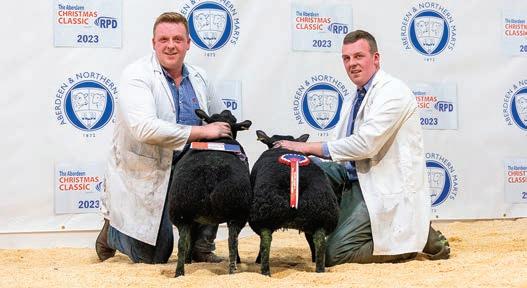
Top price prime lambs from William and David Moir, Cairness, which were sold for £350/head to J. Gordon and Co, Forbes.
The mart donated 10 per cent of the purchase price, along with £100 from Julia Hardcastle and team in the mart cafe, totalling £1,420. A sum of £300 was also raised for the Harro-
gate special care baby unit through the sale of a cake donated by Bethany Warin, plus other cash donations. Auctioneers: Barnard Castle and Teesdale Farmers Auction Mart Co.
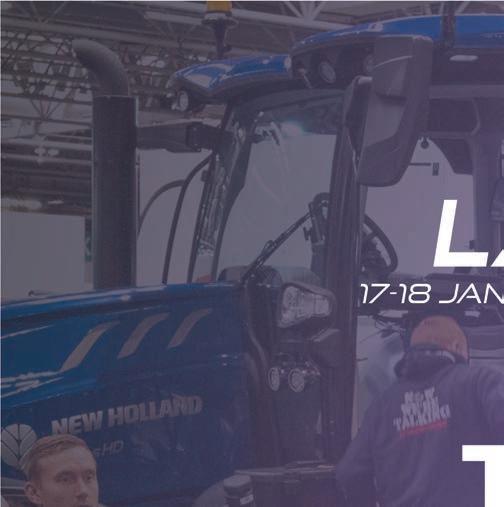






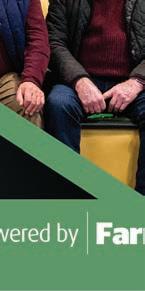




We take a look at upcoming grants, which options are still missing from the Sustainable Farming Incentive and why timing and short application windows impact applications.
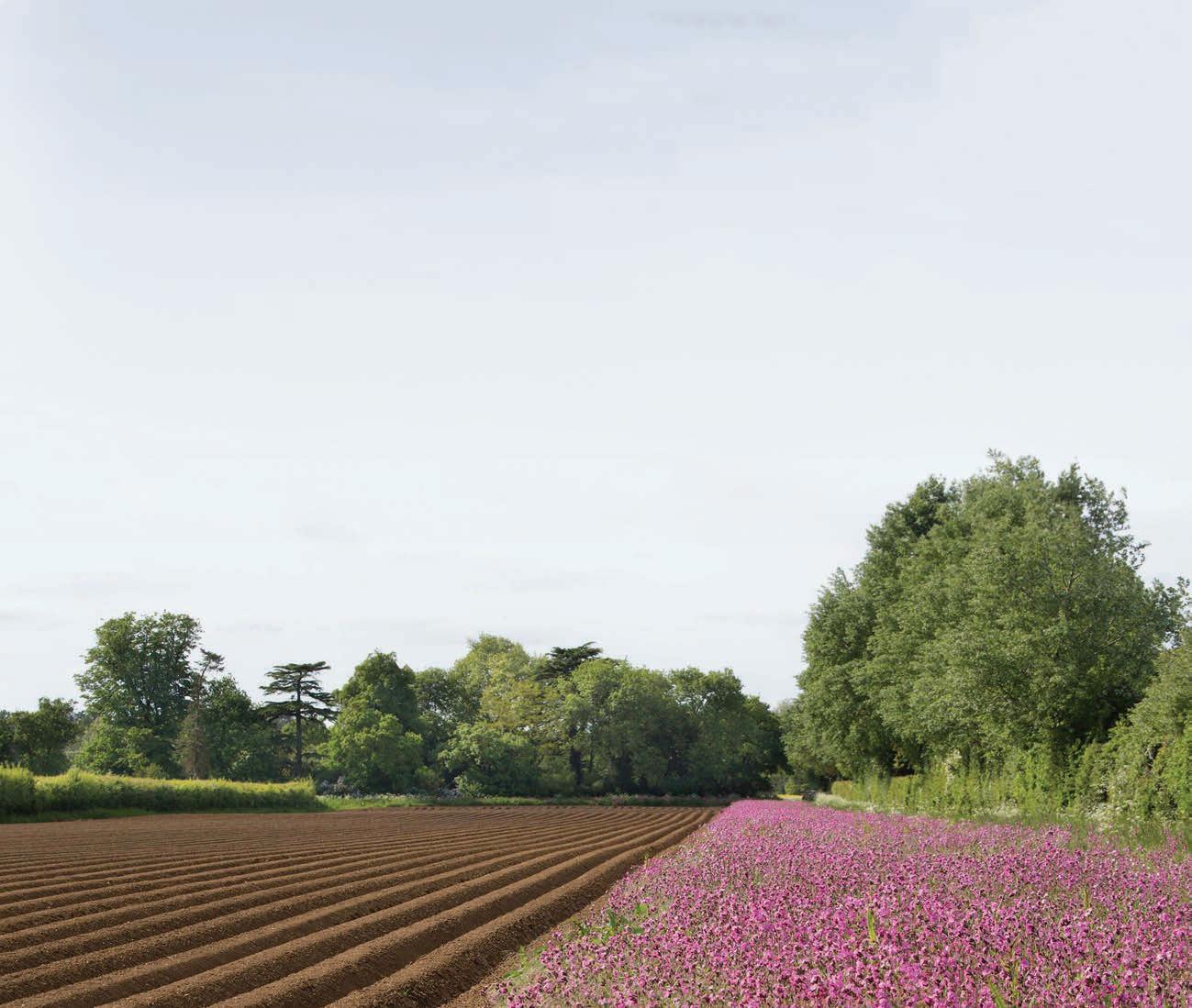
When it comes to uptake of the Sustainable Farming Incentive, about 6,600 applications have been started but not yet submitted.

By Rachael Brown
Some farmers are taking a look at the Sustainable Farming Incentive (SFI) then standing back to deliberate how the scheme might or might not fit into their farming businesses.
The idea of not hitting the submit button on the online application form and essentially delaying any further commitment to joining SFI at this point in time has been reflected in the latest Defra figures.
When it comes to SFI uptake, about 6,600 applications have been started but not yet submitted. This mood of hesitancy is also backed up by the fact that only 1,700 agreement offers have been accepted and only 800 of those agreements are live with farmers delivering on the required outcomes.
NFU senior adviser Claire Robinson, who leads on the union’s development work on the future environmental scheme, said an update
on SFI was expected from Defra soon. But with there still being a mixture of existing schemes, she called for more clarity around the total offer when it comes to SFI, adding that it needs to be simplified to make it easier for farmers to commit to business decisions. She said: “For farmers already in
agri-environment schemes, they need to know how they can transition to a new Environmental Land Management [ELM] scheme or stack the new ELM offers with their existing agreement.”
Ms Robinson said it was important the incoming announcement covered how Defra was going to support the
industry through productivity grants and what this offer looks like in the next couple of years.
She said: “It would be good to have a roadmap for further development of ELM for the next couple of years. There is a need to address gaps in the offer, including greenhouse gas audits, better provisions for permanent pasture and sectors which cannot access ELM, for example horticulture.”
She also reiterated the need for a fair incentive to be offered to improve uptake to the schemes and in recognition of ongoing maintenance and environmental delivery.
Latest Defra figures stated agreement offers had been issued to nearly 2,150 farmers, but only 1,700 had accepted the offer.
Ms Robinson said: “Farmers need to be confident that SFI can fit into their farming system. Equally, Defra needs to demonstrate that the monitoring regime is supportive if things do not go quite to plan.”
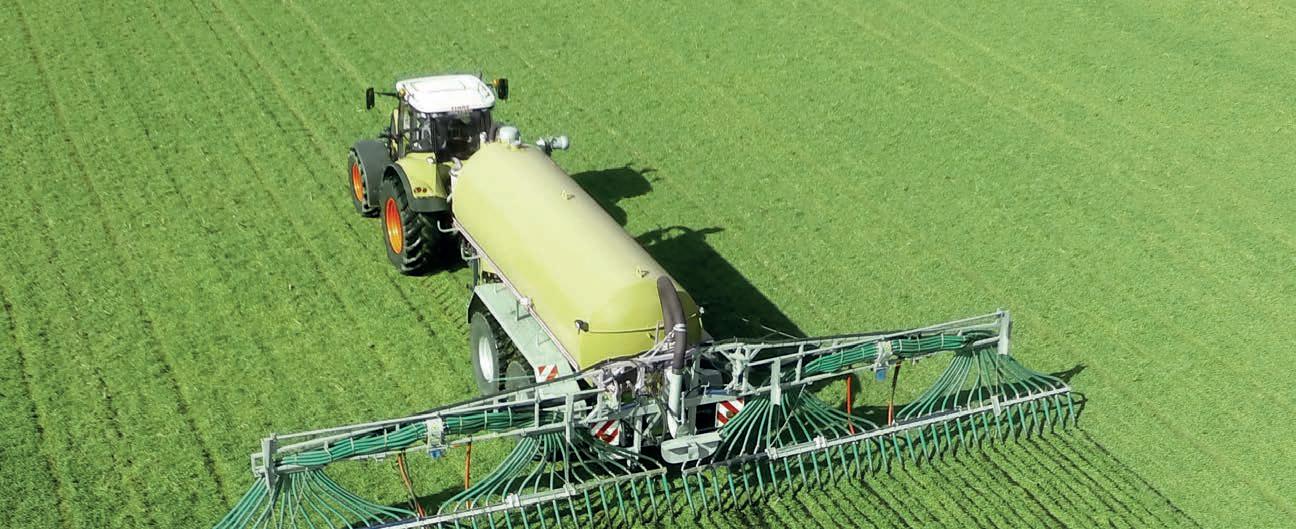
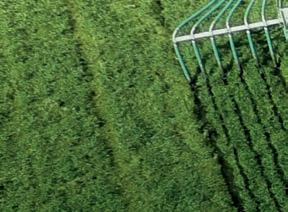


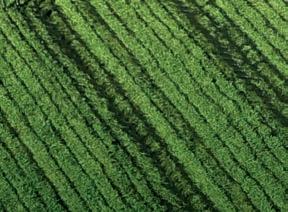


Flexible, reliable and easy to maintain:



As a pioneer in agricultural technology, Vogelsang leads the way in environmental friendly spreading equipment. The dribble bar systems combined with the ExaCut distributor give the highest application of liquid manure nutrients.
Dribble bars are available in working widths of 7.5m right up to 36m and are retrofit-friendly.
For more information visit www.vogelsang.info/en-uk/dribble-bar-systems
VOGELSANG – LEADING IN TECHNOLOGY
Contact us at: 01270 216 600 | sales.uk@vogelsang.info vogelsang.co.uk













WITH a General Election around the corner in 2024, the availability of funds, such as the Farming Transformation Fund Adding Value grant, was ‘even more important to apply for and chase’ while it is still there.
That was the message from rural adviser and director of agribusiness at S.R.H. Agribusiness, Simon Haley, adding that relying on future funds and grants to exist in the same manner ‘would be naive’.
It has been over a year now since the initial expressions of interest window was opened for this grant scheme, with the full application deadline rapidly approaching at the end of January 2024.
Mr Haley said: “If you are expecting this funding contribution to significantly transform aspects of your business and income streams, take the initiative and take control in your hands now rather than leaving it to the whim of a Whitehall bureaucrat or a
Treasury official, who suddenly decides come a new administration that farming has had enough support the last decade.”
He said this opportunity should not be dismissed lightly.
He said: “Others have already come forward with a full application, had that appraised, been approved and started the work, so funds are being allocated and spent already, allowing businesses to reap the rewards of a competitive process.”
He said the scope of the grant was ‘very generous’ and could be used for buildings, machinery or equipment, including secondhand, as long as the value was being added to eligible agricultural products after they are harvested or reared.
He said: “At a minimum grant of £25,000 to a maximum of £300,000 at 40 per cent rate, for those large projects, it really is transformational, as the name of the grant suggests.”

By Rachael Brown
While the industry is hearing that some farmers are choosing to ‘stand back’ to consider their options when it comes to the Sustainable Farming Incentive (SFI), others, more than 2,000 of them, are applying and getting their agreements offered within a few weeks.
But when it comes to the application process, the delivery and the options available to farmers, there are some inconsistencies, which the industry hopes will be ironed out in the next SFI announcement.
NFU rural adviser Claire Robinson said while some applicants were ‘flying through the application process’, others were coming across technical issues, the biggest challenge related to mapping.
She said: “The land cover and area for a field needs to match the land use
for the field. If it does not, it leads to the computer saying ‘no’.”
Where the current SFI does contain something for most grassland and arable farmers, Ms Robinson said improvement to the upland offer was required, as backed up in recent modelling work by NFU.
On paper, the arable payments are more generous than for grassland or livestock systems
CLAIRE ROBINSON
Despite the pushed narrative from Defra, from the very beginning, that upland farms would not be left behind and be left with a cliff edge in funding, the NFU’s latest modelling work demonstrated that under current payment options, on average, upland farm businesses suffered an income loss of about 37 per cent.
Ms Robinson said: “We are concerned that long-term permanent pasture grasslands will not easily fit into the grassland actions on offer. These grasslands should be rewarded for the carbon capture they deliver.
“On paper, the arable payments are more generous than for grassland or livestock systems. That is before you take into account the costs of doing those options, and those costs will vary by farm.
“Most of the arable options require the land to be taken out of production and require a seed mix to be sown, plus ongoing management which was not
part of normal crop management. On more productive land, payment rates will not be attractive enough.”
When it comes to dairy, SFI incentives have left many farmers feeling underwhelmed, but at least there were SFI actions they could engage with, from legume or herbal ley, soil testing and nutrient management planning.
But Ms Robinson said that these actions were ‘not always straightforward’ and that additional options to reduce ammonia and improve slurry management would be welcomed, such as slurry analysis and further support for ‘low emission slurry applications, such as injection and dribble bars’.
It was not only uplands and dairy that SFI had struggled to engage with, there was criticism for the lack of options currently offered to fit in with poultry, pig and horticulture farm businesses.
Defra has been working to smooth out and simplify its application and approvals process for grants in England. Olivia Midgley reports.
With area-based payments almost disappearing from next year, farmers have been urged to take another look at the plethora of grants available.
Defra has been offering various funding streams to support farming businesses keen to invest in food production, animal health and welfare and the environment for a number of years, but the process has not always been easy.
For some it has been tricky and time-consuming, with the end result not always worth the time and effort put into the application.
But Defra has been working to simplify and smooth out the process and Sarah Evered, the department’s head of farming, productivity and innovation policy teams, has sought to reassure businesses there is a lot to be gained.
Speaking at the Farm Business Innovation Show at Birmingham’s NEC (November 15), she said: “We have changed our relationship with farmers. In the past it was fraught and the service you received did not live up to expectations.
“We have tried to simplify the process of how we work and we want to work closely with you all.”
Highlighting the series of schemes which give one-off payments for equipment, infrastructure and technology, she said a key focus was ‘supporting farmers to make the changes which need to happen’.
“We know we need to reach out and make funding as accessible as we can to all businesses, from upland farmers, tenants and farmers in all sectors. We have looked to modify what we are doing,” she told a packed seminar on grant funding.
At the heart of schemes such as the Farming Investment Fund is the drive to support innovation and productivity, animal health and welfare and help to deliver environmental outcomes. Competitions for funding will top £133 million in 2023. With some farmers put off by the
■ DEFRA’S BLOG: defrafarming. blog.gov.uk/2023/03/02/grantsavailable-in-2023
■ RURAL PAYMENTS AGENCY
WEBSITE: gov.uk/government/ organisations/rural-paymentsagency


application process and fears that they do not have time to apply, Ms Evered sought to allay concerns.
“The application process is taking 15-20 minutes from start to finish,” she said.
“It could be quicker if you have all your holding numbers and other details to hand.”
She advised those waiting to see what might be on offer in 2024 to look at the 2023 suite of schemes for advice and guidance.
The guidance will remain largely unchanged next year.
However, after each funding round, farmers are surveyed to enable Defra to refine the list of items eligible.
Ms Evered added: “In early 2024, we will review the list of items and see if other items should be on the list for next time and if we need to alter the specifications. This is really helpful
■ Each scheme has its own set of rules; access the handbook for each scheme on the Defra website
■ For schemes such as the Farming Equipment and Technology Fund, each item on the list is scored against Defra
for us and we do take these additions on board. The general gist on how the scheme runs will remain largely unchanged.”
In terms of what is coming up in 2024, she urged businesses to look at the Farming Transformation Fund’s
It could be quicker if you have all your holding numbers and other details to hand
SARAH EVERED
criteria around productivity, innovation, the environment and animal health welfare
■ The items with the highest scores will receive funding first
■ For the Farming Innovation Fund, in conjunction with Innovate UK,
Improving Farm Productivity grant manual, which can be found on the Defra website.
“There is guidance on scope, but the overall budget of £30m will be split between robotics and automation and we have lowered the threshold down to £25,000 to make it more accessible.”
On accessibility, Ms Evered said Defra was aware of the financial pressures many businesses were facing at the moment and, with schemes such as the Farming Equipment and Technology Fund, it had lowered the threshold to £1,000.
“We recognise that making these investments is tough in this climate at the moment,” she said, adding the department was ‘highly oversubscribed across all our schemes, so it is competitive but we do try and put that flexibility in where we can’.
assessors will assess the viability of a project and use a set of criteria to assess which ones show the most promise; this may be a prototype for a piece of technology or equipment developed on-farm
Applicants for round two of the Landscape Recovery Fund should now have heard if their project passed Defra’s ‘value for public money test’ and if it has the credentials to deliver the ‘landscape-scale impact’ Defra was looking for.
The selected projects will now begin their two-year development phase to finalise arrangements before the environmental projects are able to get properly underway.
Rachel Bagshaw, associate director and head of land agency at H&H Land and Estates, said Defra was expected to offer up to 25 of the highest-scoring projects a place on the scheme, with the total project development budget available being up to £15 million.
She said: “The maximum amount of


development funding per project was £750,000. But in round one, Defra had stated it would fund 15 projects and accepted 22 applications deemed to meet the scheme’s criteria.”
Round two was intended to support projects which have a focus on net zero, protected sites and wildlife-rich habitats. Applications would also have to demonstrate extra environmental and social benefits, including improved
water quality, helping species recovery, enhanced soil health, increased resilience to natural hazards, such as floods, as well as increased physical access and engagement with nature.
Ms Bagshaw added the schemes provided long-term public funding over 20 years, supporting projects that take a long time to deliver outcomes, such as peatland restoration, woodland management or habitat restoration.
“What makes these projects pass Defra’s fundamental ‘value for public money’ test is their landscape-scale impact, which will usually require groups of landowners and farmers working together and making a longterm commitment to manage the land in this way,” she said.
Ms Bagshaw emphasised the application process was competitive, with 51 projects submitted for Defra’s stated 15 approvals in round one. She said: “The technical complications of this scheme and the requirement for collaboration can be off-putting for many landowners and farmers, but there is expected to be a similar level of competition for round two funding, and here at H&H Land and Estates we are helping to support applications for three clients in Cumbria alone.”






























































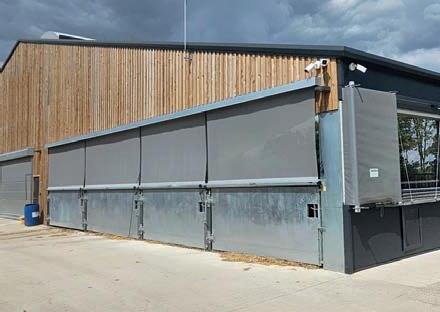
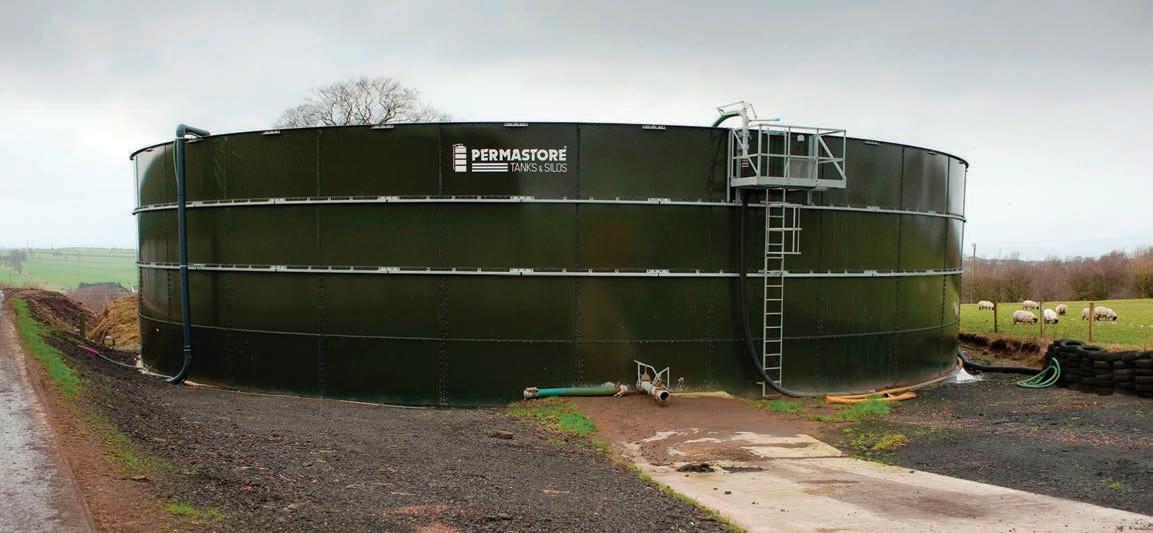

More than double the funding was on offer in the second round of the Slurry Infrastructure Grant.
But with dwindling confidence in the dairy sector as a result of a sustained poor milk price, high input costs and squeezed profit margins, farmers are cautious about where, when and what to invest in, questioning whether now is the right time to apply or not.
Defra has made a further £74 million available to help farmers invest in improved slurry infrastructure to tackle issues of water pollution, improve air quality and make efficient use of organic nutrients.
Farmers can apply for grants of £25,000 to £250,000 to replace, expand, build extra and cover slurry stores or to fund equipment such as reception pits, agitators and separators.
Dairy farmer Charles Goadby, from Nuneaton in Warwickshire, was put off applying to the first round of the grant, as he was ‘not in the priority areas’, according to the Defra maps online.
He had hoped to apply for the second round, but fears he will lose out once again, as he does not have all the prices and feasibility reports back to complete the application.
Mr Goadby said: “Short-term window grants are as good as their timing.
“For some it is encouraging them to invest and take on debt that they are not ready for and cannot fully afford.
“For others it is a fight to get projects designed and costed up in order to even consider an application.
“With so many investing in the same areas in such a short window it
With applications now open for the second round of Defra’s Slurry Infrastructure Grant, Rachael Brown takes a look at whether dairy farmers are looking to invest.
becomes a seller’s market, which inevitably leads to inflated prices either through supply and demand, or simply because manufacturers know what grants are out there,” he said.
The Defra website states the grant must be paid in arrears and the claimant must have sufficient funds to pay for all items in full before claiming the grant payment.
For tenant farmers, accessibility to grants can often be a complicated commitment and the uncertainty of whether the farm, or parts of the farm, could be taken back in hand often delays investment decisions.
Cotswolds tenant dairy farmer Pete Ledbury only has five years left on his farm business tenancy and said the expense which this grant would involve was not something he could consider right now.
Another dairy farmer from Cheshire echoed the unsettling ‘uneconomic climate’ in dairy right now, adding that he would be ‘unwilling to commit to further borrowing’ at the moment.
The slurry infrastructure grant forms a key component of the Government’s plan for water, which sets out more investment, stronger regulation and tougher enforcement to tackle every source of water pollution.
The scheme is also focused on helping to reduce air pollution, tackle biodiversity decline and support the recovery of protected sites.
Mixed farmer Robert Davies, and West Midlands dairy board chair was rejected first time around, adding his farm was ‘not enough a high priority area’ despite farming in the Wye catchment. He has applied for the second round to replace his existing 40-year-old slurry store but criticised the availability of long-term funding.
He said: “We are under increasing environmental and legislative pressure and with direct support through through the Basic Payment Scheme disappearing the cost of compliance to businesses like our own is becoming prohibitive. If sufficient long-term funding is not available it is inevitable that the number of dairy farmers exiting the industry will accelerate.”
Farming Minister Mark Spencer said: “We are indebted to farmers who work day in day out to ensure we have great British food on our tables while protecting and shaping our countryside. It is vital they are supported to make the environmental improvements I know so many want to make.
“Our Slurry Infrastructure Grant is helping farmers to invest in infrastructure which is often costly, but can deliver big benefits for our waterways and air quality, while also cutting their input costs.”
This grant comes before the launch of two further rounds of the Farming Equipment and Technology Fund in early 2024 and 2025, offering £21m for smaller items of equipment to help farmers manage slurry, from nutrient testing kits to low emission spreaders.
Farmers can also apply for complementary options under the Sustainable Farming Incentive, including support to produce a nutrient management plan and establish multispecies winter cover and buffer strips.













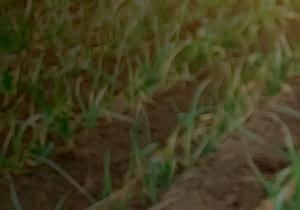




















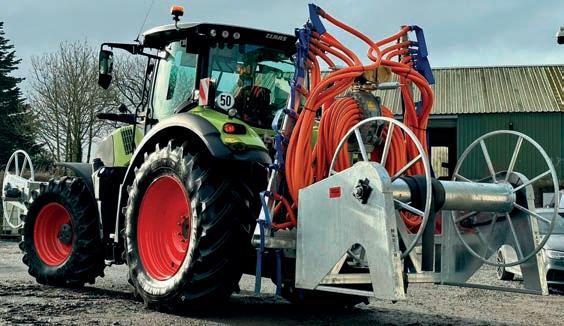







Finance Lease or Hire
24 - 60 Months
Competitive
Deal Sizes £15K Upwards
New & Used Machinery / Vehicles
Quick Decisions
CCJ’s Defaults, Poor Accounts, All considered
England & Wales Only
Older Equipment Considered
Quick Decisions
Deal Sizes £20K Upwards
Competitive Market Interest Rates Available
CCJ’s, Current Trading Difficulties, All Considered
Tenant Farmers Welcome
England & Wales Only
Future-proof your farm business, gain insight and exchange knowledge with a Farm Futures membership


Included in your membership: 52
a year
Farmers Guardian delivered directly to your door every week including full digital access. Plus, check out our brand-new features exclusive to Farm Futures members.


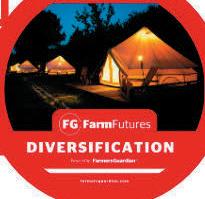





Insight – Quarterly, in-depth, analytical reports into the latest agricultural trends to optimise your farming practices
Exchange – A series of digital events focused on learning from real case studies and exchanging knowledge with agricultural thought leaders
Weekly Digest email – From the desk of FG’s editor every Sunday morning, discover exclusive insights which impact the business of profitable farming



Members’ Lounge – Enjoy an exclusive space for members to network at leading events, such as LAMMA, CropTec, Future Farming Expo Scotland and Farm Business Innovation.










Buttington Cross, Buttington, Welshpool, Powys SY21 8SR T: 01938 553438 F: 01938 554607

FRIDAY 1ST- MONDAY 4TH DECEMBER
Online timed sale of In Lamb, Empty & Recipient females
MONDAY 4TH DECEMBER
Annual Christmas Sheep & Cattle Prime Stock Show & Sale
*For further information/Schedule please contact the Market Office* Sale of 50 in Calf Heifers and Cows & Calves
12th Annual Production sale of 24 In Calf Heifers and 1 Cow & Calf from DI Roberts & Son, Stingwern
14 Cows & Calves from JE & JT Evans & Son, Upper Cefnpenarth
3 Cows & Calves from MM & R Morris, Maestanyglwyden
8 Cows & Calves from GL, JS & A Howells, Shadog
1 Cow & Calf from Red House Farm Sale to commence at 11.30am
THURSDAY 14TH DECEMBER
Sale of MV Accredited In Lamb Pedigree Females 32 Beltex 44 Dutch Spotted 35 Blue Texel 20 Badger Face Texel 163 Texel




SEDGEMOOR AUCTION CENTRE
Thursday 7th December at 10.45am with the Heifer Calves The Christmas Cracker Show & Sale of
✰ 57 FRESHLY CALVED COWS & HEIFERS from Beaconhill, Beneknowle, TC Cox, Clevian, Clenchers, Dinnaton, Haydon, Huntlodge, Lilylane Moorshard, Newmead, Peacehay & Wiltor

✰ 44 INCALF HEIFERS from Blackenfield (Dispersal), Farmestate, Lilylane, Lynchmead & Tarischka
✰ 58 BULLING & YEARLING HEIFERS from Blackenfield (Dispersal), Lynchmead & Whiteknights

✰ 74 HEIFER CALVES from FAW Baker Kingston Farms Ltd (Norwegian Red X), Beaconhill, Blackenfield (Dispersal), Curscombe, Rea & Son (Brown Swiss X), Tarischka, Trent Manor Farms (Crossbred) & Wiltor
Join us for mince pies & mulled wine
** Live bidding on MartEye, please register in advance at gth.marteye.ie **


BLUE GENES SATURDAY 6TH MARCH 2021
SHOW & SALE OF 29 PEDIGREE BRITISH BLUE BULLS AND HEFIERS, inc EMBRYO PACKAGES from leading herds inc Barleyclose, Delhorn, Graymar, Littlewood, Newpole, Old Stackyard, St Clements, Stoneleigh, Trencrom, Ty Isaf, Ruthall. Also 3 PEDIGREE LIMOUSIN BULLS from Dinmore & Twemlows Herds AT SHREWSBURY AUCTION CENTRE
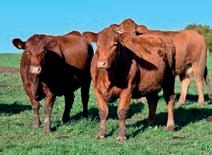


Darlington Farmers Auction Mart Office: 01325 464529
Humbleton Park | Darlington | DL2 2XX E: info@dfam.co.uk

WEDNESDAY 6TH DECEMBER
DFAM’s Prime Christmas Show

Christmas Shopping Fayre 3pm – 7pm
Prime Clean Cattle & Prime Lambs Judging 5pm Charity Auction 6.30pm
Christmas Carol Service (R.A.B.I) 7pm All day festive menu in our award winning Dot’s Cafe


THURSDAY 7TH DECEMBER

DFAM’s Prime Bull Christmas Show and Sale Of All Primestock

Prime Bull Judging - 8.30am Sale of Prime Bull’s - 9.30am Sale of Prime Clean Cattle - 10.30am Sale of Prime Lambs - 1pm Sale of Cast Sheep - 3pm EVERY MONDAY (GREEN 6 DAY RULE)

9.30am – Cast Cows, Bull’s and OTM 10.30am – Store Lambs & Feeding Ewes 11am – Breeding Cattle, Store Cattle & Young Bulls

EVERY THURSDAY (RED DEDICATED SLAUGHTER)

9.00am – Prime Pigs, 9.30am – Prime Bulls 10.30am – Prime Clean Cattle 1.00pm
Scott Ferrie Auctioneer 07557 260653
Oliver Chapman Auctioneer 07887 653442
Tracey Gilhespy Fieldsperson 07867 974688
Stephen Dodsworth Fieldsperson 07946 514154
Megan Dowson Trainee Auctioneer 07471 823606


Friday











1000 Store Lambs at 10am
Tuesday 5th December
Christmas Show & Sale of 2000 Prime Lambs (Pairs) Sponsored by Tophams, Newcastle Building Society & Hammonds Butchers. Judging 9.15am. Sale at 10am.
400 Cast Ewes & Rams
Christmas Show & Sale of 30 Calves. Judging 10am. Sale 10.30am (Shows for regular vendors only) Sponsored by Wensleydale Creamery & Genus Breeding
Friday 15th December
1000 Store Lambs. Cat closes Tue 5th Dec.
Tuesday 2nd January
Show & Sale of Prime Lambs for Young Farmers for the JW Cockett & Son Shield. Sponsored by Lane End Farm Shop
Saturday 20th January
Show & Sale of Ind Registered Ewes & Gimmer Lambs on behalf of the Bluefaced Leicester Sheep Breeders Assoc, also Show & Sale of Ind Registered Ewes & Gimmer Lambs on behalf of the Swaledale Sheep Breeders Assoc, also Show & Sale of Ind Herdwick Ewes & Gimmer Lambs. Entries close 29th Dec
Telephone: 01969 667207, 015396 20895, 07974 126397, 07711 469280.




As we move into the final month of the year, it’s fair to say that 2023 has not been without its challenges for the agricultural industry.
Working in a livestock market alongside my role for the Livestock Auctioneers’ Association (LAA), I often spend my Wednesday evenings in our market cafe talking to customers about the challenges faced.
From the weather, to rising input costs, weakening assurance schemes, increasing levy payments and changing Government requirements. But ultimately, it always comes down to trade: “How much are lambs making this evening?”
With margins squeezed, the competitive live auction ring has never been so important in supporting farmers to achieve the best possible price for their livestock.

Not only that, staying ahead of market trends and trade updates help farmers to make informed decisions. Knowing when and where to sell your livestock, alongside understanding buyer requirements, can be the difference between making a little or a lot.
For many years, the LAA has been representing the interests of livestock markets and farmers on national platforms and supporting
industry best practice. However, as we move into the new year, the LAA is entering a new era.
While continuing to represent the needs of our industry, it will become the new destination for livestock market sales prices and the hub for all things auction mart related.
Launching on January 1, the new LAA Market Prices platform will provide real-time trade updates for cattle, sheep, and pigs, sold through livestock markets across England and Wales (a service provided to date by the AHDB on the LAA’s behalf).
With data-driven decision-making leading many industries, and agriculture no different, the LAA is at the forefront, supported by our membership, in developing an exciting platform to deliver market prices.
The move to a commercial platform will continue to provide industry with accurate, consistent, high-quality data, through the support and delivery of an independent processor, while providing new insights, features and data set.





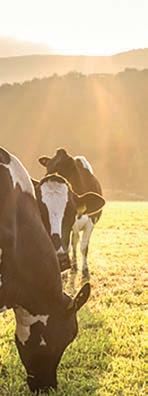








Real-time market price updates for finished, store, and breeding livestock will provide farmers with vital tools for benchmarking and performance monitoring, while enabling farming businesses to stay ahead of the competition and identify new opportunities in challenging times.
Plus, the development of new data sets and insights will support wider industry research and analysis, becoming part of the solution.
In the coming days we will be announcing further details about the launch of our LAA Market Prices platform. In the meantime, from all at the LAA, we would like to thank you for your support of our markets and wish you the best for 2024. n For more on LAA Market Prices, visit signup.laa.co.uk/marketprices-1
Zanna Dennis is a development officer at the Livestock Auctioneers’ Association. Call 07930 115 838, or email zanna.dennis@laa.co.uk


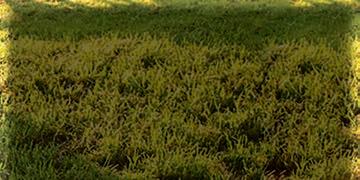



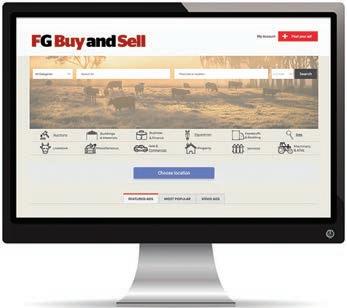





157 BELTEX IN-LAMB SHEEP
Show 8.30am Sale 10.30am
8 ewes, 143 gimmers, 6 empty ewe hoggs
THE UK’S PREMIER ELITE DAIRY SALE
150 WORLD CLASS LOTS SELL
The Black & White Sale Preview
Friday 1st December 2023 - 7pm
International Reception - 7.30pm And join us for THE sale event of the year THE BLACK & WHITE SALE ON SATURDAY
2nd DECEMBER 2023 AT 10.30am
DARK DIAMOND SUFFOLK SALE
Saturday 2nd December – 12.30pm As previously advertised
Monday 4th December
Christmas Shows & Sales Of PRIME CATTLE, BULLS and COWS
13 Classes – Judging 9.30am
11.00am with Prime Bulls, Prime Cattle, Cast Cows PRIME SHEEP
7 classes – Judging 9.30am 9.45am Cast sheep followed by Prime Sheep
Please note that all outlets are now requiring prime lambs to be belly clipped Kindly sponsored by



Schedules for the above shows are now available.
EMSLIES EVENING EXTRAVAGANZA
Thursday 7th December – 5.00pm
Sale of 115 top quality heifers incalf to Ampertaine Jackpot on behalf of Harry Emslie Farmers Ltd, Peterhead
109 PEDIGREE LIMOUSIN CATTLE
Friday 8th December
Show 8.30am Sale 12.00 noon RED LADIES
1 cow in calf, 1 served heifer and 64 maiden heifers, followed by Sale of WEANED CALVES
10 bull calves and 33 heifer calves
IN-LAMB PEDIGREE SHEEP FAIR
Friday 8th December
82 KERRY HILL IN-LAMB SHEEP
Show: 9.30am Sale 10:30am
12 ewes, 44 gimmers & 26 ewe lambs
JEWITT & SUNNYBANK SELECTION BOX SALE of Blue Texels, Dutch Spotted & Badger Face Texels
Sale 12.30pm
21 Badger Face Texel: 21 shearling gimmers
50 Blue Texel: 16 Stock Ewes, 34 Shearling Gimmers
23 Dutch Spotted: 7 stock ewes, 16 Shearling Gimmers
Sale to include the major reduction of the Ardstewart flock and Dispersal of the Loandhu flock
120 CONTINENTAL IN-LAMB SHEEP
approx 1.30pm
Current entries include Blue Du Maine, Blue Texel, Blue Texel x, Dorpers, Dutch Spotted & Mules including 25 Texel & Texel x Beltex gimmers, & 2 Black Beltex x Texel gimmers from T C Whiteford, Tercrosset
CARLISLE CRACKER – PEDIGREE
TEXEL FEMALE SALE
Sale: 5.00pm presenting 100 in-lamb Texel gimmers
Allanfauld, Charben, Duncryne, Drumbreddan, Foremanhill, Forkins, Haddo, Harestone, Hilltop, Hexel, Knap, Milnbank, Mitchellhill, New View, Okehall, Rascarrel, Uppermill Including dispersals of the Brackenridge and Rhaeadr flocks.
TEXEL IN LAMB SALE
On behalf of Solway & Tyne Texel Club
Friday 5th January 2024
Entries open date: 4th December and close 15th December 2023
“Border Beauties” BORDER LEICESTER FEMALES
Monday 8th January
Entries close Monday 11th December
“Blue Belles” registered inlamb traditional type BLUEFACED LEICESTER FEMALES
Monday 8th January
Entries close Monday 11th December
SALE OF MACHINERY, IMPLEMENTS & HEAVY PLANT items
Sale bidding starts 10.30am Wednesday 6th December until 10.30am Thursday 7th December


PLEASE SCAN TO VIEW OUR ONLINE CATALOGUES















Friday 15th December MONTHLY SALE OF FARMER STIRKS



Friday 22nd December 10am DRESSED POULTRY

Tuesday 5th December ‘BUTCHERS BONANZA’ PRIME PIGS Show 10am, Sale 10.30am PRIME CATTLE Show 11am, Sale12noon PRIME LAMBS Show 12noon, Sale 1pm CAST SHEEP Show 12.30pm, Sale approx. 2.30pm
Thursday 7th December
9.45am CHRISTMAS SHOW & SALE OF REARING CALVES 10.30am 100 CAST / OTM CATTLE
11.15am BEEF BREEDING, STIRKS & STORE CATTLE
To inc consignment of bulling heifers from TW Wilson: 15 Pedigree Luing & 5 Pedigree Belted Galloway
Thursday 14th December 10.30am Fortnightly Sale of 5000 STORE LAMBS
Friday 22nd December 2pm DRESSED POULTRY
Saturday 6th January 2024 (MV ONLY) North West Texel Breeders Club
Annual Show & Sale of Pedigree Individual Females. itexel Full Entries Close 10th December.
Thrapston



WEDNESDAY 6TH DECEMBER
420 Prime Cattle 450 Prime Sheep 200 Prime Pigs
Pigs 9am Sheep 9.45am Cattle 10.30am
SATURDAY 9th DECEMBER
110 Breeding & Store Cattle of all classes Inc: 8 LimX Bulls 8-10mth, S&P Padfield
Breeding & Store Sheep 150 Breeding & Store Pigs Entries Welcome Pigs 9am Sheep 9.45am Cattle 10.45am

WEDNESDAY 13TH DECEMBER

Christmas Show & Sale of Prime Sheep & Pigs Pig to be auctioned for charity kindly donated by Abbey Garth Pigs

Show & Sale of Pedigree Individual Females on behalf of the Beltex, Blue Texel & Badger Face Texel Societies Entries Close on Friday 1st December 2023 SALE LIVE ONLINE - www.nwa.auctionmarts.com Sale to Conclude: Mon 4th December Collection: Tuesday 5th & Wednesday 6th December


WEEKLY PRIMESTOCK SALE including CHRISTMAS SHOW
THURSDAY 21ST DECEMBER at 5pm

Contact Office for Details
MART OFFICE: 01757 703347
Christmas Sale of Dressed Poultry Turkeys, Geese, Ducks & Chickens

RICHARD HAIGH: 07768 594535 www.selbymart.co.uk
Contact Office for Details
MART OFFICE: 01757 703347
RICHARD HAIGH 07768 594535
www.selbymart.co.uk
e , STORE CATTLE CHRISTMAS SHOW & SALE
Tuesday 5th December 12.30pm Show 11.30am. Lowland Prime Lamb Show Classes for Pairs of Continentals over/under 40kg & Pairs of Su olks
MACHINERY SALE W
FORTNIGHTLY SALE OF STORE LAMBS Monday 4th December 11am Further entries accepted on the day Thursday 7th Dec 12.30pm Show 11.30am. Show Classes for Bull, Heifer & Steer under/over 12months + Christmas Calf Show Thurs 14th - Sat 16th December Intake of items until Thursday 7th December

Saturday 2nd December To Include: Prime Show Cattle, Store Cattle, Calves, Sheep & Pigs Friday 8th December Prize Giving Dinner STRATFORD
Tuesday 5th December To Include: 80 Prime Show Sheep & Normal Sale of Fat & Store Sheep

WEDNESDAY 6 DECEMBER 2023 – 11AM
SATURDAY 2nd DECEMBER
GLOUCESTER & BORDERS TEXEL SHOW AND SALE
In Lamb Aged Ewes, In Lamb Shearling Ewes, Ewe Lambs Show at 9.30am, Sale at 10.30am BLUE TEXEL SHEEP SOCIETY SHOW AND SALE
In Lamb Aged Ewes, In Lamb Shearling Ewes, Ewe Lambs Show at 10.00am, Sale at 11.30am DUTCH SPOTTED “SPOTACULAR” SALE
In Lamb Aged Ewes, In Lamb Shearling Ewes, Recipient Ewes carrying Embryos, Ewe Lambs, Graded Females Sale at 1.00pm BELTEX SHEEP SOCIETY SALE FOR THE CENTRAL REGION
In Lamb Aged Ewes, In Lamb Shearling Ewes, Ewe Lambs Sale at 2.00pm BADGER FACE TEXEL SHEEP SOCIETY SALE
In Lamb Ewes, Ewe Lambs Sale at 2.30pm Livestreaming and Online Bidding via: mccartneys.marteye.ie Catalogues or more information: Worcester Office Tel: 01905 769770





HOLSWORTHY MARKET, HOLSWORTHY, DEVON. EX22 7FA CHRISTMAS CRACKER SHOW & SALE OF APPROX. 100 DAIRY CATTLE


Classes to include: Best Cow In Milk, Best Heifer In Milk, Overall and Reserve Champion.
Entries to date to include freshly Calved Cows and Heifers from the pedigree ‘Coppicepark, Glendene, Kenham. Mudgeon’ herds and other regular vendors. PLUS 7 In Calf Heifers due January from Messrs DW & SE Turner (Cont. of Dispersal) of Torrington.
PLUS a consignment of 50 July-September 2023 born Heifer Calves from the ‘Willsbro’ herd on behalf of Wills Bros Ltd of Wadebridge Including multiple generation VG/EX bred heifers from families such as ‘Amber, Ashlyn, Dolly, Edda, Frieda, Ghost, Lila B, Lila Z, Pammy, Pledge, Rachel, Raven, Roxy, Rozelle, Sharon, Vaakje. A sale not to be






1st December – Carmarthen: Barren cows, store cattle & sheep
1st December – Carmarthen: Barren cows, store cattle & sheep
4th December – Carmarthen Christmas Show: Weaned calves, suckler cows, breeding bulls
4th December – Carmarthen Christmas Show: Weaned calves, suckler cows, breeding bulls
5th December – Newcastle Emlyn Christmas Show: Store & prime cattle
5th December – Newcastle
5th December – Newcastle Emlyn Christmas Show: Store & prime cattle
Christmas Show: Store & prime cattle
6th December – Carmarthen: Dairy cattle, calves & weanlings
6th December – Carmarthen: Dairy cattle, calves & weanlings
6th December – Carmarthen: Dairy cattle, calves & weanlings
7th December – Newcastle Emlyn Christmas Show: Fat cattle, barren cows, calves & sheep
7th December – Newcastle Emlyn Christmas Show: Fat cattle, barren cows, calves & sheep
7th December – Newcastle Emlyn Christmas Show: Fat cattle, barren cows, calves & sheep
8th December – Carmarthen Christmas Show: Store, prime & OTM cattle & sheep
8th December – Carmarthen Christmas Show: Store, prime & OTM cattle & sheep
8th December – Carmarthen Christmas Show: Store, prime & OTM cattle & sheep
11th December – Carmarthen: Orange TB sale
11th December – Carmarthen: Orange TB sale
11th December – Carmarthen: Orange TB sale
13th December – Carmarthen - Holstein South Wales Christmas Show & Sale: Dairy cattle, calves & weanlings
13th December – Carmarthen - Holstein South Wales Christmas Show & Sale: Dairy cattle, calves & weanlings
13th December – Carmarthen - Holstein South Wales Christmas Show & Sale: Dairy cattle, calves & weanlings

14th December – Newcastle Emlyn: Calves, weanlings, cull cows, sheep
14th December – Newcastle Emlyn: Calves, weanlings, cull cows, sheep
14th December – Newcastle Emlyn: Calves, weanlings, cull cows, sheep
15th December – Carmarthen: Barren cows, store cattle & sheep
15th December – Carmarthen: Barren cows, store cattle & sheep
15th December – Carmarthen: Barren cows, store cattle & sheep
19th December – Newcastle Emlyn: NO SALE ON THIS DAY
19th December – Newcastle Emlyn: NO SALE ON THIS DAY
19th December – Newcastle Emlyn: NO SALE ON THIS DAY
20th December – Carmarthen: Dairy cattle, calves & weanlings
20th December – Carmarthen: Dairy cattle, calves & weanlings
20th December – Carmarthen: Dairy cattle, calves & weanlings
21st December – Newcastle Emlyn: Calves, weanlings, culls & sheep
21st December – Newcastle Emlyn: Calves, weanlings, culls & sheep
21st December – Newcastle Emlyn: Calves, weanlings, culls & sheep
22nd December – Carmarthen: NO SALE ON THIS DAY
22nd December – Carmarthen: NO SALE ON THIS DAY
22nd December – Carmarthen: NO SALE ON THIS DAY
28th December – Newcastle Emlyn: Calves, weanlings, culls & sheep
29th December – Carmarthen: Barren cows, store cattle & sheep
28th December – Newcastle Emlyn: Calves, weanlings, culls & sheep
28th December – Newcastle Emlyn: Calves, weanlings, culls & sheep
29th December – Carmarthen: Barren cows, store cattle & sheep
29th December – Carmarthen: Barren cows, store cattle & sheep
2nd January 2024 – Newcastle Emlyn: Store cattle
2nd January 2024 – Newcastle Emlyn: Store cattle
2nd January 2024 – Newcastle Emlyn: Store cattle
3rd January – Carmarthen: Dairy cattle, calves & weanlings
3rd January – Carmarthen: Dairy cattle, calves & weanlings
3rd January – Carmarthen: Dairy cattle, calves & weanlings
4th January – Newcastle Emlyn: Calves, weanlings, cull cows & sheep
4th January – Newcastle Emlyn: Calves, weanlings, cull cows & sheep
5th January – Carmarthen: Barren
4th January – Newcastle Emlyn: Calves, weanlings, cull cows & sheep

5th January – Carmarthen: Barren cows, store cattle & sheep Happy New Year to all our Customers BIDDING AVAILABLE ON “MARTEYE” Llŷr Jones 07812 934964 or Paul Taylor 07815 509504 nockdeightonagricultural.co.uk
5th January – Carmarthen: Barren cows, store cattle & sheep Happy New Year to all our Customers BIDDING AVAILABLE ON “MARTEYE” Llŷr Jones 07812 934964 or Paul Taylor 07815 509504



9.30am- Prime Bulls, Clean Cattle & Cast Cows. Special Section for TB area 1 cattle.
11am- Sale of 250 Store Cattle of all classes
Wednesday 6th December
8am – Sale of Cast Ewes & Rams & followed at 10am with Prime Lambs (Ballot 10am)
Christmas Prime Sheep Show 9am. Wednesday 6th
2.30pm-
10am- Christmas Show & Sale of Rearing Calves and Weaned Stirks Show 9.30am
12.30pm- Christmas Special Sale of 40 Dairy Shorthorn & Black and White Cattle of all classes Catalogues available
Saturday 2 December
9.30am WEEKLY CAST SHEEP & PRIME LAMBS XMAS SHOWS at 9am : CAST EWES best 3: (1) Continental (2)Horned/Hill (3)Mule/Masham PRIME LAMBS best 3: (1)Cont>40 (2)Cont 41kg+ (3)Native (4)Horned/Hill (5)Mule/Masham 10.00 BREEDING & STORE CATTLE SALE
9.15am
Thursday 7 December
10.30am PRIME & CULL CATTLE

10.30am REARING CALVES CHRISTMAS SHOW
Classes: (1) BBlue Bull (2) Other Cont Bull (3) BBlue Heifer (4) Other Cont Heifer (5) Native Bull or Heifer

11.00am DUGDALE with LELY DAIRY SALE inc CHRISTMAS SHOW Classes: (1) NC Heifer (2) NC Cow (3) NC Ped Heifer (4) Coloured or Non Hols (5) In-Calf Heifer catalogue closes 4pm FRIDAY 1st Dec for this sale
Saturday 9 December
9.30am WEEKLY CAST SHEEP & PRIME LAMBS CHARITY PRIME LAMB SALE and YOUNG FARMERS SINGLE PRIME LAMB SHOW
Competitors aged u18. Classes for best: (1) Continental (2) Native
10.30am FORTNIGHTLY BREEDING SHEEP SALE
11.00am STORE LAMB SALE entries please by Tues 7th
Wednesday 13 December
GISBURN FESTIVE CAROL SERVICE
All very welcome to this festive evening with Clitheroe Brass Band, Bethel Chapel Choir, Gisburn Hospitality and Refreshments served.
Money Raised to go to RABI and Field Nurse Charities
Thursday 14 December
10.30am PRIME & CULL CATTLE
10.30am REARING CALVES
11.00am WEEKLY SALE OF DAIRY
12.30pm STIRKS inc CHRISTMAS SHOW for best Bull, Steer, Heifer - entries by 4pm Monday 12th


015242 61444 - Sale Days 61246
Stephen 07713 075 661
Greg 07713 075 664
Will 07590 876 849
www.benthamauc on.co.uk
Tuesday 5th December
10.30am Christmas Show & Sale of 50-75 CAST COWS & OTM CATTLE
Followed by Christmas Show & Sale of 120 STORE CATTLE

Wednesday 6th December
10.30am FORTNIGHTLY SALE OF DAIRY CATTLE
30-40 Newly Calved Pedigree & Commercial Cattle 11am 100-150 REARING CALVES

2.30pm 2000 Cast Ewes followed by 2500-3500 Prime Lambs (Christmas Show & Sale of Hillbred Lambs)

Friday 8th & Saturday 9th December
CHRISTMAS IN THE MART
Superb selection of trade stands from local artists, craft makers, bakers and creators
Friday Evening 6.30pm Charity Christmas Tractor Run
7pm Farmers Carol Concert inc.
Kirkbylonsdale Silver Band
Saturday- Childrens’ Entertainments
Tuesday 12th December
Fortnightly Sale of Store Lambs
Entries for catalogue close Friday 1st December
Wednesday 13th December
11am Christmas Show & Sale of 100-150 REARING CALVES (Judging at 10am) 5pm Christmas Show & Sale of SHORTWOOLED PRIME LAMBS (Judging at 5pm)
Thursday 14th December
ELITE BREEDING SALE
Evening Sale of Pedigree & Commercial Elite
Breeding Females Viz. Texel, Beltex, Charollais, Suffolk & Other Terminal Breeds. MV & Non MV Sections
Tuesday 19th December
Feeding & Cast Cows & OTM Cattle
Christmas Show & Sale of Farmers Stirks & Young Stores
Entries


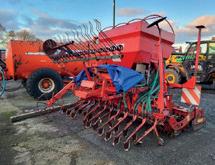






We currently have a wide range of positions available nationwide to include:-
• Experienced Herdsperson, Nottinghamshire, 450 cows
• Assistant Herdsperson, Shropshire, 700 cows
• Head Herdsperson, North Devon, 420 cows Relief Herdspersons Nationwide
LKL provides the perfect solution for finding the very best herd carers and managers. Visit our website for a full list of our current vacancies
Web:

Shepherd Boughton Estate,
Buccleuch is a diverse and innova ve business commi ed to sustainable land use across its estates in Scotland and England. The Boughton Estate in-hand farms, situated in Northamptonshire, include livestock and arable enterprises across 1,500 ha.
We are seeking to recruit an experienced Shepherd to join the team with responsibility for 1,600 Aberfield x Highlander outdoor lambing ewes. Other enterprises include finishing ca le, arable, parkland deer and an extensive Countryside Stewardship Scheme.
We are focused on producing lamb through high welfare husbandry on a predominantly forage based system with all lambs being finished on farm using temporary leys, forage/cover crops incorporated into the arable rota on and permanent pasture. 2022 saw new investment in a livestock hub created at Home Farm in the centre of the Estate.
Candidates will ideally have experience in the following:
• EID data recording
• Outdoor lambing experience
• Mob grazing using electric fencing
• Opera ng farm machinery and willing to assist in other areas of the business
• Well organised and dy with high a en on to detail.
We offer:
• Compe ve salary and pension
• Good accommoda on in a rac ve three bed co age including kennels
• Private healthcare
• Ongoing training and development
• Regular annual leave
• Dog allowance
The role requires previous livestock experience with own working dogs. To apply, please send a copy of your CV with covering letter to recruitment@buccleuch.com
The closing date for applications is 8 December
Please view our privacy policy at www.buccleuch.com/privacy



Agriconnect is a business unit within the Arc network, a global events, data, and media platform. Arc is a fast-growing global events, data, and media platform with a varied portfolio content led portals, magazines, and events. Agriconnect’s mission is to empower, inspire, and connect people and business in agriculture by creating trusted content and connections that help the industry thrive.
Since 1844, the brands of Agriconnect have been the trusted source of information for farmers and with brands like Farmers Guardian, events, like LAMMA and Farm Business Innovation, and digital platforms, like FG Insights, Agriconnect continues to bring together the British farming community.
• We are now looking for a motivated and driven salesperson to join our Sales team.
• The main function of the role is to develop business through growth in revenue, yield, and to increase customer numbers. You will be required to identify new opportunities and in uence companies’ media buying habits within the agricultural sector. Due to the ever-changing nature of the industry, this person will have the ability to spot new avenues and exploit market trends.
• Hours: 35 hours per week – Mon – Fri
• Location: Preston – temporary hybrid remote
• Salary: Competitive, dependant on experience.
• Own, support and fully develop speci c market sectors
• Conduct sales presentations by telephone, email or face to face to existing and prospective clients in order to develop existing business and generate new business wherever possible.
• Advise existing and new customers on the most e ective solution to meet client needs within the Agriconnect portfolio.
• Continually seek and develop new sales & opportunities.
• Ability to accurately forecast future sales
• Keep abreast of all current trends, activities and relevant news within agriculture and speci c sector
• An interest in agriculture
• Highly motivated & driven, with an ability to meet ambitious performance goals
• Be enthusiastic and motivated to continually explore new opportunities, whilst possessing a natural inquisitive nature
• Excellent communication written and interpersonal skills
• A competitive basic salary
• 25 days holiday increasing to 27 after two years
• An extra day o on your birthday
• Free life assurance
• Contributory pension scheme
• Employee assistance programme
Arc has ambitious plans for growth, and this is an opportunity to be part of our continuing success story whilst enjoying a fabulous work/ life balance.
We strive to create a culture that is open and respectful, where di erences are valued and celebrated. We want everyone to be able to reach their full potential, so we are committed to cultivating a company that promotes inclusion and belonging.





Have you got drive and aspiration to be a part of a team that provide rural and agricultural communities with the support they need to succeed? If the answer is yes then you may be the person that we are looking for at Carrs Billington.
We have two exciting opportunities at Carrs Billington location in Cumbria. We are looking for 2 General Managers, one for our Penrith Store and one for our Carlisle store.
We are looking for someone who can lead the teams at branch, to maximise the sales opportunities across the whole site, ensuring customer service standards and continuous business development are high on the agenda, including delivering on the Company Strategy.
Job Specifications:
• Lead the Retail Branch Team driving sales and profitability to achieve targeted contributions.
• To ensure all available resources are managed e ectively, keeping costs within budget, so the store achieves targeted contribution.
• To ensure all Branch colleagues deliver exceptionally high customer service, to optimise sales opportunities, in Branch and on farm, and take a lead in ensuring all customers have a positive customer experience.
• To support, develop, mentor and drive colleague performance within the branch, so that key talent is optimised and retained, and we continue to be an attractive employer for future talent.
• To manage stock to hit stock targets for the Branch, including aged stock.
• To manage all customer debt, to ensure it is kept within company credit policies.
• To ensure that all operating procedures are adhered on a daily/weekly/ monthly basis.
• To adhere to Company and Group policies and procedures, including but not limited to those relating to Safety, Health and Environmental.
• To ensure all relevant legislation and approved codes of practice, are adhered to in respect of ongoing compliance, including but not limited to UFAS, FIAS, & NOPS assurance schemes.
Skills and Experience requirements:
Essential:
• Proven track record and experience of leading a multi discipline site.
• Experience of managing a branch P&L.
• Experience of driving growth in sales and logistics savings.
• Ability to analyse data, identify trends and make informed decisions.
• Strong problem-solving skills and ability to make decisions under pressure.
• Experience of budget and financial management principles.
Desirable
• Agricultural experience.
• Strong Machinery technical knowledge.
• IOSH Managing Leading Safely qualification.
• Experience of Microsoft D365 and IBCOS operating systems. What will we o er the successful candidate?
• We o er a very competitive salary.
• Superb company benefits, including pension, cycle to work, life assurance, perks at work, cash plan and many others.
Send CV’s to people@carrs-billington.com

Experienced and highly motivated stockperson to take charge of 100 Luing suckler cow, high health herd on Blackmount Farm, Argyll. e successful applicant must be able to work alone and as part of a team and will be responsible for the stock in their care. Blackmount is a progressive and well-equipped upland farming business, focussed on the production of excellent livestock whilst managing the land in a sustainable and regenerative way.
e business seeks to build herd numbers and we o er good career progression in line with the growth of the farming business. is is a full-time position with a good employment package and good quality accommodation.
For further information and an initial discussion please contact Finlay Clark.


BE WELCOMED! Are you missing the welcome of a someone to come home to? Are you struggling with coming in from the dark to an empty house?


Orders for Insertion of advertisements in Farmers Guardian are accepted subject to the following conditions:
1. Advertisement copy shall be legal, decent, honest and truthful, and shall comply with the British Code of Advertising Practise and all other codes under the general supervision of the Advertising Standards Authority: and shall comply with the requirements of current legislation.
2. While every endeavour will be made to meet the wishes of advertisers, the publisher does not guarantee insertion of any particular advertisement.
3. In the event of any error, misprint or omission in the printing of an advertisement or part of an advertisement the publisher will either reinsert the advertisement or relevant part of the advertisement as the case may be, or make a reasonable adjustment to the cost. No reinsertion, or adjustment will be made where the error, misprint or omission does not materially detract from the advertisement. In no circumstances shall the total liability of the publisher for any error, misprint or omission exceed

WASTE TYRES and other waste removed from farms
• 25 years experience
• Registered waste carrier
• All farm tyres & tyre bale removed in bulk
• Competitive prices
For free quote call Chris Ingram on 07860 670 201 or email chris@intowaste.co.uk www.intowaste.co.uk

J.P WHITTER (WATER WELL ENGINEERS) LTD
Cherry Laurel
2.45
Rabbit Guards 0.28p Canes 0.12p Trees, Specimen Plants, Hedging, All Sizes
Available. A standard delivery charge may be added. Quotes given for Countryside Stewardship Scheme. Ring for native tree whips availability and prices. Delivery will commence the week of the 13th November. All Prices Exclude VAT. Prices are subject to change.
269 Southport Road, Ulnes Walton Leyland Lancs PR26 8LQ



• BOREHOLE DRILLING FOR DOMESTIC AND COMMERCIAL PURPOSES
• WORK CARRIED OUT TO A VERY HIGH STANDARD
• WATER SYSTEMS INSTALLED
• BOREHOLE PUMPING INSTALLATIONS
• 24HR BREAKDOWN SERVICE
• FREE QUOTATIONS AND SITE VISITS THE POTTERIES GARAGE SMALLBROOK LANE, LEIGH, WIGAN, LANCS, WN7 5PZ. TEL: 01942 871900. FAX: 01942 896843. Out of office: 01942 893660 Visit our Website www.waterwellengineers.co.uk Email: sally@waterwellengineers.co.uk
You don’t need to any longer! Friends1st has successfully introduced many farmers to their soul mate. We can do it for you too. Call our friendly team on 0121 405 0941 today to find out how to get started. Or for information view www.friends1st.co.uk. We are a national service for Christians that offers a very successful off-line service. METERS,FEEDERS clusters, pulsators, jetters, pumps ACRs and robot spares 01260 226261 (T)
a) The amount of a full refund of any price paid to the publisher for the advertisement in connection with which liability arose. OR
b) The cost of a further corrective advertisement of a type and standard reasonably comparable to that in connection with which liability arose.
4. The publisher reserves the right to withdraw, amend or alter any advertisement it considers necessary.
5. Cancellations or advertisements are accepted providing they comply with the cancellation deadlines which are published at regular intervals.
6. Advertisement orders are issued by an advertising agency as a principal and must be on the agencies official form (when copy insutructions not constituting an official order are issued they must be clearly marked at the head “Copy Instructions – not an order”.
7. Advertising Agency commission will only be granted to those Agencies who are currently recognised by the Newspaper Society at the time of placing an advertisement order and copy. The rate of commission is determined by the publisher.
8. When credit is allowed payment is due within 7 days. Monthly accounts are due in full each month. “We reserve the right to charge additional costs and interest for non payment within our credit terms”.
9. Only standard abbreviations are permitted by the publisher. List available on request.
10. Classified display advertisements must be at least 3cms in depth for every column wide, and the minimum size of any advertisement is 2 lines.
11. Every endeavour will be made in order to forward replies to box numbers to the advertisers, as soon as possible after receipt by the publisher, but the publisher accepts no liability in respect of any loss, or damage alleged to have arisen through delay in forwarding or omitting to forward such replies, however caused. Circulars and the like should not be distributed through publisher’s box number facility.
12. The placing of an order for the insertion of an advertisement, is an acceptance of these conditions and any other conditions stated on any type of order form by an agency or advertisers are not applicable if they conflict with any of the above.
Complete new/used cooling solution
NEW / USED TANKS FROM 50-50,000 LITRES,
OR SILO
Complete solutions from milk storage tanks, to ice builders, plate coolers, condensing units, heat recovery systems, glycol systems, tank wash systems. We also buy used tanks & part exchange.
Quality used milk tanks available along with refurbished ice builders & condensing units.
We also supply quality batch & the latest flow pasteurisers.
This allows you to add more value to your milk in the way of vending or creating your own branded cream & milk.
KRISTAL D&D LIMITED ESTABLISHED 1978
ADDRESS
3 Porthouse Industrial Estate Bromyard, HR7 4NS
CONTACT
Tel: 01885 483576 | Email: info@kristaldd.co.uk WEBSITE www.kristaldd.co.uk



COLLECTORS OF DEAD ANIMALS THROUGHOUT LANCASHIRE AND CHESHIRE
Competitive prices
PLEASE CALL: 01704 893161 or 07768 051800 (24 hrs)
Martland’s the name, knackering’s the game Established over 100 years
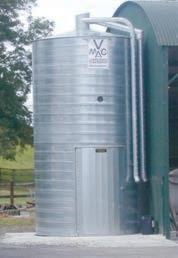





Daily collections of all types of fallen stock throughout the North of England.
Tel: 01524 261144 or 01524 263022 or 01274 833196
BAMBER BRIDGE Lancs, Cumbria, Cheshire. Yorkshire.

Fibreglass CALF -O-TEL
Calf Hutches. Complete with fencing. A large selection of all animal and calf feeding equipment and all other associated products also available. Massive saving on list price Livestock Supplies Ltd. Ashley: 07831 887531 Office: 01829 260328 www.livestocksupplies.co.uk









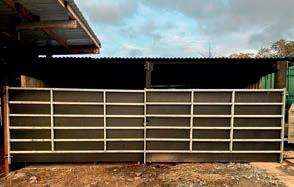







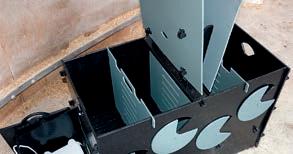




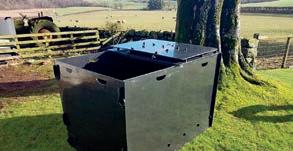



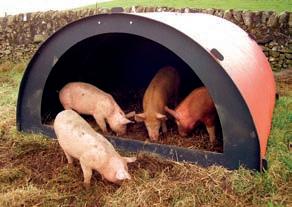
















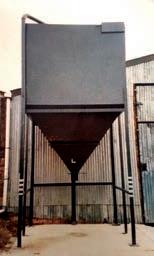































A weekly selection of freshly calved & in-calf dairy cattle sourced from the UK. All guaranteed and delivered anywhere in the UK Finance can be arranged.



Livestock Supplies Ltd


Ashley: 07831 887531, Office: 01829 260328, Will: 07769 974476 www.livestocksupplies.co.uk
Black & White and some Red & White Plenty to choose from - first come first served! Tel: Ray Brown 01477 532220 or 07885 652718 Cheshire (T)




Bulls and select Females for Sale from a high health herd, with fully registered pedigrees.
Further details can be seen on: www.lowergroveherefords.com
Sired by top AI Angus Bulls, bred for calving ease, high growth & maternal traits. Fully guaranteed & ready to work. Will deliver when required. Contact Robert Shanks 07974 968150 Kelso (P)
PEDIGREE HEREFORDS

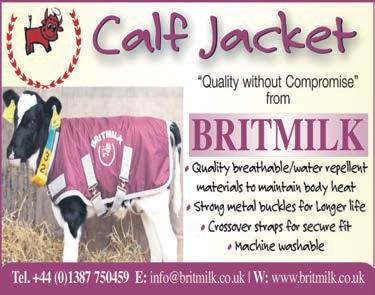

BULLS FOR SALE
Excellent choice. Great conformation, colour and temperament. Ready to work. High health accredited for IBR, Lepto, BVD and Johnes 1, TB4 North Yorkshire 01756 720210 - 0777 99 20202 More details visit: www.whitehillherefords.co.uk
PEDIGREE LIMOUSIN BULL
Very well bred.
Quiet and easy to handle.
17 months old.
Good health status.
Tel: 07946 642576 Derbyshire (P)
PEDIGREE SIMMENTAL BULLS

Easy Calving, Good temperament. Johnes & BVD accredited, lepto vaccinated. Ready for work, Herd never had TB
Tel: 01948 770408 Mob: 07714 089001 Malpas, Cheshire
Ready to work, delivered direct to your farm, very quiet, easy calving. Also females available. Health monitored, closed herd, full pedigree with each animal, Red tractor. Semen Available.
Tel: 077157 64351


Functional, fertile, forage fed young bulls from our 120 cow herd reared at 1000 suitable for pedigree, dairy and suckler heifers. Performance recorded, Fertility tested. Johnes, BVD, IBR accredited Nationwide delivery 07966 360210 Peak District, Derbyshire

Biscon Meal (Approx. 12% Protein/14 ME) £240 del Cereal Mixture (Approx. 14% Protein/13 ME) £270 del Cereal Blend (Approx. 16% Protein/13 ME) £295 del Mixed Pellets (Approx. 18% Protein/13 ME) £315 del
One Tonne Bag Collections Mixed Pellets (Approx. 18% Protein/13 ME) £275 ex store

&





Cleaned, Competitive Prices, Direct







•
• Improves animal welfare
• Reduces stress in the flock
• Pregnant ewes and housed sheep are cheaper to feed
• Supplied as a complete unit ready for assembly



• Sizes from 16ft to 30ft wide, and lengths from 30ft to 90ft
• 50mm and 60mm diameter steel hoops for strength and rigidity




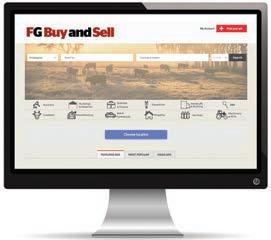
Starvation, hypothermia, and hypoglycaemia are amongst the highest causes of mortality in newborn lambs – in wet and cold conditions as well as warm and sunny. Adequate colostrum and brown fat (a type of fat that the lamb is born with) help the lamb through this period by increasing heat production. Difficult or premature births can cause weak lambs which contributes to hypothermia.
Newborn lambs are fragile creatures and extremely susceptible to disease and infections. They are born with an almost sterile gut microbiome, and an exceptionally low inherent immunity. Good quality colostrum is of critical importance. In addition, lambs are born with low levels of crucial vitamins especially Vitamin E & A.




Provita Lamb Response is a beneficial bacteria based oral formulation which acts preventatively to augment the gut commensal population of the newborn lamb with protective bacteria, thereby generating gut health, and helping to prevent the establishment of E. coli by boosting local immunity. The product also supplies protective egg powder and Vitamins B & E to further enhance gut protection and stimulate early protection against E. coli, and to stimulate metabolism and growth. Readily available energy is also provided in the product. It contains:
• Beneficial bacteria which naturally diminishes E. coli bacteria, enhances immunity, and ‘seals’ the newborn gut.
• Egg powder which provides high concentrations of unique proteins which are more potent against E. coli than usual colostral antibodies.
• High levels of vitamins necessary for the young animal’s metabolism and supplies especially vitamin E, which stimulates the lymphocytes in the underdeveloped immune system, thus adding a further layer of protection.
• High energy to stimulate appetite, help prevent hypothermia and to stimulate blood flow through vital organs.
Provita Jump Start is specially designed and formulated to help newborn lambs by immediately boosting their blood sugar and energy levels. It contains high levels of:
• Glucose, energy, and propylene glycol acting as fast and prolonged precursors of blood glucose.
• Unique egg powder which help to combat E. coli infection.
• Selenium and vitamin E to help stimulate the immune system.
• Cobalt and vitamin B12 which accelerate the formation of greater numbers of red blood cells.
References available on request.
Written by Dr TB Barragry PhD MScMVB MRCVS (Vet Pharmacologist).




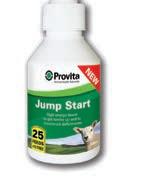
Provides beneficial bacteria, egg powder and vitamins - helps protect against harmful bacteria
“A literal life saver” “We haven't lost a lamb to watery mouth” Lamb Response


















































•
•
•
•




Although every advertisement is carefully checked,occasionally mistakes do occur.We therefore ask advertisers to assist by checking their advertisements carefully and advise us immediately should an error occur.
We regret that we cannot accept responsibility for more than ONE INCORRECT insertion and that no re-publication will be granted in the case of typographical or minor changes which do not affect the value of the advertisement.
While every endeavour will be made to meet the wishes of the advertisers, the publisher does not guarantee insertion of any particular advert.





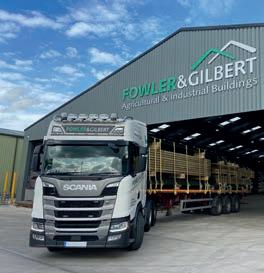
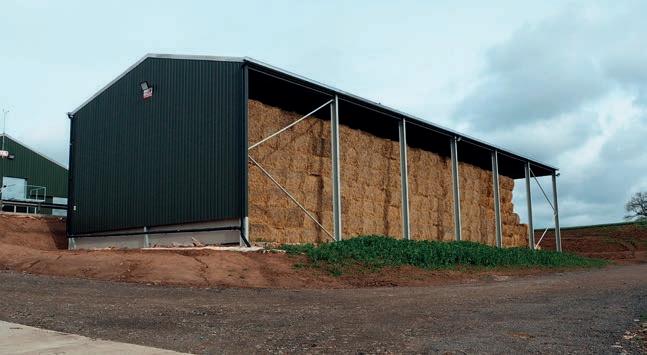
























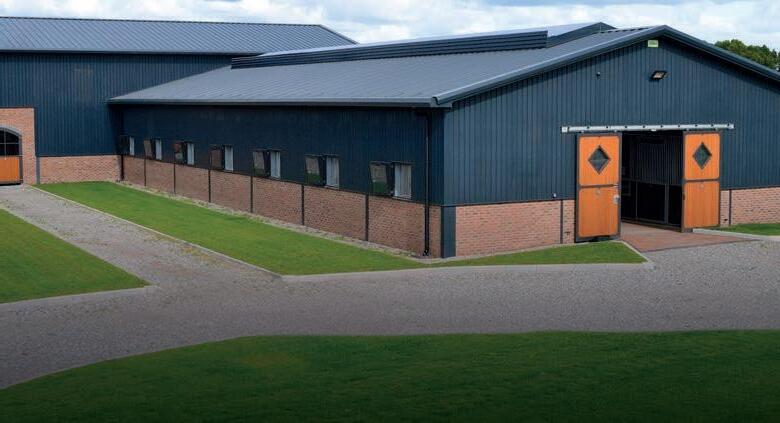








FOR SALE BY ONLINE AUCTIONTHURSDAY 14TH DECEMBER 2023
REGISTER TO BID FROM THURSDAY 7 DECEMBER 2023
Land at Whitehurst Lane, Dilhorne, Stoke On Trent, ST10 2PG
14.58 Acres or thereabouts of grassland with good road frontage and access from Whitehurst Lane, Dilhorne, suitable for mowing or grazing purposes with mains water connected.
Land off Upper Bindlow Lane, Flagg, Buxton, SK17 9QE
60.17 Acres or thereabouts of grassland suitable for mowing and grazing purposes with good road frontage to Upper Bindlow Lane and Gated Access.
Land at Edlaston Lane, Edlaston, Ashbourne, DE6 2DQ
11.37 Acres or thereabouts of sound grassland with gated access off Edlaston Lane suitable for grazing or mowing purposes and has previously been used for arable cropping.
Tel: 01538 373308

Planning Consultancy. Property Sales. Architectural Services.
Following the launch of the 2023 Sustainable Farming Incentive (SFI) offer, we have seen a greater interest and uptake from both our new and existing clients in the scheme, with many of them already receiving their first payment.
It has been found across the agricultural sector that many businesses have begun to look more favourably towards the SFI scheme and reap the financial benefits, while continuing to farm without changing their farming practices significantly.
Due to the structure of the scheme, it goes without saying that in order to gain the financial reward, there are management prescriptions which are required to be delivered.
Practices
However, many farmers have found that on reviewing their existing land management practices, they are already delivering many of the actions available under the revised 2023 SFI scheme.
Others are taking advantage of trying new farming methods to both enhance productivity and ensure a guaranteed income stream.
Since the relaunch of the revised 2023 offer, there has been a significant increase in the level of uptake of the scheme, by a range of farming enterprises.
Many arable farmers are utilising the payments available for soil testing, nutrient management plans and integrated pest management plans, as well as actions which are considered as either rotational or static, such as winter cover crops and break crops.
Livestock farmers are also taking advantage of the payments available for moorland and marginal land managed with low inputs, as well as enhancing



pastures with herbal leys, often producing better quality forage for livestock.
The three-year agreement has been considered by many as a viable scheme, providing farmers with the flexibility to continue to farm and produce food, with some farmers generating an income close to the Basic Payment, which they are in the process of losing.
As we progress through the remainder of the Agricultural Transition Period, it is anticipated that the Rural Payments Agency will release more actions, offering a broader range of payments for both environmental and sustainable farming practices.
We would advise all agricultural businesses to consider governmental support, in the form of environmental schemes.
If we do not take advantage, there is the risk that the finances which are currently allocated to the agricultural industry could be diverted elsewhere.
Also important is taking the opportunity when reviewing these schemes to assess your existing business to ensure a sustainable and viable future.
Megan Proctor is a chartered rural surveyor with Edwin Thompson in Carlisle. Call 07935 754 681, or email m.proctor@edwin-thompson.co.uk
Planning Applications. Appeals. Enforcement Notices. Certificates of Lawfulness. Dwelling Design. Equestrian Agricultural Buildings. Agricultural Occupancy Conditions.
PROPERTIES FOR SALE

NORFOLK, North Tuddenham
Planning Consultancy. Property Sales. Architectural Services.

www.acorus.co.uk
Well presented traditional 1970s 3 bed detached bungalow with large garden, double garage/workshop, parking located in sought after village of North Tuddenham.
SUBJECT TO AN AGRICULTURAL OCCUPANCY CONDITION
GUIDE PRICE: £305,000 (Ref: C375)
SUFFOLK, Bradfield St George
Planning Applications. Appeals. Enforcement Notices. Certificates of Lawfulness. Dwelling Design. Equestrian Agricultural Buildings. Agricultural Occupancy Conditions.
Planning Consultancy. Property Sales. Architectural Services.
PROPERTIES FOR SALE
www.acorus.co.uk
Well appointed large detached farmhouse with up to 9 bedrooms set over 3 floors inc attached self contained 1 bed annexe. Set in rural location with views over open countryside and a large garden.
SUBJECT TO AN AGRICULTURAL OCCUPANCY CONDITION
Planning Applications. Appeals. Enforcement Notices. Certificates of Lawfulness. Dwelling Design. Equestrian Agricultural Buildings. Agricultural Occupancy Conditions.


GUIDE PRICE: £760,000 (Ref: C374)
NORFOLK, Roudham
PROPERTIES FOR SALE
Impressive detached bespoke dwelling with spacious living accommodation offering 6 beds and various reception rooms set in good sized plot in quiet village of Roudham with outbuilding and tennis court.
SUBJECT TO AN AGRICULTURAL OCCUPANCY CONDITION
GUIDE PRICE: £1,060,000 (Ref: C371)
LINCOLNSHIRE, Carlton Scroop
4 bed single storey farmhouse providing ample accommodation & set in a good sized plot with detached double garage and mature garden. The dwelling was created from a converted barn and retains some original features.
SUBJECT TO AN AGRICULTURAL OCCUPANCY CONDITION
The National Rural Property & Planning Specialists Planning.
GUIDE PRICE: £455,000 (Ref: C383)

0345 340 5215
ESSEX, Shalford

Large 4 bed farmhouse set in good size plot with parking and established garden, set in a rural location to the north west of Braintree. An ideal family home offering ample accommodation.
SUBJECT TO AN AGRICULTURAL OCCUPANCY CONDITIONGUIDE
GUIDE PRICE: £525,000 (Ref: C376)
SUFFOLK, Laxfield
The National Rural Property & Planning Specialists
Two bedroom detached bungalow set in a rural location with good size garden, ample parking and detached garage.
SUBJECT TO AN AGRICULTURAL OCCUPANCY CONDITION
GUIDE PRICE: £272,000 (Ref: C372)
The National Rural Property & Planning Specialists
0345 340 5215


Personal professional service
• Over 30 years experience
• Compe ve fee structure
IN SCOTLAND? • Availability • Valuation • Legal • Finance


Down to Earth Advice
Web: www.daleslIp.co.uk
Email: land@scotlandfarms.co.uk
www.arcadianestates.co.uk DO YOU HAVE
Sites of 1- 1000 acres required for residential development. If you think that your land has potential for development, or you have been approached by a developer, then you will need expert advice that is not available at traditional sources.
Michael Rutherford is a specialist agent acting and negotiating for landowners. Contact me for a confidential and expert consultation at no cost. All areas of the UK covered.
We take a farmer-centric approach to media. Our job is to help farmers run their farms more e ciently and make better purchasing decisions Design. Property. www.acorus.co.uk

Farmers Guardian, Fginsight.com and fgbuyandsell.com (hereinafter referred to as ‘Farmers Guardian) may contain advertisements, links to other Internet websites or online and mobile services provided by independent third parties, including websites and telephone contacts of our advertisers and sponsors (what we call “Third Party Sites”), either directly or indirectly.
It is your decision whether you purchase or use any third party products or services made available on or via Third Party Sites and you should read below carefully. Our Privacy Policy does not apply to Third Party Sites. In no circumstances do we accept responsibility for your use of Third Party Sites or in respect of any Third Party products. By Third Party Sites we mean websites, online or mobile services provided by third parties, including websites of advertisers and sponsors that may appear in Farmers Guardian. By Third Party Products we mean products or services provided by third parties.
Farmers Guardian contains advertising and sponsorship. Advertisers and sponsors are responsible for ensuring that material submitted for inclusion on Farmers Guardian complies with international and national law. Farmers Guardian (nor its websites) is not responsible for any error or inaccuracy in advertising or sponsorship material.
Any agreements, transactions or other arrangements made between you and any third party named in, on (or linked to from) in Farmers Guardian and its websites are at your own responsibility and entered into at your own risk.
Farmers Guardian promises to develop and operate with reasonable skill and care and will use reasonable efforts to promptly remedy any faults of which it is aware. Farmers Guardian does not provide any other promises or warranties about its products and services. Farmers Guardian is provided on an “as is” and “as available” basis. This means that Farmers Guardian does not make any promises in respect of Farmers Guardian or the services and functions available on or through Farmers Guardian, Fginsight.com and fgbuyandsell.com or of the quality, completeness or accuracy of the information published on or linked to from Farmers Guardian, Fginsight.com and fgbuyandsell.com other than as expressly stated above.
The above disclaimers apply equally to your use of Farmers Guardian, Fginsight.com and fgbuyandsell.com without limiting the above; Farmers Guardian and its websites are not liable for matters beyond its reasonable control. Farmers Guardian does not control third party communications networks (including your internet service provider), the internet, acts of god or the acts of third parties.
Farmers Guardian liability will not be limited in the case of death or personal injury directly caused by Farmers Guardian negligence in those countries where it is unlawful for Farmers Guardian to seek to exclude such liability.
Any individual, who is in doubt about entering into a loan agreement, should seek professional advice or consult an authorised person who can assist in relation to entering into a credit agreement. Before acting on any information you should consider the appropriateness of the information having regard to these matters, any relevant offer document and in particular, you should seek independent financial advice.
All loans, loan participations and financial products or instrument transactions involve risks, which include (among others) the risk of adverse or unanticipated market, financial or political developments and, in international transactions, currency risk. Lending against non-traditional physical collateral exposes investors to specific risks such as the potential for fraud, theft, damage and illiquidity.




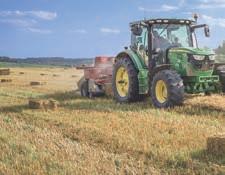




















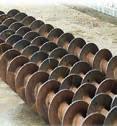


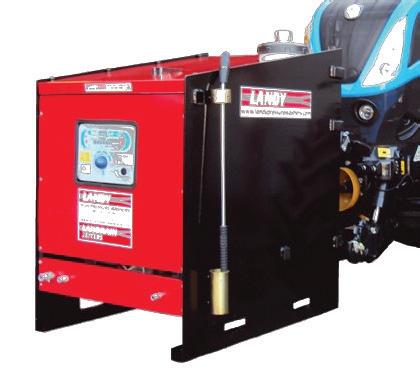






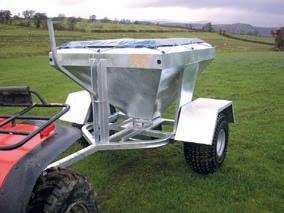
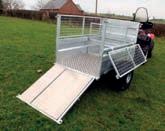

















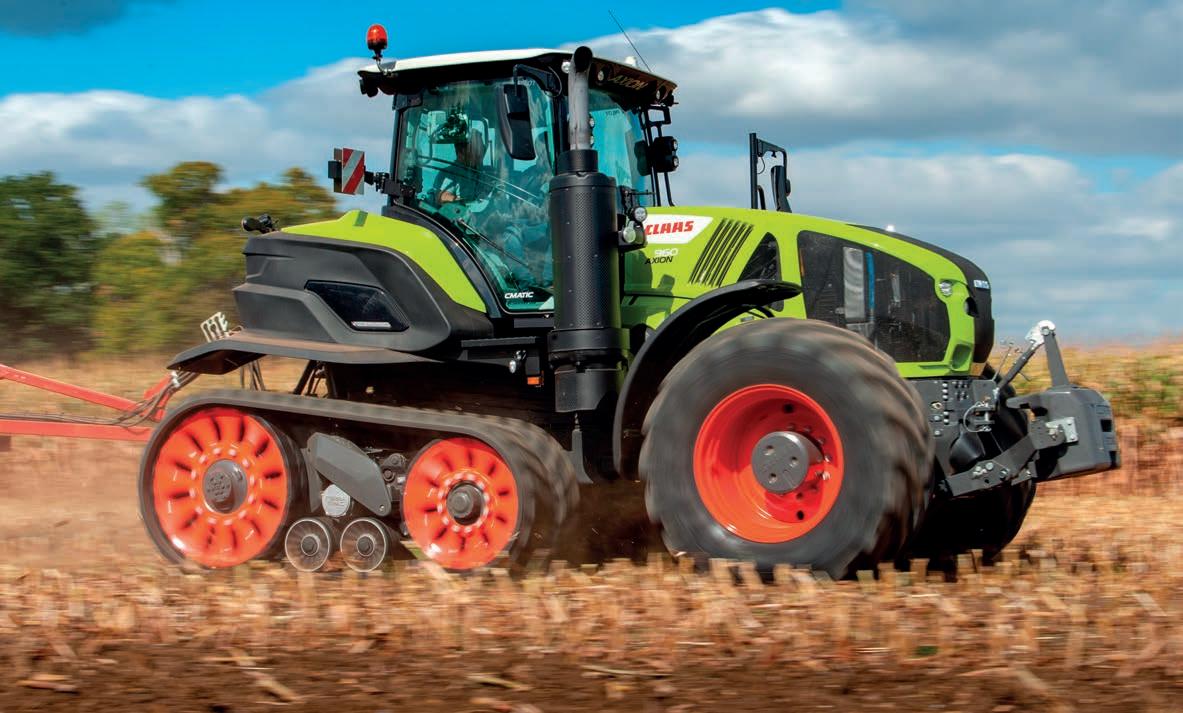










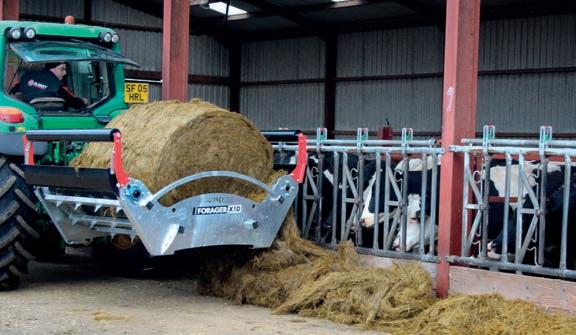












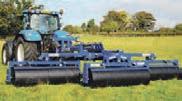




MARSHALL VES-1500. 9 Ton, Like New, Rear Discharge Spreader
£19,500

JCB 2CX 3300 Genuine Hours, 3 Spare Buckets
£15,750



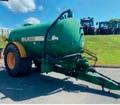
£18,350 MAJOR LGP2400 TANKER 2600, 2400 Gallon vacuum Tanker, Sprung Drawbar £6,950

JOHN DEERE 6320 PREMIUM 5248 Hours, 40k Autoquad, C/W Quickie Q46 MSL Loader
£31,000
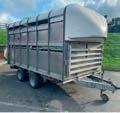
IFOR WILLIAMS LIVESTOCK TRAILER 2011 , 12 Tandem Axle, 3.5T Gross £3,950

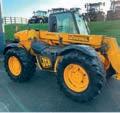
CASE PUMA 160 50k Full Powershi , ‘15’ Plate, Front Linkage + PTO, 5460 Hours £39,750 JCB 5265 4 Speed Manual Transmission, Pick Up Hitch £18,750
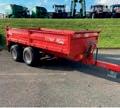
TRAILER 2022, M/P Dump Trailer, With Drop Sides, Ramp Carriers
£8,850

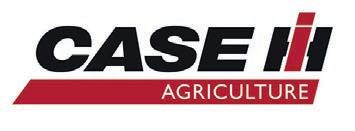

MASSEY FERGUSON 5475 40k Dyna 4 Gearbox, 4 Speed pto, CAT 3 linkage, ‘09’
£27,500
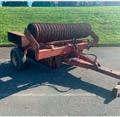
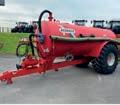

REDROCK 1600 GALLON TANKER 2001, Single Axle 8 Stud ADR, Sprung Drawbar £5,750

SUPER VITESSE plus 3101 2600 Load Count, 2010, Chop Length 39mm PHONE FOR PRICE 20 FOOT HYDRAULIC FOLDING ROLLERS C/W Breaker Rings, Stone Boxes, Cousins Design £2,350 NC 16 Ton Low Loader 2018, Sprung Drawbar, Led Lights, Air & Hydraulic Brakes £13,350
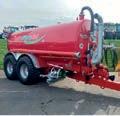
3500 GALLON TANKER Steering Axle, Dribble Bar Ready, In Stock PHONE FOR PRICE










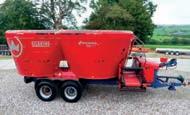


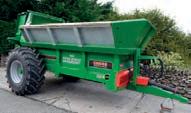


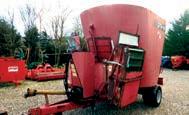






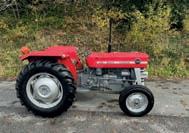






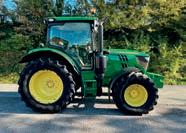









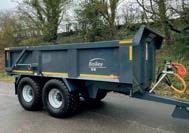
















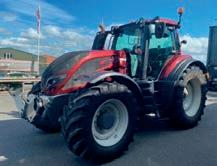
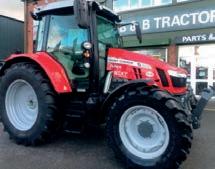








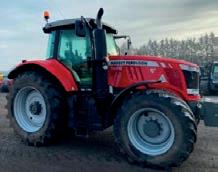















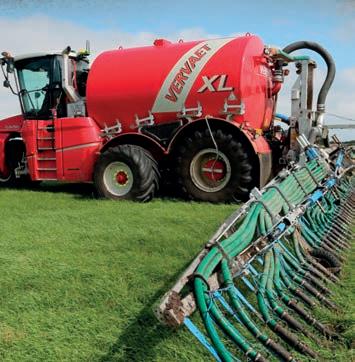


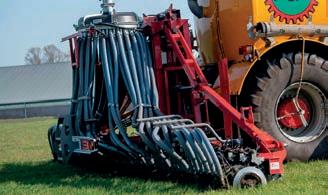

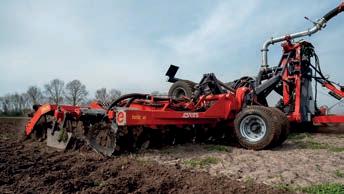
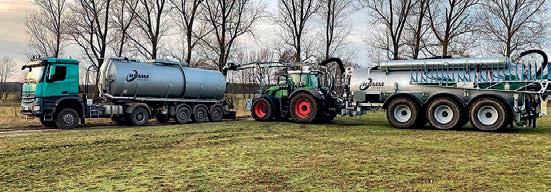









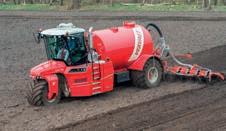
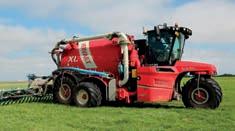




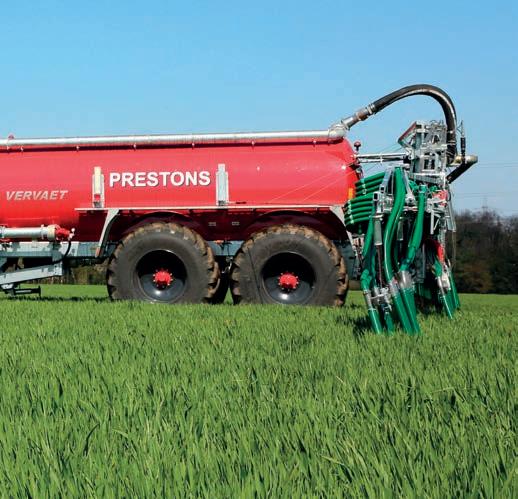



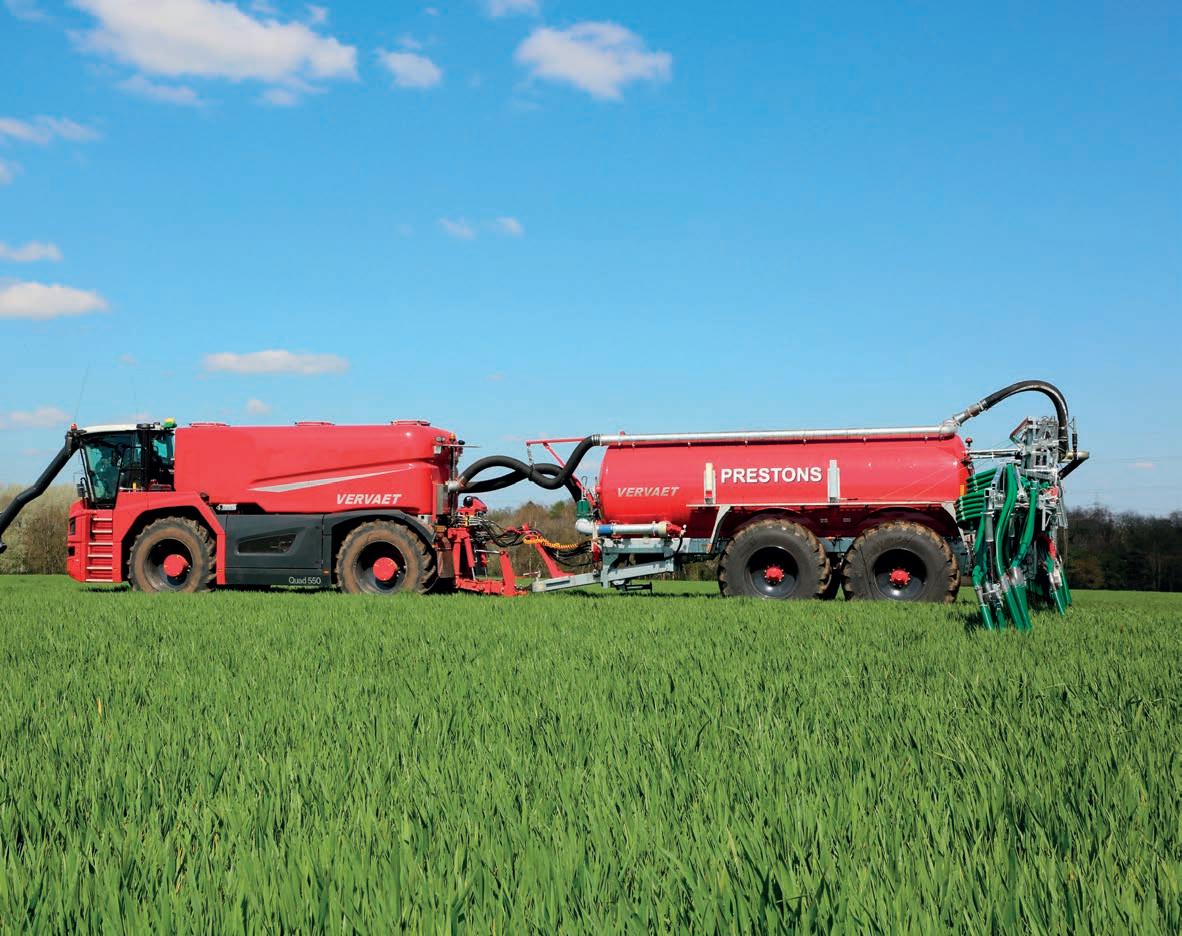




WEIDEMANN 7042 Telescopic 40kph. 2023 Demo, JCB Q-Fit headstock.

JCB 50-Z EXCAVATOR, Quick hitch, 2021, 572 hours, ex Training Board.


ISUZU DMAX UTILITY Double cab Automatic, Mercury Silver metallic, 500 miles. £28,995 + VAT.
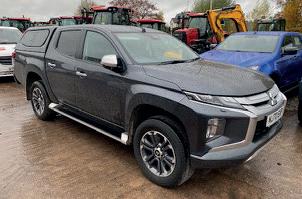
MITSUBISHI BARBARIAN X manual, rear canopy, 2020, 62000 miles, tow bar & liner. £20,995 + VAT.


WEIDEMANN 6027 TELESCOPIC, 2019, 3200 hours, pallet forks, 3rd service.


JCB
LC
4200 hours, Quick hitch, can be seen working.

ISUZU DMAX UTILITY Extended cab, load liner, towbar, diff lock. 4120 miles. £24,995 + VAT.

FORD RANGER WILDTRAK Automatic, 2021, 21292 miles, lots of spec. £28,995 + VAT.
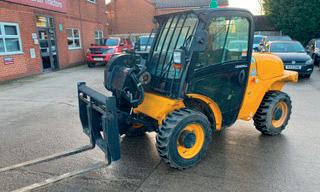

FARMALL 95A POWERSHUTTLE, 2015, 1600 hours, 420/85 x 34 tyres, 2DA. Trailer brakes.

grading bucket, 4790 hours.

JCB 18-Z1 MINI EXCAVATOR, 2019, adjustable track width, back fill blade.

NEW ISUZU DMAX DL40 Automatic, Onyx black metallic, lovely truck. £36,099 + VAT.

ISUZU DMAX V-CROSS double cab, 2022, 13125 miles, lots of spec. £32,995 + VAT.

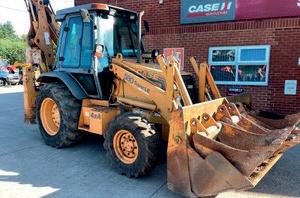
CASE 580 SUPER LE DIGGER, 4830 hours, set of buckets, Extendahoe, Ride Control.

U55

ISUZU DMAX V-CROSS double cab Automatic, 2021, 25654 miles, electric roller shutter. £31,995 + VAT.

ISUZU DMAX V-CROSS Automatic, 2023, call for full spec. £36,995 + VAT.

Edited by Toby Whatley – 07583
Although contractors can rattle through hundreds of acres of grass harvesting a day with a self-propelled forager, buying a forage wagon to run alongside this operation has offered a Lincolnshire beef farm flexibility to deal with bad weather and improve harvest timeliness. Farmers Guardian reports.
Arapidly growing herd of Wagyu beef cattle has presented some logistical challenges for G.H.B.P Holdings during grass harvest, prompting the farm to invest in a Fendt Tigo forage wagon to add flexibility to the busy setup.
Last year’s drought highlighted issues at the farm, with heavy clay soils baking out and grass growth stunted across the 320 hectares of rented and owned ground around Willingham by Stow, near Lincoln.
This caused feeding and grazing issues for the 1,600-strong herd, which was due to reach 2,000 by autumn 2023.
About 600 youngstock stay
outside until they reach 16 months old, when they are brought into purpose-built sheds for fattening until being sold at 26 months.
The farm relies on a contractor for most of its grass harvest, but was keen to add an in-house harvesting option to gather some of the later, lighter cuts, and have the flexibility to tidy up around the edges of grazed fields.
Operator James Needham says:
“We had a great first cut last year, but the second and third cuts were light due to the drought, so we demoed a Fendt Tigo 60 PR forage wagon for the third cut to trial if we could handle this by ourselves.
“We wanted more flexibility to keep the indoor cows fed on a



zero grazing-style system if the contractor was not available. The Tigo came recommended by several people and our local dealer, B and B Tractors, was keen for us to try one.”
The Tigo was not purchased to replace the contractor, as the size of the farm’s first cut would mean they would need several of them.
The aim was to offer additional flexibility throughout the year, with the Tigo’s 36cu.m capacity, and chop length of 40mm, able to offer the farm team the option to harvest when it suited them.
“The early part of this spring was wet, which delayed harvest and meant we would run out of grass for the indoor cattle, with the contractor a few days away from getting to us.
“Having the Tigo allowed us to collect 40ha by ourselves, using
We wanted more flexibility to keep the indoor cows fed on a zero grazingstyle system if the contractor was not available
JAMES NEEDHAM







our front mower and the Tigo to collect the grass in a one-pass system. This kept the cows fed and it also helped lower the compaction on the wet ground with the 710mm-wide flotation tyres.”
A set of triple mowers with groupers means the farm does not use a rake as it had suffered quite a lot with contamination in the past.
Using the groupers has drastically reduced this, but does mean if the grass is cut wet, wilting is slower due to the lack of air movement through no tedding. Mr Needham says the Tigo needed an adjustment in the early stages to deal with rows that had not been moved.
“When we first bought the Tigo, B and B removed the sward protector roller under the pickup reel as the tines would not go low enough to collect all the crop. This manages the


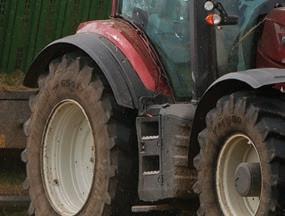
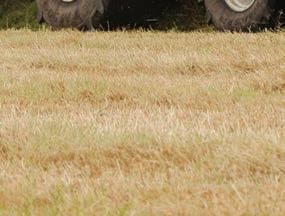

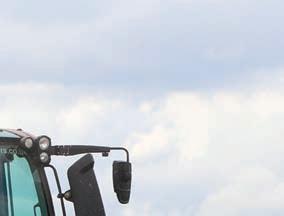
Fendt Tigo taking regular cuts from a recently acquired grass field.
The adjustable bulk head helps manage the harvested crop.


tine height and helps prevent the tines from hitting the sward, however, we needed to go lower as our rows needed lifting directly from the ground. This helped massively and we now do not miss any of the crop.”
The Tigo was also used during first cut this year to help with the silage cart from the field to clamp.
Although not its primary use, the additional trailer took some pressure off the other drivers and it was the only trailer that did not get stuck, due to the flotation tyres spreading its weight over the damp ground.
“We were careful to only load the rear of the trailer and let the grass fall forward. This avoided any issues with the forager blasting grass into the knives from above.
“We also kept the system clear by collecting a small row of grass when empty in-between each fill.”
A FlexSharp knife sharpener reduces the amount of time spent sharpening knives and helps reduce fuel use as the knives stay sharper for longer.
Mr Needham says it took a little getting used to, but it does not require each knife to be removed oneby-one for sharpening.
The farm is a mix of owned and rented land in a three-mile radius, with 70ha of maize and the rest down to grass and grazing.
The youngstock are kept on a grass-based diet with the finishers moved to a high starch, maize-based
ration. A Valtra T234 powers the Tigo on a regular basis and operation is directly through the screen via IsoBus, which makes setup simple, and the Tigo’s automatic door manages filling the trailer.
The simplicity of the forage wagon has meant the farm has used it more than expected.
Mr Needham says: “We have been surprised by how much we use it and we would struggle without it now, as our only option to tidy up grass that had got away was to round bale it.
“This was an extra contractor cost and bales do not suit our system, so they created extra work when storing and feeding — the box allows us to be more flexible.”
Some extra land has recently been purchased in the village which has been down to long-term permanent pasture.
Some of the ground has been grazed by the youngstock, but part of it has been kept for immediate feed for the indoor cows, with the Tigo and front mower working in a zero-grazing operation.
“We did not expect to use it like this, but it is providing us with an ideal way to clear up some tired pasture.
“The crop is thick, so the tractor is on its knees powering the mower and Tigo together, but we are cutting a full box every three days that is consumed immediately.
“I can spread 700-tonne of slurry in the morning and then harvest some grass with the Tigo in the

afternoon. It has allowed us additional options when it comes to grass harvest.”
With quick grass growth in the spring, the youngstock can struggle to consume it all, which leads to some areas getting away from the cows, turning unpalatable, stemmy and too fibrous, which means it is then left, as Mr Needham explains.
“As herd numbers have increased, this has become an issue and means the fields turn quite untidy and new growth is not encouraged because of the longer, older stems.
“We used to just top it with the mowers, but part of the reason for investing in the Tigo was to harvest these areas before all the grass quality had been lost and mix it in
with the ration, meaning we are making the most from all the crops.”
Mr Needham can easily tidy up several fields in one hit with the Tigo when it is coupled to a front mower and produce several boxes of additional feed that would not have been viable a few years ago.
Output is dependent on the crop and how busy the farm is.
“If we harvested first cut with the box, output would probably be around 20ha/day as the crops are heavy, but this would be doubled during lighter second and third cuts.
“Running the Tigo has offered us flexibility that we did not have when we only relied on a contractor and it has become a key part of our harvesting setup,” he says.

Vaderstad’s TopDown and Opus with E-Services provide a step change in cultivation automation. Tom Woolman reports from the launch in Vienna, Austria.
SWEDISH manufacturer Vaderstad claims to have broken new ground in cultivation technology with the addition of E-Services to its popular TopDown and Opus machines.
Adjusting cultivators has historically involved stopping the vehicle, grabbing a spanner and applying some elbow grease to make manual alterations. However, this timeconsuming process has made it difficult to cultivate ground efficiently when dealing with different soil conditions.
Wolfram Hastolz, director of tillage product management at Vaderstad, said: “We have seen a demand from farmers to optimise the tillage operation even further. By being able to adjust the machine setting to the conditions on the field, it is possible to optimise the agronomy and working results.”
Vaderstad’s new machines allow sections of the cultivator to be adjusted remotely from the cab, either preprogrammed using prescription maps through the IsoBus system or manually adjusted as required using iPad-based controls. Four preset profiles can be made in the cab, allowing the operator to manually switch between predetermined settings.
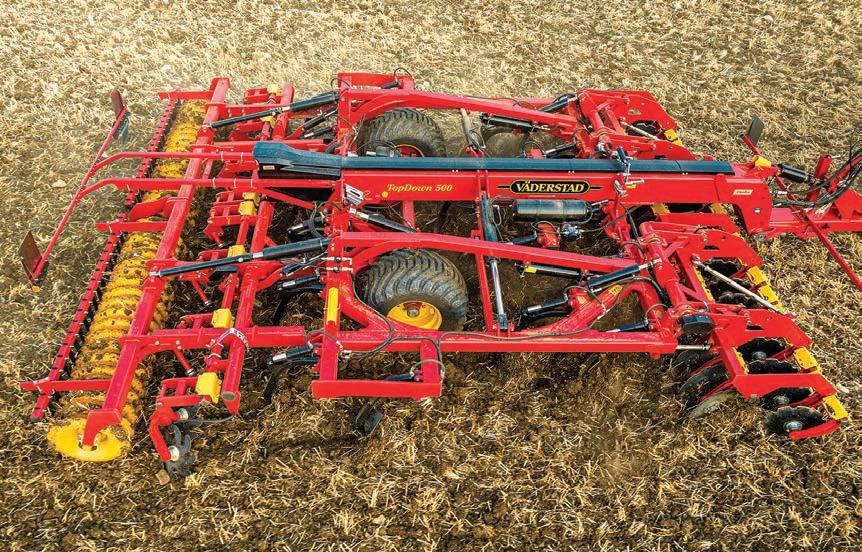
The first three sections of the TopDown – discs, tines and leveller –can be set via digital controls to within the centimetre. The roller can also be adjusted for pressure, catering for ranges in moisture content or different soil types. The machine is also said to compensate in real time for changes

iPad-based controller.
in settings or the wear of parts, with depth and pressure remaining constant at the set level required.
Ed Hutchinson, technical specialist for Vaderstad UK, has been working on the development of the technology for some time.
He said: “We can dynamically adjust the machine on the move so we always have the right setting. It puts the operator in total command of the machine.
“If you think about the detail and effort we put into setting up a planter
DUE to high demand for products such as the Tempo seed drill in worldwide markets, Vaderstad’s business has grown rapidly in recent years.
In the 2022 financial year alone, revenues grew by 25 per cent and annual turnover is now equivalent to just over £400 million.
The business is family-owned, with Henrik Gilstring being the third generation to run the company, assuming the chief executive position last year.
Speaking at a recent press
or seeder, we can now apply this same precision to cultivation.”
Many farmers will be familiar with the use of prescription maps for the application of fertiliser, allowing the optimal trade off between agronomy and economics to be made for individual parts of the field.
The same system can be used with the E-Services cultivations, with areas such as tramlines capable of being automatically cultivated at a greater depth.
The system uses hydraulic load sensing (LS) to maintain a constant
event, he commented on the company’s position.
He said: “The challenge has been to grow the capacity of the business while maintaining quality.”
Vaderstad has stopped supplying implements to Russia and has a reduced volume going to Ukraine, and the impacts of the conflict on farmers around the world was noted.
“With tough times for farmers there are also tough times for people supporting farmers such as ourselves,” added Mr Gilstring.
VADERSTAD unveiled its precision drill, Proceed V as a concept in 2021. This takes the precision technology developed in the Tempo drill range and allows it to be used with crops with a wider range of seed sizes, including wheat, barley and oilseed rape.
The premise is that individual seeds can be planted at speed
pressure in the hydraulic system. Mr Hutchinson said it means the machine can respond in one to two seconds, arguing that this gives an advantage over a regular spool valve.
However, he said that the LS system can be replaced by conventional hydraulics if the tractor pulling the cultivator does not have those capabilities.
Other benefits claimed are a reduction in diesel consumption and parts wear, as cultivations only need to be as deep as absolutely necessary. Some operators may be wondering if this technology can be retrofitted to existing machines, but Vaderstad says this will not be an option.
The TopDown and Opus with E-Services are available to order now, with production commencing in early 2024.
The price for a four-metre-wide TopDown 400 with E-Services will be £95,465, rising to £133,140 for the 7m wide TopDown 700. The Opus machines with E-Services will have a price range of £71,905 to £100,700 between the 4m and 7m models.

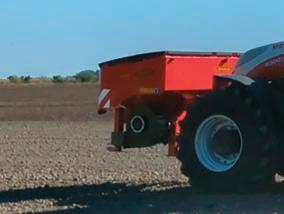


for cereal crops as well as larger seeds, making it a ‘one machine for all’ when it comes to drilling.
According to Vaderstad, one of the main benefits of the Proceed V will be the ability to reduce seed rates while maintaining yield and saving input costs.
The manufacturer has conducted research reducing seed rates with


its Proceed V prototype over three harvests. It claims to have demonstrated that by reducing seed rate from 200 seeds per sq.m to 150 seeds/sq.m, yield will remain the same or better than with the conventional drill equivalent.
Lower seed rates may bring benefits, not only for input costs but also improved efficiencies, as

drills can work for longer without the need to refill, therefore improving sowing logistics.
Vaderstad has been continuing to develop the Proceed V for the commercial market and has announced that it will be available to order from autumn 2024, with deliveries on-farm from spring 2025.


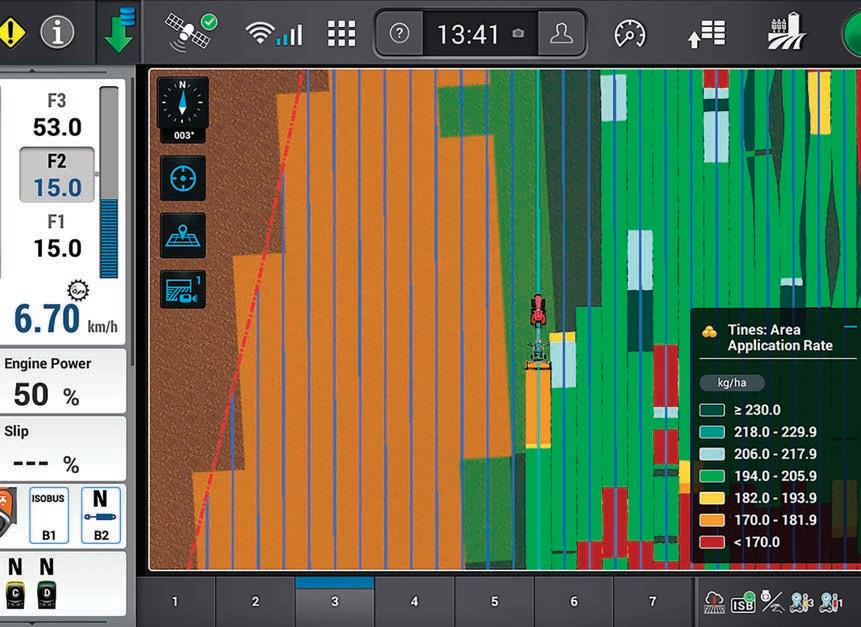







working is offered depending on the soil type or compaction. Below: The Proceed precision drill for cereals aims to reduce seeding rates without reducing yields.






Visitors and exhibitors from around the world descended on Harrogate for the British Potato Event. James Huyton looks at the latest developments from the show.
Amidst a challenging harvest for many potato growers, the British Potato Event was an opportunity to catch up with suppliers and fellow producers. The two-day event hosted a number of seminars alongside showing an array of new machinery and services.
Speaking at the event, Mark Taylor, representing GB Potatoes, said: “The industry faces a number of challenges, with the cost of production remaining high, uncertainty over plant protection products, water abstraction licences and pressure
from potato cyst nematode all creating risks for return on investment.”
Even with stark words of realism, the mood of the event remained positive that the industry could tackle the challenges ahead with the right research and investment.
Machinery developments at the show reflected an outlook with productivity and performance at its core.
Ultimately, consumer demand and major processors’ ambitions will drive the industry’s sustainable credentials, with many speakers highlighting a lack of positive policy focused on the economic value of UK potato production.
FOLLOWING the launch of the two-row variant last year, British manufacturer Standen showcased a four-row variant capable of offset working at the event. This high-capacity derivative uses the same cup design first seen on the SR200. Cup planters have lost ground in sales, often struggling to grapple with long and irregular seed.
The manufacturer sees the SR400 as a turning point, with the incorporation of a new cup system capable of planting long and variable seed at a claimed 99 per cent accuracy rate. Prospective buyers could see potential cost savings in seed, with accurate singular placement of seed over a belt placement alternative.
The trailed unit will feature a rear
steering axle and hydraulic side shift for offset working. Individual row reception areas have been incorporated into the design to hold seed pre-planting from a 5,000kg hopper.
An optional electric seed return shaker kit can be specified for hill work. Sliding planter units can be adjusted to work on 750-900mm row widths, with a narrow share designed to reduce seed roll.
The steering axle operates on a hydraulic slide, giving the unit a transport width of 3.5 metres and a working width of 3.9m. Standen’s SR400 will require a minimum power output of 150hp, with standard units retailing at £139,000.

FRESH from Agritechnica, Grimme gave the first UK showing of the new Toppa 600. Following the withdrawal of Diquat, manufacturers have been quick to offer alternatives, such as precision haulm removal.
The latest variant offered by Grimme features hydraulic height control and side shift, with feeler
bars allowing for automatic self-centring on ridges.
The three-bed topper has a working width of six metres, with the latest derivative requiring a 140-150hp tractor requirement.
An increased hood size on the latest variant also allows for greater material throughput, claims the manufacturer.


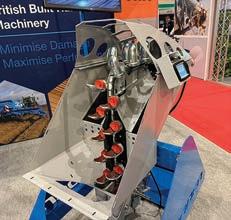
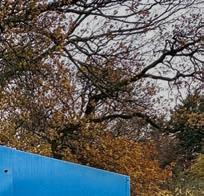
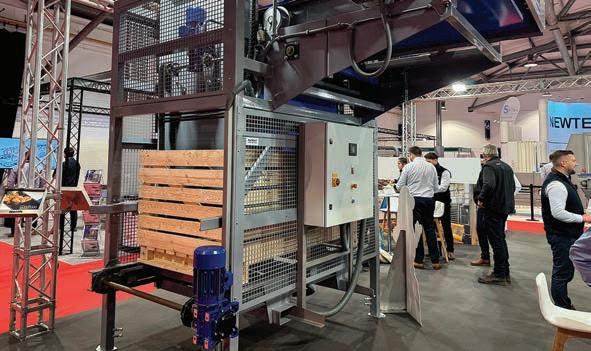
HAITH has expanded its Rota-Tip box tipper range with the addition of feed-in and feedout, box stacking and de-stacking functionality. Operators using the modular system will be able to front-load four empty potato boxes for filling.
Once loaded by a forklift operator, the machine will
automatically move and fill the empty boxes, restacking the loaded boxes in pairs on the other side of the machine ready for forklift collection.
Prospective buyers considering the system can also specify an optional weigh cell system and secondary twin stack holding bay for full boxes.
NUFARM exhibited their new solution to potato desiccation working in conjunction with German agricultural technology start-up Crop Zone. The agrochemical specialist has launched Nucrop: an electrical desiccation system, which will be offered in nine- and 12-metre variants.
The Nucrop system applies a conductive solution of water, nitrogen and mineral as an
activator. A 140kW output is required at the tractor pto shaft, to deliver 2,500-5,000V across 16 applicator units.
The manufacturer claims the system delivers effective crop desiccation without chemical residue in the crop. Nufarm is currently looking at contracting options for the system and sale of individual units to larger farming enterprises.

DOWNS set out plans to roll out its latest range of optical sorters. Available in working widths from 1,100 to 2,800mm, the modular system can be incorporated into existing grading lines and opposing manufacturers’ systems.
Taking 40-80 images per second, the grader creates a 360-degree image of each potato, detecting defects through soil coverage of unwashed crop.
Operators can select the removal of potatoes based on the chosen type of defect.
Data delivery of each potato defect is displayed on the machine’s touch-screen terminal, with operator adjustment of removal intensity decided through a zero to 100 sliding scale. Pintle belts reduce potato roll and damage with a 400mm drop to the exit belt.


SELF-PROPELLED operators looking to step away from tracked units had the opportunity to view Dewulf’s six-wheeled Enduro. The four-row machine incorporates a sliding front axle for 3.6-metre transport widths and transportation speeds of up to 32kph.
The manufacturer claims reduced road wear as one of the main benefits of the steering axle system compared to tracked units.
Dewulf says operating Michelin Cerexbib VF 750/65R26 tyres at 1.6 bar gives the Enduro a soil contact patch equivalent to three-quarters of the area of a tracked variant.
The two 9,000kg rear axles take 70 per cent of the vehicle load to reduce front-end weight. On the move, unloading is possible with the 10,000kg bunker, working in conjunction with the 1,200kg holding capacity on the unloading elevator.
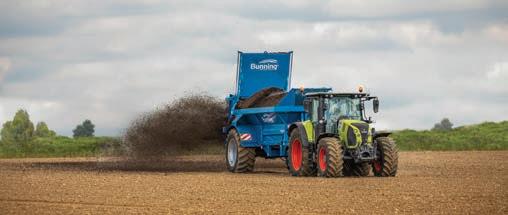













Telehandler manufacturers JCB and Merlo will launch two additional models to their respective ranges at LAMMA 2024. Toby Whatley reports.
FOLLOWING previews at Agritechnica, JCB will be showing two new higher capacity handlers with a 9.8-metre reach, 4.2-tonne lift 542100 machine and a power increased 6t lift, 8m reach 560-80 model.
Both machines are supplied with an Agri Pro specification which uses a 173hp version of the manufacturer’s four-cylinder, 4.8-litre engine. Using a combination of a hydrostatic and a powershift drive, the DualTech VT transmission claims to offer users a functional split between a hydrostatic drive for lower-speed applications and powershift for higher speeds and road travel.
Aimed at businesses rehandling and stacking large quantities of bales, the 542-100 is capable of a maximum road speed of 50kph, with hydraulic outputs of up to 160 litres/minute.
The heavier lift 560-80 is provided with the same hydraulic capacity, with the transmission offering a maximum road speed of 40kph.
JCB says the 560-80 is the most powerful 6t lift machine on the

market and has been developed in response to customers looking for larger machines for bulk
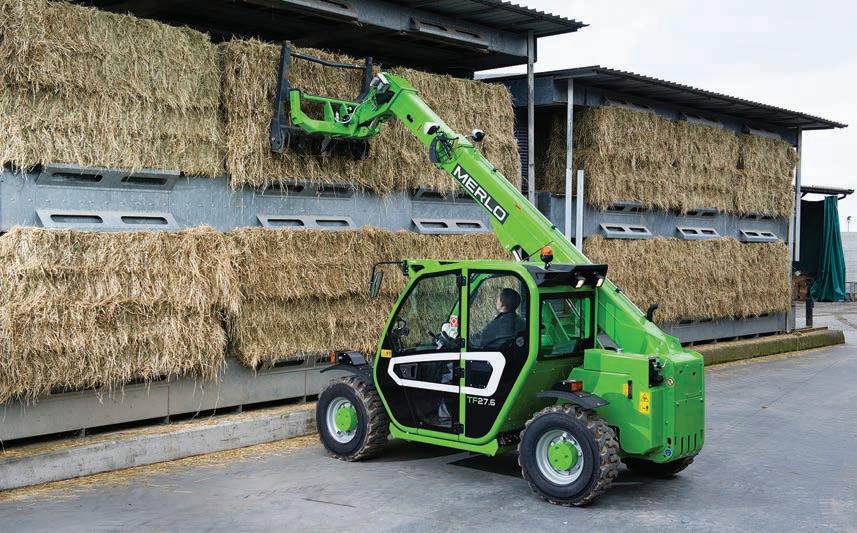

Italian manufacturer Merlo will be showing two new compact Turbofarmer models. Developed as a successor to its popular P32.6 machine, the new TF 30.7 has an overall width of 2m, with a choice of cab specifications with heights of 2.1m or 1.9m in its low-profile design. Power is supplied from a 100hp Deutz four-cylinder engine with lift capacities of 3t to a maximum height of 7m.
Drive is fully hydrostatic, with a claimed maximum road speed of 40kph. Unique for a machine of this size, the TF 30.7 can be supplied with optional cab suspension.
Said to be a compromise between size and power, Merlo’s new TF 27.6 allows a lifting capacity of 2.7t to a maximum height of 6m. With an overall width of 1.9m and a height of 2.2m, the compact machine has been designed for pig and poultry customers, and those operating machines in smaller, traditional buildings.
All four new machines can be seen at LAMMA Show, held at the NEC on January 17-18, 2024.









The UK’s first Farming Simulator League is coming to LAMMA 2024
8 teams will battle it out to win a prize pot of 15,000€

DO YOU HAVE WHAT IT TAKES?
Scan the QR code (bottom right) to register for the UK Farming Simulator League




BE PART OF THE ACTION!














Scan the QR code to register for your FREE LAMMA 2024 ticket.






Find out more at LAMMAShow.com/farming-simulator-league




ENTER HERE
Edited by Katie Jones – 07786
There was a strong show of stock at the Scottish National Fatstock Club’s
event, which made for a successful two days of showing at

TAKING top honours in the prime cattle section was the 17-month-old Limousin cross heifer, Starlight, from James Nisbet and family, Sorn Mains. It marked a second consecutive championship win for the Nisbet family, who won the supreme sash at last year’s event with the heifer’s paternal sister, Moonlight.
The Gallaber Leo daughter was purchased from James Huck, Hubberholme, at Pately Bridge auction market in March this year, and took the top spots in the commercial sections at this year’s Royal Highland and Royal Welsh shows.
Crossing the weighbridge at 704kg, the champion went on to sell for £9,800 at the post-show auction to Andrew Ewing, Annan.
Judge Gareth Corrie of the Drumhilla Limousin herd and Corries Farm Butchers, Newtonards, said his champion was ‘an exceptional beast’.
Standing reserve supreme was the reserve heifer champion, Phoenix, a Limousin cross, March 2022-born heifer from Stewart and Lynsey Bett,
Prime cattle
Inter-breed (Judge, G. Corrie, Newtonards)
Supreme and heifer, J. Nisbet, Starlight (Limousin cross); reserve and res. heifer, S. and L. Bett, Phoenix (Limousin cross); steer, A. Gammie, Top Boy (Limousin cross); res. steer, W.A. Peters, Tyson (Limousin cross).
Butcher’s champion (S. Strachan, Glasgow) Sup., A. Purdon and partners, Carluke (Limousin cross heifer); res., Anderson and Blair (Limousin cross bullock).
Commercial calf (D. Lewis, Llanwrda) Sup., S. and L. Bett, Electra (Limousin cross heifer); res., A. Wilson, Fire Cracker (Limousin cross steer). Native (G. Corrie) Sup., P. Hunter Blair, The Wee Man (Galloway bullock); res., G. McFadzean, Cherrybank (Aberdeen-Angus bullock).
Housewives choice (S. Strachan) Sup., J. Mackay Parker, Gold Rush (Limousin cross bullock).
Dairy (D. Brewster, Bearsden) Sup., J.D. Baillie, Dalserf Demon Corneliske 442 (Holstein); res., R. Scott and K. McInnes, Nethervalley Kingpin Sara.
Inter-breed (A. Morton, Lochend) Sup., J. Guthrie (Beltex cross); res., R. Hall and Son (Dutch Texel).
Blackface (A. Morton) Sup., R. and B. Dickie; res., R. and B. Dickie.
North Country Cheviot (A. Morton) Sup., K. Stretch; res., J.W. Frame. South Country Cheviot (A. Morton) Sup., T.N. Cavers; res., A. Reid.
Mules and crosses (A. Morton) Sup., F. Smith; res., C. and F. Frame.
Butcher’s lambs (A. Morton) Sup., J. Guthrie
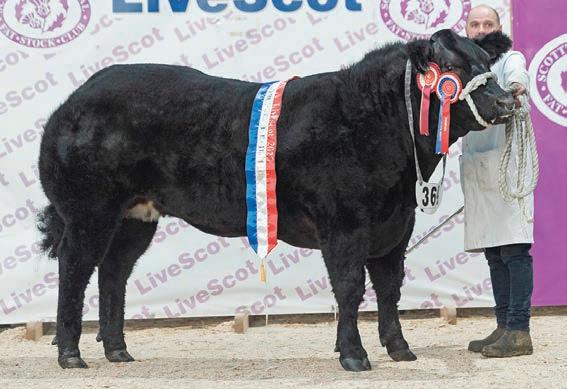
Inter-breed prime cattle champion, Starlight, a Limousin cross heifer from James Nisbet and family, Sorn Mains.
Stirling. By Redriver Powerful and out of a British Blue cross Limousin cow, the heifer was purchased from Balfour Baillie at Thainstone market in September last year.
Placing second in its class at both Agri Expo and the Royal Welsh Show this year, the 666kg heifer was heading to the Welsh Winter Fair next.
Snatching the overall champion
(Beltex cross); res., R. Hall and Son (Dutch Texel). Young breeder’s lambs (A. Morton) Sup., C. and R. Baillie; res., A. Skelton.
Pedigree cattle
Inter-breed (D. Gall, Lockerbie) Sup., Delfur Farms, Delfur Nifty (Simmental); res., R. McCornick, Ricnick Tyson (Charolais).
Galloway (W. MacLean, Oban) Sup., A. McClymont, Kirkstead Gangster; res., P. Hunter Blair, Foxglove Eyebright. Aberdeen-Angus (J. Morton, Annan) Sup., H. and E. Duncan, Longbank Paramount Z892; res., J. Rettie, Hillfoots Evie Z019. Beef Shorthorn (W. MacLean) Sup., B.R. Wear, Dunsyre Lily 101; res., C. Dunlop, Stallashaw Senate. Hereford (C. Souter, Packington) Sup., G. and S. Harvey, Harveybros 1 A-Ladies-Man; res., G. and S. Harvey, Harveybros 1 Crocus Absolut Rose. Limousin (C. Souter) Sup., J. and J.F. Nimmo, Maraiscote Ubeauty; res., J.M. and S.M. Priestley, Brontemoor Tropipop. Native (W. MacLean) Sup., A. and S. Campbell, Crawlaw Jura (Belted Galloway); res., D. and C. Logan, Katie Morag 21 Of Blairlogan (Highland).
British Blue (C. Souter) Sup., K. Watret, Solway View Tasmin; res., A. and I. MacInnes, Ruaig Stella. Charolais (J. Morton) Sup., R. McCornick, Ricnick Tyson; res., J. Wight, Midshield Tilly.
Simmental (J. Morton) Sup., Delfur Farms, Delfur Nifty; res., Delfur Farms, Delfur Weigela N12.
Pedigree lambs
Inter-breed accredited (B. Ingram, Inverurie)
Sup., D. Hodge (Beltex ewe lamb); res., K. O’Connor (Texel tup lamb).
Inter-breed non-accredited (F. Smith, Biggar)
Sup., J. Guild (Mule ewe lamb); res., J. and A. Boswell (Blackface ewe lamb).
steer sash was a 19-month-old Limousin cross steer, Top Boy, from Andrew Gammie, Laurencekirk, Aberdeenshire. By the stockbull Johnstown Premier, the 758kg steer was purchased from Hugh and Stewart Dunlop, Holehouse, Ochiltree, at last year’s Welsh Winter Fair.
It placed reserve overall commercial champion at this year’s Royal Highland and Great Yorkshire shows and was sold at the event’s post-sale auction for £3.35/kg to Bowland Foods, Preston.
Reserve steer was Tyson, a Limousin cross from Wilson A. Peters, Monzie, Crieff. Weighing in at 788kg and by Huntershall Nutcracker, it
was bought from Brian Harper, Greenwells, at the Carlisle Spring Spectacular sale in March.
The champion commercial calf was another from Stewart and Lynsey Bett; an eight-month-old Limousin cross heifer named Electra. Purchased from Balfour Baillie at the Thainstone Spectacular show and sale in August, the Ronick Redhot daughter placed first in its class at Agri Expo and second at Stirling’s Stars of the Future. It heads to the Welsh Winter Fair next.
Standing reserve in the commercial calf section was Fire Cracker, a ninemonth-old steer from Amy Wilson, Ellonby, Cumbria. The Limousin cross steer was purchased privately from S. Hardisty, Ennerdale, in August and placed second in its class at Agri Expo. Weighing in at 376kg, the steer was to be retained for the show circuit next year.
In the prime sheep classes, it was the champion butcher’s lambs which were named the supreme sheep champions – a pair of untrimmed, three-quarter Beltex lambs from John Guthrie, Muthill. The April-born lambs out of a home-bred tup weighed in at a combined 85kg, and sold for £300/head to Stuart Stark, Bluebell, Milton of Campsie.
Standing reserve overall in the sheep rings were the reserve butchers lambs – a pair of Dutch Texel lambs from the Hall family, Inglewood Edge, Dalston, who won reserve overall at last year’s event. Weighing in at 39kg each and out of a home-bred Beltex

Reserve inter-breed prime cattle champion, Phoenix, a Limousin cross heifer from Stewart and Lynsey Bett, Stirling.

Inter-breed sheep and butcher’s lambs champions, a pair of untrimmed, three-quarter Beltex lambs from John Guthrie, Muthill.
cross ewe, the lambs went on to sell for £250/head at the post-show auction, again to Stuart Stark.
Taking the winning ticket in the hill championship was Alistair and Johna Dickie, Spango, Sanquhar, with the Blackface and native winners. The pair, which were sired by a Waterhead tup and out of a home-bred ewe, crossed the weighbridge at the combined weight of 99kg. They made £226/head and were knocked down to Russel Lawson, West Lothian.
Alistair and Johna Dickie also stood reserve with their reserve Blackface champions; a pair of lambs sired by a Dalchirla tup which the Dickie family purchased for 1,600gns from Stirling. They weighed in at a combined 92kg and sold for £185/head to Ballards Butchers, Castle Douglas.
Dairy Champion in the dairy rings was Jimmie Baillie, Ashgill, Lanarkshire, with a senior in-milk cow, Dalserf Demon


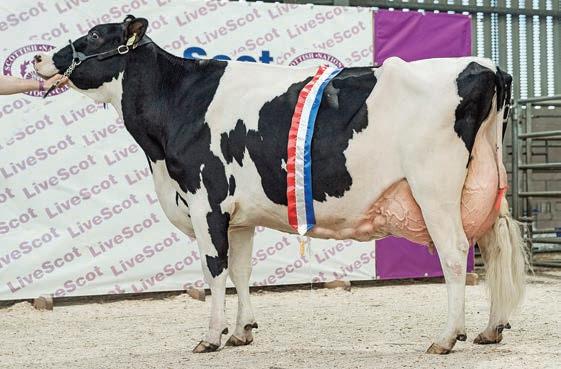
Corneliske 442. It marked a third consecutive win for the six-year-old, home-bred Wintersell Demon daughter out of Dalserf Corneliske 382. Reserve was a July 2018-born senior in-milk cow, Nethervalley Kingpin Sara, from Robbie Scott and Kate McInnes, Shacklehill, Mossblown.
Winning Friday’s pedigree cattle section was Delfur Nifty, a one-yearold Simmental heifer by Ballymoney Larry, from Delfur Farms, Aberlour. Reserve went to Richard McCornick,
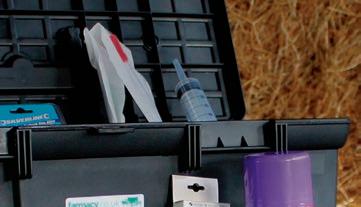

Lochfoot, Dumfries, with Ricnick Tyson, a July 2022-born Charolais bull by Castellmawr Rocketman. Champion in the accredited pedigree sheep section was a Beltex ewe lamb from J. and D. Hodge, Auchinleck. Reserve was a Texel tup lamb from Kenny O’Connor, Lanark. Non-accredited champion went to a Mule lamb from John Guild, New Cumnock, and reserve was a Blackface ewe lamb from J. and A. Boswell, Burnhead.





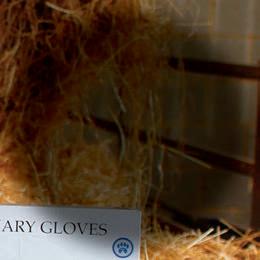





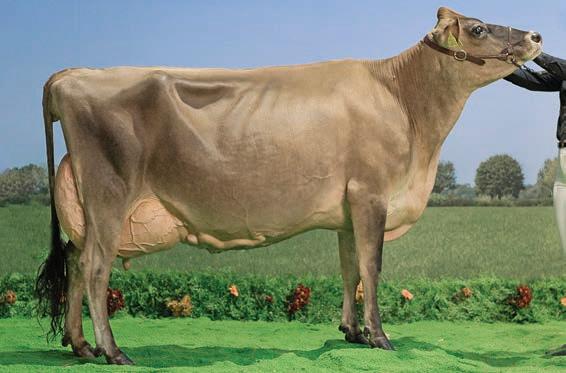
EVENING Sidekick Jennifer, from the Wilson family, Carlisle, was crowned SuperCow at this year’s AgriScot. It is said to be the first cow to claim the supreme championship at all three of the UK’s major dairy shows in one year, with the third calver also taking home top honours at UK Dairy Expo in March and UK Dairy Day in September.
Led by Charlotte Wilson, this November 2018-born home-bred cow last calved in May and was shown giving 48 litres daily.
Part of the Wilson family’s 450-cow Evening Holstein herd, the cow is classified EX93 and gave 12,500 litres in its last lactation. It also marked a third consecutive championship win at AgriScot for the Wilson family.
Having judged all over the world, judge Mark Nutsford of Riverdane Holsteins, Cheshire, said his champion was the best cow he had ever judged, ‘a once-in-a-generation cow’ and ‘cut like a diamond’. Reserve SuperCow went to the
Crowds gathered at this year’s AgriScot as the Holstein champion, Evening Sidekick Jennifer, from Evening Holsteins, Carlisle, took home its third major title of the year. Katie Fallon reports.
Jersey champion, Rivermead Minx Candy, a four-year-old cow from the Davis family, Tiverton, Devon.
Brought out by Emily Davis, the home-bred, third calver was shown eight weeks fresh and giving 36 litres daily.
Classified VG89, the cow was overall champion at the Jersey National Show this year, as well as supreme inter-breed champion at the Dairy Show and Jersey champion at UK Dairy Expo earlier this year.
Taking reserve in the Holstein

cow section was Wilt Bailay, a five-year-old cow from Colin Laird, of Blythbridge Holsteins, Peeblesshire.
Imported by the Laird family from France last year, the third calver was reserve supreme champion at last year’s French Spring Show and was reserve Holstein at last year’s Royal Highland Show and UK Dairy Day. Classified EX93 and last calved in March, the cow gave 12,200 litres in its last lactation.
Reserve Jersey cow champion was the November 2020-born Clanel Video Daisybelle, from Neil Heuchan, Carnforth.
The second calver was shown giving 33 litres daily and was champion Jersey at this year’s Royal Lancashire Show, as well as placing third in its class at UK Dairy Expo.
Taking top honours in the Red and White cow section was Logan Rubels Seisme, from father and son duo, Brian and Michael Yates, of Logan Holsteins, Castle Douglas.
The three-year-old cow was

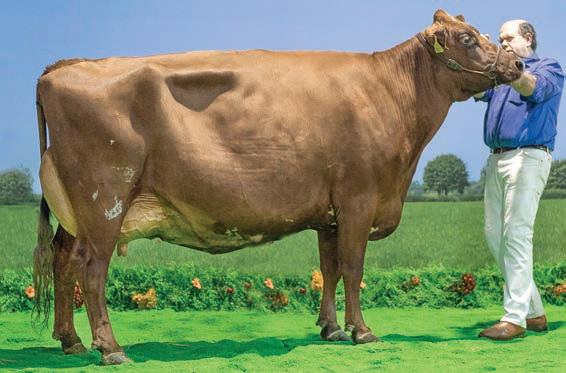
reserve SuperHeifer at last year’s AgriScot and placed second in its class at UK Dairy Day in September.
The reserve Red and White cow ticket went to Calderglen Margot 3, a January 2020-born VG88 cow from Robin and Robin Barr, Campbeltown.
In the Ayrshire cow section, the championship was claimed by Harperfield Queen of the South 60, a five-year-old cow from the Lindsay family, Lanark. By Arran View Allbran, the EX90 cow was shown giving 38 litres daily.
Reserve Ayrshire cow was a sixth calver, High Mark Obligation Melanie 2, from David Watson, Stranraer. It was only the second time out for the EX94 cow, which previously won champion Ayrshire at the Dairy Show in 2018.
Champion any other breed cow was Kedar Calvin Sanchia Maria, a December 2012-born Brown Swiss cow, from Jonny Lochhead, Mouswald.
Brought out by Jessica Miller, the EX97 seventh calver was also named best udder in its class and claimed champion Brown Swiss at UK Dairy Day, as well as dairy supreme champion at this year’s Northumberland and Dumfries shows.
Reserve was another from the same home, Kedar Super Nova
SuperCow (Judge,
SuperHeifer (M. Nutsford) Sup., Davis family, Rivermead Victorious Sangria (Jersey); res., Newmeadon Holsteins, Wolfa Chief Sue (Holstein).
Holstein (M. Nutsford) Sup., Evening Holsteins, Evening Sidekick Jennifer; res., Blyth Farm, Wilt Bailay; sup. heifer, Newmeadow Holsteins, Wolfa Chief Sue; res. heifer, Evening Holsteins, Evening Goldwyn Adeen. Jersey (M. Nutsford) Sup., Davis family, Rivermead Minx Candy; res., N. Heuchan, Clanel Video Daisybelle; sup. heifer, Davis family, Rivermead Victorious Sangria; res. heifer, Hunter family, Clydevalley SSL Fielddare.
Harmony, a sixth calver which was shown giving 30 litres daily.
In the SuperHeifer championship, it was another win for the Davis family and their 230-cow Rivermead Jersey herd, who took the overall rosette with their Jersey heifer champion, Rivermead Victorious Sangria.
Mr Nutsford described his heifer champion as ‘so balanced and so stylish, with a lot of symmetry’.
The home-bred heifer in-milk was shown six weeks fresh, giving 33 litres daily and was previously Jersey calf champion at the All Breeds All Britain Calf Show.
Reserve SuperHeifer was the Holstein heifer champion, Wolfa Chief Sue, from the Innes family of Newmeadow Holsteins, Forres.
The VG88 two-year-old heifer in-milk is due to calve in January and was shown giving 38 litres. Purchased privately from the Cumbrian-based Wolfa herd in March, the heifer was also crowned champion intermediate two-year old in-milk at UK Dairy Day, as well as Holstein junior champion and supreme dairy junior champion at the Royal Highland Show.
It was the Innes family’s first time back at AgriScot after 28 years, when they also took home the reserve SuperHefier rosette.
Red and White (M. Nutsford) Sup., B.G. Yates and Son, Logan Rubels Seisme; res., J. and M. Barr, Calderglen Margot 3; sup. heifer, B.G. Yates and Son, Logan Avatar Rae Red; res. heifer., M. Bryson and Son, Whiteflat Attraction Geraldine. Ayrshire (M. Nutsford) Sup., D.M. Lindsay, Harperfield Queen of the South 60; res., J.S. Watson, High Mark Obligation Melanie 2; sup. heifer, J. and M. Barr, Calderglen Nicolette; res. heifer, D.M. Lindsay, Harperfield Sandy Rose 8. Any other breed (M. Nutsford) Sup., T. Lochhead and Sons, Kedar Calvin Sanchia Maria (Brown Swiss); res., T. Lochhead and Sons, Kedar Super Nova Harmony (Brown Swiss); Sup. heifer, T. Lochhead and Sons, Kedar Rhappily Ever After (Brown Swiss); res. heifer, R.J.B. Lawson, Lismulligan Priscilla 61 (British Friesian).
THE inaugural Scottish Agriculture Awards were presented at this year’s AgriScot event.
Winning the Dairy Farm of the Year Award was Wijnand Pon and the team at Coopon Carse Farm, Dumfries and Galloway, who milk 430 Holsteins through seven A5 Lely robots.
The business was converted from a beef and sheep farm in 1984 after Mr Pon purchased the farm the year before and introduced 160 commercial cows and imported 70 pedigree calves from the Netherlands.
Winning Scotch Beef Farm of the Year was Jill and Andrew Hodge of Rulesmains Farm, Duns, Scottish Borders. The family run a herd of 110 pedigree Aberdeen-Angus cattle, alongside 30 commercial Aberdeen-Angus and a handful of pedigree Hereford cattle.
Sheep Farm of the Year went to the Baker family at Windshiel Farm, Berwickshire, who run a flock of 750 Lleyn and Lleyn cross sheep and a small flock of pedigree Dorset sheep, alongside a herd of Aberdeen-Angus cattle.
The farm was converted to an organic system in 2001 and is now
a completely outdoor system, utilising rotational and deferred grazing with a focus on soil and grass quality.
Stuart Mitchell and family of Whitriggs Farm, Hawick, went home with the Sustainable Farm of the Year Award. The family run a 442-hectare (1,092-acre) mixed organic farm on a low-input system, home to a 140-cow suckler herd, 300 red deer and 50ha (124 acres) of arable.
Diversified Farm of the Year was awarded to the Bone family of Glenkiln Farm, Arran, who run a mixed beef, sheep and arable farm. The family have diversified into horse liveries, residential units and newbuild housing, with an hydroelectric scheme on-farm supplying power to the local village.
Arable Farm of the Year went to Savock Farms, Aberdeenshire, who run a diversified, rural farming business growing a variety of crops for food and energy production, as well as an on-farm anaerobic digestion plant which has allowed the farm to improve soil health and reduce its use of inorganic fertilisers.
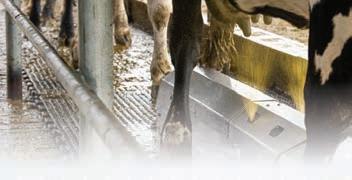
































The Radmore family faces serious challenges in trying to maintain the integrity of their hefted sheep and cattle on Dartmoor, while working within the constraints of a range of environmental prescriptions. Wendy Short reports.



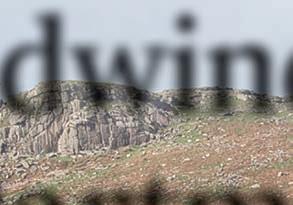

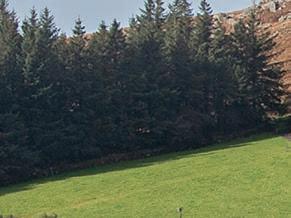





Sheep and cattle hefts on the Dartmoor commons will break down if the individual heft falls below 0.05-0.08 livestock units per hectare (0.02-0.03 units/acre) and they will not deliver intended environmental benefits, says Helen Radmore, whose family manages several hundred sheep and a 100-cow suckler herd at Glen Iris, near Tavistock, Devon.

She says the combination of stocking rate reductions and the in-wintering policy which applies on the commons has delivered few benefits for farming, the environment and tourism.
“Historically, there were six separate hefted flocks on one of the commons, but that figure has halved, with ewe numbers greatly reduced to comply with the

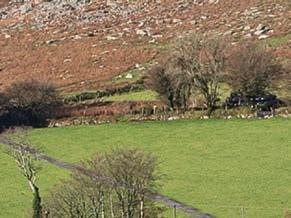

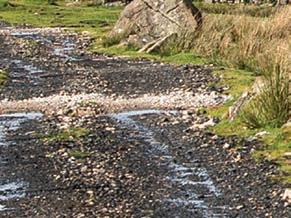

environmental prescriptions,” says Ms Radmore.
“As numbers have fallen, the sheep have spread out across the grazing area and the heft boundaries have become increasingly blurred.
“This results in a lot of additional time having to be spent on shepherding the flock, to try to maintain the traditional boundaries.

“In addition, we are asked to remove a flock of 100 North Country Cheviots for the winter.
“As a result, they have to be driven back to their heft frequently over summer.
“This takes up more time than we spend on looking after the rest of the flock put together during that period.

“The ewes’ natural tick immunity has declined as a direct




consequence of spending more time away from the heft, in my opinion, and cases of louping ill have risen.
“If the hefted flocks are moved to the in-bye land, they will not graze like the average sheep and instead they will look for their food in the hedgerows.
“There is a risk that the natural instincts for survival on the commons that has been passed down the sheep generations will be lost.”
Environmental policy changes in recent years have affected the plant life on Dartmoor, as well as the livestock, she adds.






a managed system of number reduction,” she says.
“The lack of grazing by livestock has allowed dominant plants such as molinia, to move in on the wetter ground and western gorse to flourish on the drier land.

“Heather regeneration has been made a priority, for example. Stocking rates have been reduced as part of this policy, but it was not


“As the dominant species take over, the weaker species die off, creating a thatch of dead, rank material that has spoiled the visual appearance of the moor for the many thousands of visitors each year. It will also have had a knockon effect on insect populations, including dung beetle.”

The Glen Iris heft (or ‘lear,’ as it is termed by Dartmoor farmers), dates back to 1905, says Ms Radmore, who has some ideas about how the rules might be changed for the benefit of Dartmoor.
“I am willing to admit that



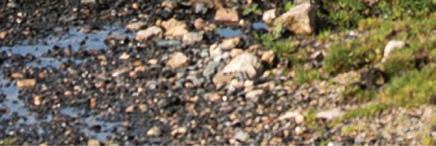












overgrazing was a problem at one point, but the pendulum has swung too far the other way and I do not believe that it has had an overall positive effect.
“The main challenge has been the ‘single issue’ approach, focusing on one outcome only.

“When making changes to a sensitive ecological area such as Dartmoor, it is vitally important that policy decision-makers address all aspects, including farming and ecological issues, such as wildlife and carbon storage, as well as the tourism that is vital to the local economy and community. The bigger picture is not being fully considered.”



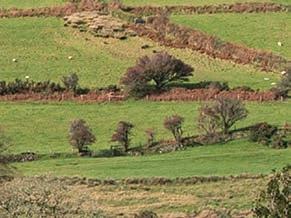



on the Dartmoor commons. It includes a batch of 350 fully hefted ewes which are only removed for sheep scab treatment at the home farm.

A flock of 700 Scottish Blackface ewes belonging to the Radmores roams over large hefts
To comply with the rules for all graziers on Dartmoor common land, they must stay on the farm for a fortnight during treatment. The older Scottish Blackface ewes are crossed with Aberfield rams, to produce Aberfield Mules. A proportion are retained, to be lambed inside from mid-February at the holding. Meanwhile, the Aberfield Mules go to a continental tup to produce finished lambs, with the April-lambed hill ewe progeny mainly sold into the store market.




The farm at Glen Iris, nestled at the foot of Sheeps Tor, is facing serious challenges due to changes in environmental regulations on Dartmoor.

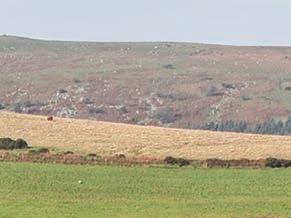


MOST of the acreage is classified as Severely Disadvantaged Area, while the grass lets belong to seven different landlords and are taken on various arrangements.

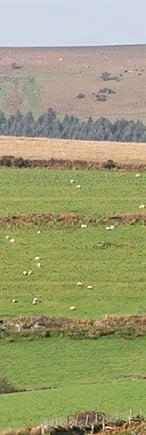
The Tenant Farmers’ Association is credited for the helpful advice provided. The rental agreements include Agricultural Holdings Act, Farm Business Tenancy and annual agreements. By far the largest block comprises 1,214 hectares (3,000 acres) of moorland.

Some stores and finished lambs of up to 40kg are sent to the local auction mart and others




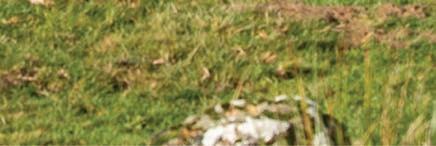


Continues over the page.



■ Most of the rented land falls within a six-mile radius of the main holding
■ The Glen Iris sheep, cattle and a small herd of Dartmoor heritage ponies roam a total of 5,000 hectares (12,355 acres), shared with other graziers
■ Hay is the preferred forage, but baled silage is also made due to a lack of covered storage
■ Forage beet or kale is grown on the in-bye land to provide supplementary food for the growing cattle
are marketed deadweight, while a percentage is sold with their continental-sired lambs in April, to help with cashflow.
The suckler herd comprises 100 Stabiliser and Aberdeen-Angus cattle, says Ms Radmore.
She farms with her husband Roy and their son Mark, with help from their daughters Georgie Radmore and Jenny Vanstone.
Countryside Stewardship dictates that all cattle are removed from Dartmoor over winter, although there is a derogation option which will allow for later housing under the Farming Futures trial, to trample molinia in the Forest of Dartmoor.
“Stabiliser bloodlines were introduced two decades ago for the maternal lines and the Aberdeen-Angus cross-bred calves attract a price premium,” she says.
“The cows are split between two separate commons and managed on different systems.
“One group produces mainly store cattle that are reared at home, although some are finished and sold deadweight.
“We also send some finished animals to the online meat retailer,


Farm Wilder, and one batch of calves goes to a regular private buyer on the coast.”
There are no boundaries on Dartmoor and the breakdown of hefts has resulted in the cattle groups straying on to other areas, she says.
The key to their management is to maintain the line of hefted lead cows, as their behaviour is mirrored by any new cattle if they are overwintered together.
She says: “The herds used to stay in their hefts, but since the environmental policy changes, they have often had to be guided back to their own areas. GPS collars are used on
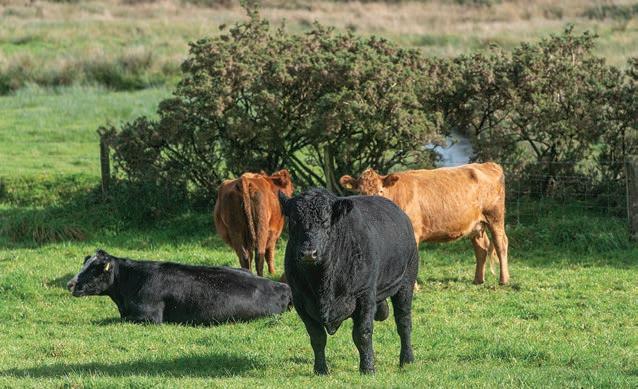
some of the lead cows and one sheep in each group of 35. The data has provided a fascinating insight into their behaviour, combined with our own observations.
“On one occasion, our sheep strayed a long distance after Dartmoor ‘clear’ days, encroaching on another flock’s area.
“As soon as that flock returned to the moor, our sheep returned to their heft; the hefts act as invisible fences.
“The oldest cattle herd will wait at the field gate in spring to leave for the common.
“They will walk four miles to their patch as soon as they are
turned out, and we only need to follow behind.
“The cows quickly adjusted to the winter housing programme and they will return to the farm on the same day every year. While this is useful, it does not work well if the housing dates are changed for any reason due to a policy decision.
“It may take two years or more to train them to change the housing date; it cannot be turned on and off like a tap. The same applies to many of our farming practices. They have been established over many decades and some of the changes may end up bringing unwanted results for all parties,” says Ms Radmore.
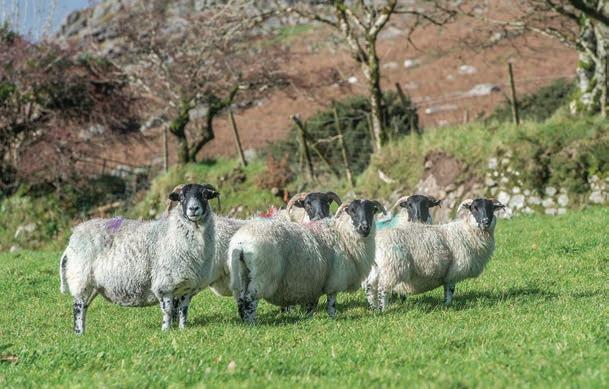
A
recent Farmer Network event in Cumbria explained the importance of herbal leys and how to maintain them. Sarah Alderton reports.
INCREASINGLY , farmers are sharing their positive results of establishing and grazing livestock on herbal leys, with many reporting increased production and reduced need for inputs.
Herbal leys are a type of pasture comprising a mixture of grasses, herbs and legumes. The benefits of herbal leys are wide-ranging, leading to improved soil health, reduced fertiliser costs, improved forage quality and increased herd health. However, success can vary with soil type and management, explained agronomist David Chapman.
“Herbal leys have an extensive root system and for their roots to get through the soil and bring back the nutrients, the soil needs to be open. This is also important in times of drought,” he said.
Having the correct nutrient balance is also essential for the plants to reach their maximum potential, with sodium levels often a limiting factor.
Mr Chapman said: “Look at sodium levels as they encourage plants to produce tillers. It also makes the ley more palatable and
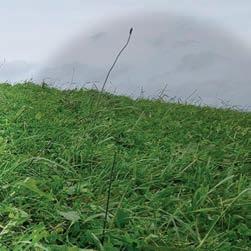



digestible. The target levels on a soil analysis should be 90 parts per million. If you find you have a deficiency, then that needs rectifying.
“Some of the biggest suspects that are also often deficient, but are so
BEEF and sheep farmers Ian Bell and Rebecca Dickens of Hallbankgate Farm established their first herbal ley three years ago. This was after they saw the benefits having a diverse sward brought to livestock after taking on the tenancy of a 2,630-hectare (6,500-acre) organic Royal Society for the Protection of Birds (RSPB) hill farm.
Mr Bell said: “Some of the organic RSPB land had over 150 species of plants, and we noticed cattle doing better on that grassland than some of our ryegrass on our own farm, which was receiving artificial fertiliser each year.
“At the time, input costs were going through the roof, so we decided to have a go at establishing our first herbal ley on 25 acres.”
The field on which they first trialled the crop was a coarse sandy loam and was slot-seeded with a GS4 mixture containing various grasses, clovers and herbs including chicory, ribwort plantain, yarrow and sheep parsley.
At the same time, they also decided to go ‘cold turkey’ by not applying fertiliser on the land. They did apply liquid seaweed for the first

important for optimum efficiency of any ley, are sulphur and the calcium to magnesium ratio. The cation exchange capacity is also a figure you should pay close attention to and is one of the most important figures
two years as they transitioned away from fertiliser, but this is not something they will continue to do going forward.
Hallbankgate Farm is home to the 30-head Hallbankgate herd of pedigree Charolais cows, 130 mainly Luing and Highland cross Beef Shorthorn sucklers and 1,000 ewes, comprising a mix of upland breeds – Blackies, Cheviots and Herdwicks – plus Texels, Suffolks and Mules on the lowland.
Ground is set stocked, with fields split into smaller units using double fenced hedges, enabling the fields to be grazed hard in short periods before being moved on.
Herbal leys are grazed with the lowland flock, growing cattle, and some hill lambs are also fattened off them. They also take a cut of silage off the herbal leys each year.
They openly admit they do little to maintain the herbal leys apart from shutting it up to allow it to recover after intense grazing and cutting it.
Mr Bell said the cattle and sheep were performing noticeably better

in a soil analysis as it tells you how much nutrients your soil can hold.
“Make sure when you are taking a soil analysis, it tells you more than just the nitrogen, phosphorus and potassium.”

off the herbal leys, with lambs finishing quicker.
“We can get lambs away a few weeks earlier and off 100 per cent grass. This year, we had some February-born lambs gone by the end of the May at mid-40kg,” he said.
They also reported seeing less
lungworm in the cattle grazing the herbal leys and have now removed bought-in feed costs for their store cattle, which are sold straight off grass at 16 months old.
Three years after establishing their first herbal ley, over a third of the 130ha (320 acres) of grazing land has been established with them, with the plan for all of the land to move over in the next couple of years.


Familiar names took the top honours in the cattle and pig judging at this year’s Royal Welsh Winter Fair, but there were first time wins in the sheep lines. Katie Jones reports.
rJack In The Box earns reserve
FRESH from its reserve championship win at LiveScot just days earlier, the Limousin cross heifer, Phoenix, went one better and took the overall prime cattle championship at the Royal Welsh Winter Fair for owners Stewart and Lynsey Bett, Stirlingshire.
The March 2022-born heifer, which was purchased from breeder Balfour Baillie, Orkney, at Thainstone Spectaluar last year, is by Redriver Powerful and out of a British Blue cross Limousin cow.
Phoenix is no stranger to the showring at the Welsh Winter Fair, having taken the reserve baby beef title there last year.
Other notable wins last year included commercial calf champion at LiveScot and reserve baby beef at Agri Expo. It has also placed second in its class this year
at Agri Expo and the Royal Welsh summer show.
In the post-show sale, the winning heifer was knocked down to a maiden bid of £7,000 from Mark Webster, Ryhl.
The reserve overall title went to the steer champion, Jack In The Box, from another Scottish exhibitor – Andrew Ireland, Ayrshire.
This May 2022-born steer is by the British Blue sire, Hallfield Nixon, and out of a Limousin cross dam. It was bred by Michael Allinson, Barnard Castle, and bought by

Mr Ireland, who is a farrier by trade, out of Barnard Castle market earlier this year.
The steer was no stranger to the Royal Welsh Showground, having been shown at this year’s summer show, where it picked up the reserve steer title in the commercial section. It was also second in its class at the Royal Highland Show and won its class at LiveScot.
In the sale, the steer made £5,200 and was knocked down
to G.R. Evans Butchers, Corwen. Runner-up in the heifer judging was Cothi TikTok, a pedigree Limousin from Richard Wright, Somerset. This June 2022-born heifer was bred by J.M. and A.M. Lewis and is by Mereside Oscar and out of Powerhouse Hella. It weighed 689kg and went on to sell for £11.50/kg.
Reserve steer was the Limousin cross, Johnny Cash, from Tony Ponsonby, Anglesey. This one was bred by the Robertson family, Newton of Logierait.
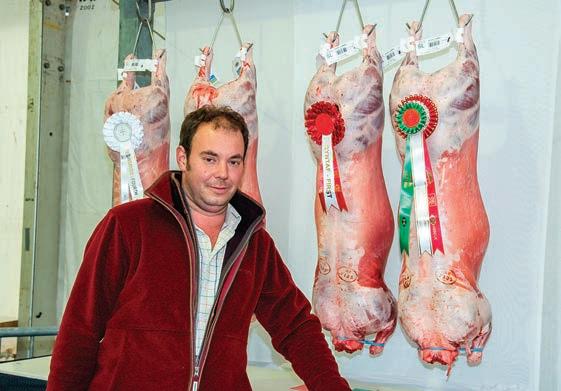
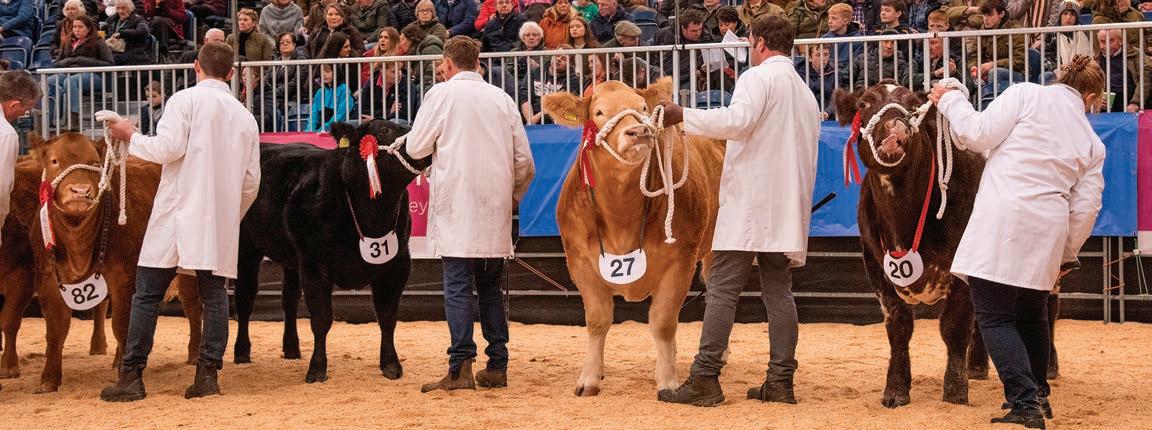
Weighing 646kg, it went on to sell for £4.30/kg.
In the baby beef judging, the championship title went to Berwyn and Elin Hughes, Ceredigion, with their home-bred heifer, One Off.
This nine-month-old heifer is by Limousin stock bull, Whitemoss Noble and out of a British Blue cross Limousin dam.
The Hughes family had previously won prime heifer and steer titles at the Royal Welsh Winter Fair, but this was their first overall title in the baby beef section. The heifer went on to make £4,500.
Reserve in the baby beef judging was Super Ted, a home-bred Aprilborn British Blue cross steer from E.H. Pennie and Son, Powys. This one later realised £2,400.
There was a new name on the trophy in the sheep judging, with the overall championship award going to a pair of home-bred pedigree Blue Texel lambs from Chris Davies, Powys.
The prize winners, which had earlier topped the continental section, are out of home-bred ewes from Mr Davies’ 35-ewe Beaconsview flock.
Reserve in the sheep judging went to Tirion Griffiths, Denbigh-
shire, with a pair of pedigree Beltex lambs. These weighed in at 91kg and 97kg and had earlier topped the butcher’s weight section.
The pair had previously been shown at the Angelsey Winter Fair, where they had won the overall sheep pairs title, but this marked Mr Griffiths’ best result to date at the Welsh Winter Fair.
The lambs are both by Cromwell Felix, which was bought out of Carlisle five years ago and are out of ewes from Mr Griffiths’ 40-strong Beltex flock, which are run alongside 1,500 commercial ewes.
It was clean sweep for the Beltex in the carcase hall, with the breed winning every class and topping the top awards.
The winning single was a lamb which weighed 38.6kg live and 21.7kg deadweight from Rebecca Armstrong, Herefordshire. It had graded E3L. In the post-show sale, it made £650.
Reserve and taking the ‘best in Wales’ title was a E3L carcase from Bryn Davies, Carmarthenshire, which weighed 38.2kg live and 21.1kg dead. This one made £600 in the post-show sale.
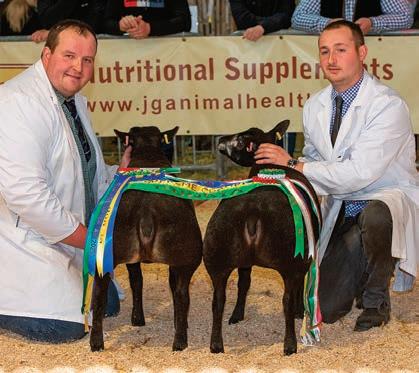
Supreme sheep champions, a pair of Blue Texels, from Chris Davies, Powys.
Taking the top spot in the pairs competition was Michael Carter, Gloucestershire, with a pair of Beltex cross Dutch Texels which weighed 23.6 and 23.1kg deadweight and both graded at E3L.
Reserve was Bryn Davies with a E3H 40kg to 22.3kg and a E3L 36.8kg to 20.6kg.
The prizes in the pig shed were dominated by H.D. and E.M. Roberts, Gwynedd, whose four Welsh pigs took champion and
Overall (Judge, G. Scott, Linlithgow, and J. Wareham, Sussex) Supreme and heifer, S. and L. Bett, Phoenix (Limousin cross); reserve and steer, A. Ireland, Jack In The Box (British Blue cross); res. heifer, R. Wright, Cothi TikTok (Limousin); res. steer, T. Ponsonby (Limousin cross).
Baby beef (J. Davies, Warwickshire) Sup., B. and E. Hughes, One Off (Limousin cross); res., E.H. Pennie, Super Ted (British Blue cross).
Sheep
Overall (R. Adams, Glamorgan) Sup., C. Davies (Blue Texel); res., T. Griffiths (Beltex). Pure hill, upland and Welsh Mountain (R. Adams) Sup., C., A. and R. Joseph (Badger Face Welsh Mountain); res., I.T Davies and Son (Brecknock Hill Cheviot).
Native (R. Adams) Sup., D. Jerman (Dorset Horn); res., C., A. and R. Joseph (Badger Face Welsh Mountain).
Cross-bred (G. Roberts, Gwynedd) Sup. and res., D. Jerman. Butcher’s weight (J. Whiteford, Carlisle)

reserve in the singles and pairs judging.
The family, who have recently reduced numbers to six Welsh sows, have won numerous championship prizes with their homebred Welsh pigs at the Royal Welsh Winter Fair.
The champion pair went on to sell for £960 a pig to Tom Hughes Butchers, Anglesey, while the runners-up sold at £400/pig to show judge Paul Tucker, Swansea.
Sup., T. Griffiths (Beltex); res., R. Garth and S. Priestley (Beltex).
Native hill and upland (H. Beavan, Abergavenny) Sup., I.T. Davies and Son (Brecknock Hill Cheviot); res., N. Dillon (Brecknock Hill Cheviot).
Lowland (G. Roberts) Sup., D. Jerman (Dorset Horn); res., Messrs Wakeham-Dawson and Harmer (Coloured Down).
Welsh Mountain (S. Williams, Glamorgan) Sup., C., A. and R. Joseph (Badger Face Welsh Mountain); res., G. Samuel (Tregaron Welsh Mountain).
Continental (J. Whiteford) Sup., C. Davies (Blue Texel); res., E.F. Gittoes and Son (Beltex).
Lamb carcase single, Sup., R. Armstrong (Beltex); res., B. Davies (Beltex). Lamb carcase pairs (N. James, Monmouthshire) Sup., M. Carter (Beltex cross Dutch Texel); res., B. Davies (Beltex).
Pigs
Pairs (P. Tucker, Swansea) Sup. and res., H.D. and E.M. Roberts (Welsh).
Single (P. Tucker) Sup. and res., H.D. and E.M. Roberts (Welsh).

Reserve sheep champions, a pair of pedigree Beltex lambs, from Tirion Griffiths, Denbighshire.
rClean outrun and lift secure championship
AFTER taking their first nursery win, Ben White and Jan went on to take the championship title at Slacksdale on the last Saturday in November.
With a fetch of about 250 yards, the course could be gathered equally well from either side.
In packets of three in the trial, the mixed breeds of lambs ran well provided they were lifted with care.
After a frosty start it was a cold, but clear day for the 39 trial entries judged by Oliver Walters.
Colin Pickford and Rainow Nap set the standard in the nursery trial gaining 81 points with run 23. At 27, Ben and Jan pulled ahead. Both were smooth runs, but Jan had the edge over Nap. Between a clean start and finish she lost eight points to take the title by one point.
In the novice trial, Laura Elkin and Kemi Pip took the lead at 28 with 71 points, however, two runs later Wayne Allen and Sal gained a two-point advantage to win with 73 points.
In the trial, the drive was to the right, but for the two championships it
was left-handed with the last obstacle a pull-through.
Run in packets of five, the sheep were more settled over the course and, after the chute, any two had to be shed.
Colin and Nap ran second. Losing points mainly from their fetch and drive they scored 81 points. Last to run, Ben sent Jan to gather right-handed.
She had a clean outrun and clean lift. As the sheep came down the fetch, where there was no obstacle, they pulled to the right resulting in six points lost for line deviations.
Jan had a very good drive losing just
SLACKSDALE, Peak Forest, Derbyshire, (Judge, O. Walters Oughtibridge) Nursery 1 (39 ran), 1, B. White (Bradfield) Jan, 82 of 90; 2, C. Pickford (Rainow) Rainow Nap, 81; 2, S. Allen (Butterton) Ruby, 80; 4, K. Dodd (Malpas) Tig, 79; 5, S. Varney (Kilburn) Gemma, 70; 6, E. Jacques (Huncoat) Cap, 68. Novice 1, W. Allen (Butterton) Sal, 73 of 90; 2, L. Elkin (Hilderstone) Kemi Pip, 71; 3, S. Allen, Jet, 70. Nursery Championship (3 ran) 1, B. White, Jan, 82 of 100; 2, C. Pickford, Rainow Nap, 81; 3, J. Elkin (Hilderstone) Wern Joe, Dq. Novice Championship (3 ran) 1, B. Williams (Ysceifiog) Mot, 87 of 100; 2, L. Elkin, Kemi Pip, 71; 3, A. Sayer (Hilderstone) Waitby Lyn, 70. YORKSHIRE, Moor Lodge Farm, Oakworth, Keighley, West Yorkshire, (E. Hill, Holmrook) Nursery (41 ran) 1, P. Mellin (Oakworth) Hendy Jack, 75 of 90 OLF; 2, R. Atkins (Oakworth) Fred, 75; 3, T. Birkett (Carnforth) Ben, 75; 4, A. Temple (Holmrook) Jess, 74 OLF; 5, A. Temple, Pentre Roxy, 74; 6, Thomas Longton (Quernmore) Craig, 74. Young Handler 1, C. Russell (Oakworth) Nell, 62. HOLME, Gabrielle Mane, Halifax Road, Briercliffe, Burnley, Lancashire, (Michael Longton, Quernmore)
four points throughout. She put her packet neatly through the chute, dropping just one point before the shed.
Although the lambs would split they were very quick to re-group and Jan missed one opportunity. When she did take it, she briefly turned onto the three before taking the two and consequently she lost a total of seven points from her shed.
Nevertheless, with a score of 82 Ben and Jan took the championship title and for the second time that day Colin and Nap were the runners up.
Although Wayne and Sal had won
Nursery (23 ran) 1, J. Ashworth (Rossendale) Dot, 71 of 90 OLF; 2, R. Hutchinson (Littledale) Chrissy, 71; 3, T. Huddleston (Caton) Lidl, 69; 4, E. Jacques (Huncoat) Cap, 68; 5, A. Kyme (Lumb) Blue, 56; 6, K. Cropper (Shap) Roy, 55. RYEDALE, Fridlington Farms, Sheriff Hutton, York, (J. Turnbull, Kildale) Nursery (24 ran) 1, A. Grant (Ripon) Kate, 71 of 90; 2, C. Cutler (Easby) Burt, 66; 3, R. Cole (Selby) Pip, 65; 4, J. Atkinson (Escrick) Clemy, 63; 5, J. Atkinson, Sandy, 62 OLF; 6, T. Bennett (Malton) Strike, 62. NORTHUMBERLAND, League, High Shield, Bardon Mill, (A. Ridley, Blanchland) Nursery (21 ran) 1, B. Jordan (Whitfield) Zoomer, 90 of 100; 2, B. Jordan, Marshall, 89; 3, B. Jordan, Chase, 85; 4, R. Mitcheson (Belsay) Mitch, 84; 5, M. Davidson (Alnwick) Groesfaen Peg, 82 OLF; 6, I. Iley (Longframlington) Dunelle Jake, 82. Novice F. Samson (Bellingham) Mel, 76 of 100. NORTH WESTMORLAND, Hutton in the Forest, Penrith, (C. Cassie, Armathwaite, 44 ran) Nursery 1, D. Scrimgeour (Wigton) Ben, 84 of 90; 2, M. Elliott (Alston) Rose, 80; 3, J. Drinkwater (Bowes) Cassie, 78; 4, D. Purdham (Holmrook) Tilly, 77; 5, J. Relph (Greystoke) Ben, 74; 6, D. Purdham, Matt, 73. Novice 1, S. Roper (Ennerdale) Blue, 72 of 90; 2, H. Hutchinson (Kirkby Stephen) Mollie, 70;
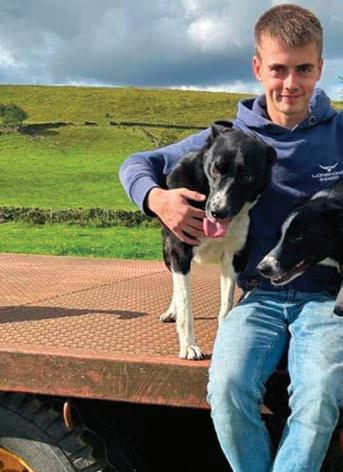
White won the nursery trial and the championship at

the novice trial, that was the only time they had competed at Slacksdale this season and the rules state that competitors must run in at least two of the three trials to be eligible for a championship. Therefore, Laura and Pip went forward.
First to run were Anthony Sayer and Waitby Lyn who ran out of time at the shed to score 70 points. Brynley
3, N. McNally (Bewcastle) Astra Robin, 69; 4, E. Harrison (Shap) Sam, 67. SHROPSHIRE AND HEREFORD, Obley, (B. Howson, Brecon) Nursery 1, L. Owen (Obley) Bonny, 80 of 90; 2, P. Thomas (Longnor) Skye, 77; 3, G. Morgan (Ludlow) Roy, 46. Best Drive P. Thomas, Skye. Novice 1, P. Thomas, Newbold Zac, 91 of 100; 2, L. Owen, Fly, 82; 3, G. Morgan, Jill, 76; 4, P. Thomas, Lawley Molly, 72. Best OLF joint 1, L. Owen, Fly and P. Thomas, Zac. Open Novice 1, R. Morris (Clunbury) Tess. Nursery Aggregate 1, P. Thomas, Skye, 28; 2, L. Owen, Bonny, 21; 3, G. Morgan, Roy, 18; 4, M. Hooper (Suckley) Doug, 10; 5, P. Thomas, Lawley Pebble, 4. Novice Aggregate 1, P. Thomas, Newbold Zac, 32; 2, P. Thomas, Lawley Molly, 26; 3, L. Owen, Fly, 16; 4, C. Bonar (Bromyard) Wilstone Meg, 13. Beginners Aggregate 1, J. Cadwallader (Craven Arms) Ellie, 12. Open Novice Aggregate R. Morris, Tess, 24. WEST COUNTRY, Postbridge, Nursery, (B. Watson, North Tawton) Driving 1, J. Watson (Postbridge) Floss, 83 of 90; 2, J. Watson, Scott, 79; 3, D. Cole ((Ivybridge) Jasper, 77; 4, J. Nicholls (Buckland Brewer) Lucy, 75; 5, T. Rofe (Okehampton) Rosie, 73; 6, F. Richards (Callington) Becca, 71. Maltese cross 1, J. Watson, Mac, 58 of 70; 2, F. Richards, London, 52; 3, C. Worgan (Chulmleigh) Mouse, 50; 4, Ray Edwards (Chulmleigh) Pip, 47. New Handler 1 A. Beard (Moretonhampstead) Ivy, 45 of 70; 2, C. Martin (Camelford) Roxy, 37; 3, T. Kinsman (Postbridge) Glenis, 35.
Wales: Michelle Thomas
THE North Wales Nursery Trial season concluded in a challenging fashion as the competitors came together to fight for a place in the All Wales Final.
The Abersoch course was large and tricky with sheep to match. It took experience to pilot the dogs around the field and sheep sense to finish as the Suffolk Mule lambs lived up to their reputation and proved challenging to shed and pen.
While fantastic to watch, it proved a frustrating combination and many found their dreams dashed as the pressure got to the dogs and they gripped in the final elements.
Speaking after the trial, judge Doug Lambie said that the outrun proved pivotal, while appearing straightforward, it caught many dogs out, with only five managing to keep all 20 points awarded for this element.
One of those five was eventual
winner Medwyn Evans and Cap. Cap, a black and white smooth-coated dog is owned by David Williams. Mr Evans has had the dog with him to train on for David.
He entered a nursery trial and qualified for the final, where the dog stepped up nicely and turned heads.
NORTH WALES (Judge Dougi Lambie), 1. M. Ll. Evans, Cap, 17; 2. D. Davies, Foinaven Ellie, 18; 3. G. Owen, Buster; 4. H. Francis, Bob; 5. B. Behr, Bendigedig Momo; 6. H. Francis, Myllin Tim; Reserve 1. E. Williams, Hiraethlyn Roc; Reserve 2. T. E. Jones, Fly. RADNOR Elan Valley, (Will Jones), Nursery, 1. I. Rees, Pentre Jax, 12; 2. G. Powell, Bess, 21; 3. A. Price, Jess, 22; 4. K. Haker, Chloe, 27; 5. S. Lewis, Chance, 31; 6. P. Tomkins, Joe, 31. Novice; 1. P. Tomkins, Fynydd Kylo, 16; 2. J. Jones, Brondrefawr, Roy 26; 3. D. Bayliss, Rock, 40; 4. A. Price, Nell, 40. GLOUCESTER GWENT Ledbury, Nursery, 1. B. Morgan, Gelli Cal, 18; 2. J. Garland, Rhyswg Fay, 18; 3. R. Groucott, Bell, 23olf; 4. N. Matthews, Hilltop Rory, 23; 5. J. Garland, Rhyswg Taff, 26; 6. R. Lewis, Preseli Mel, 28. Novice, 1. R. Groucott, Bell, 8; 2. N. Matthews, Hilltop Rory, 9; 3. B. Rees, Flick, 17; 4. B. Morgan, Gelli Cal, 20; 5. B. Morgan, Tom, 21; 6. M. Jones, Clint, 22. CEREDIGION Tynwern, Llanrhystud, (Logan Williams and Elin Hope), Nursery, 1. E. Morgan, Kate, 16olf; 2. D. Jenkins, Troedrhiw Jim, 16; 3. D. Jenkins, Becca, 23; 4. B. Evans, Ben, 28; 5. O. Lewis, Ruby, 29; 6. M. Morgan, Scott, 35. Young Handler, 1. S. Davies,
His clean outrun, good lift and steady fetch ensured they turned around the post for the long, left-handed drive with plenty of points still available.
The drive, easily 400 yards in total, saw them lose eight points for one of the lowest scores of the day for that
Moss; 2. Y. Siencyn, Finn; 3. A. Davies, Celt; 4. A. Davies, Dau. SOUTH WALES 1. O. Lewis, Ruby, 11; 2. D. Jenkins, Becca, 12; 3. D. Jenkins, Moli, 22T; 4. E. Morgan, Kate, 23; 5. J. Davies, Rex, 35T; 6. E. Howells, Mac, 38. Young Handler, 1. A. Davies, Dau, 33T; 2. S. Davies, Moss, 34T; 3. Y. Siencyn, Finn, 40. New Man and Dog, 1. A. Thomas, Fflei, 43T. GLAMORGAN Nant Y Moel, (Heddwyn Thomas), Nursery, 1. D. Howells, Cai, 8; 2. R. Ellis, Pip, 15; 3. R. Ellis, Preseli Sue, 19; 4. D. Millichap, Chase, 26; 5. L. Howells, Jock, 27; 6. F. Farthing, Nip, 29T. Members Open, 1. R. Ellis, Pip, 5; 2. M. Edwards, Tam, 11; 3. J. Howells, Cydros Boss, 17; 4. D. Millichap, Lyn, 20; 5. D. Millichap, Chase, 21; 6. J. Wheaton, Meg, 24T. CARMARTHENSHIRE Rhos Yr Hafod, (Stan Harden), Nursery, 1. G. Lewis, Bryncoch Max, 16; 2. M. Owen, Helen, 18; 3. M. Jones, Cap, 21; 4. A. Green, Midge, 23olf; 5. A. Driscoll, Nedwin Tim, 23olf; 6. A. Driscoll, Maarfarm Riggs, 23. Puppy, 1. M. Jones, Cap, 21; 2. A. Green, Midge, 23olf; 3. A. Driscoll, Maarfarm Riggs, 23; 4. A. Sharpe, Coalfield Gryffyn, 42T. Novice, 1. K. Broad, Kinloch Bode, 25; 2. H. Thomas, Gelli Peg, 27; 3. A. Green, Don, 29T; 4. E. Jones, Liz, 30; 5. M. Owen, Carlo, 36; 6. M. Thomas, Coalfield Beci, 45.
element. A further point was taken from both the shed and pen to leave them on 17. This score looked hard to beat until Dylan Davies and his smart red mottled bitch, Foinaven Ellie, stepped to the post.
Running last of day, Dylan displayed superb nerve control as he guided Ellie around the big course.
Her out, lift and fetch saw her down ten point, three more than Medwyn, but her drive was better losing only six to Medwyn’s eight.
Striding to the shedding ring, the pressure was on Dylan, but keeping his cool and his nerves in full check he and Ellie shed beautifully for one of only two clean sheds awarded all day. In the end, Medwyn’s super outrun, lift and fetch gave him the edge needed to hold on to first place.
He and Cap are the North Wales Champions and go on to captain the North Wales team as they head south for the All Wales Final on December 9.

Williams and Mot ran next. Mot dropped four points each at the fetch, drive, and shed gaining a score of 87 and taking the championship title with a clear sixteen point lead.
December 2. FYLDE, Nursery, Hollinhead Farm, Caton, Lancaster, LA2 9NA, 9.30am start, enter on field, more than one dog first to be booked in by noon. TRAWDEN, Nursery, Hull House, Hellifield, North Yorkshire, BD23 4JP, 9.30am start, enter on field by 1pm, more than one dog first to be booked in by noon. MORTON, Nursery and Novice, Camp Farm, Denford, Kettering, NN14 4EW, 9am start, enter on field by noon.
NORTH WESTMORLAND, Hutton in the Forest, Penrith, CA11 9TH, 9am start, enter on field by 1pm, novice confined to Cumbria.
RYEDALE, Nursery, Kirkby Misperton, Pickering, the
Scotland: Sine Robertson
AT Dryden, John Foster led a hat-trick of littermates, his Cap, Eddie Foster’s, Glen and Johnnie Robinson’s Nap who, between them, scooped the top three places.
The North Country Cheviot cross Texel hoggs behaved reasonably on a flat field, but could be very unwilling to enter the pen.
John Foster’s Cap ran out well, if a fraction short, but lifted cleanly and had a good fetch.
He had the best drive of the day and although it took time and numerous breaks to pen, a quick and clean shed
barn field, 10.30am start, enter on field by 1pm, more than one dog first to be booked in by noon.
December 3. BUTTERTON MOOR, Nursery, Novice and Beginner with Championship, Butterton, Leek, Derbyshire, ST13 7TD, 9am start, enter on field by 11am.
MID-SHIRES, Nursery, Novice and Beginner, Station Farm, Broughton Astley, Leicester, LE9 6PD, 8.30am start, enter on field.
NORTHERN, Nursery, Novice and New Handler, Kirkby Stephen, Cumbria, CA17 4AP, 9.30am start, enter on field by 1pm, weather permitting.
NORTHUMBERLAND, League, Nursery, Thornton Towers, Newbrough, NE47 5AN, 11am start, enter on field. SURREY, Nursery and Novice, Shabden Park
set the seal on the winning run. Eddie’s Glen was short on his outrun, but again, lifted cleanly.
Although he had a good fetch, a missed cross drive gate and another difficult pen cost him points, but a clean shed saw him into second place.
Johnnie whistled to Nap as he slowed down on his outrun, but he lifted cleanly and had a good fetch.
There was a wiggle on the first leg of the drive.
They came low on the cross drive, so Nap had to turn them back up and through the gate.
A good pen helped to compensate
Farm, High Road, Chipstead, Surrey, CR5 3SF, 10am start, enter on field by 11am.
December 2. SOUTH WALES, Nursery Final, Rhyndaston Fawr, Haycastle, Pembroke, SA62 5PJT. What Three Words: twee.squad.retrial. 8am start, spectators welcome.
Dec 9. ALL WALES, Nursery final, Cwmdu, Crickhowell. What Three Words: propose.bombard. dispensed. 9am start, spectators welcome. Dec 15. TYNWERN, Llanrhystud, SY23 5BD. Tregaron 2024 Welsh National Fundraiser. Open National, 2 sessions, same dog can run twice. Start 8h, Enter on Field, Catering. Contact Emyr Lloyd.
Future-proof your farm business, gain insight and exchange knowledge with a Farm Futures membership

Included in your membership:
Farmers Guardian delivered directly to your door every week including full digital access. Plus, check out our brand-new features exclusive to Farm Futures members.







for that and a very good shed completed the work level on points with Glen but taking third place on outbye.
At Glenlyon, continuity lay with handler Michael Gallagher, who claimed the top two places with Hillrunner Bee and Dalriada Chief respectively.
GLENLYON (Judge, J. MacDougall, Drymen) Nursery (21 ran) 1, M. Gallagher (Alyth) Hillrunner Bee, 95; 2, M. Gallagher (Alyth) Dalriada Chief, 91; 3, H. Mitchell (Glenfarg) Bell, 87 Outbye; 4, A.D. Carnegie (Comrie) Dot, 87; 5, S. Martin (Cashlie) Cherry, 84; 6, C. Maitland Gardner (Muthill) Max, 68 Outbye; FORSIE (V. Shearer, Westfield) Nursery (20 ran) 1, G. Simpson (Forgue) Greiston Mick, 89; 2, N. Sutherland (Strathnaver) Usk Valley Rex, 87; 3, G van Dyck (Invergordon) Lhinnek Rum, 84; 4, D. Worthington (Skarfskerry) Bob, 82; 5, I. Sutherland (Strathnaver) Dan, 81 Outbye; 6, G. Simpson (Forgue) Carlos, 81; ABINGTON (C. Davdson, Sandbank) Nursery (18 ran) 1, H. Brown (Coulter) Meg, 85; 2, S Morgan (Heriot) Mainstay Pip, 80; 3, I.M. Brownlie (Dunbar) Beck, 76; 4, T. McKinlay (Parkhall) Demi, 75; 5, I. Fleming (Douglas) Jake, 73; 6, I.M. Brownlie (Dunbar) Lark, 69; Novice (10 ran) 1, R. Reid (Carnwath) Lynn, 79; 2, K. Blackwood (Sanquhar) Hank, 72; 3, B. Parker (Heriot) Kite, 72; 4, M. McColm (Leadhills) Viking Lee, 61 Outbye; 5, G. McKinlay (Coulter) Style, 61; 6, A. Walker (Hamilton) Roy, 50; EVEROR, SHETLAND (B. Anderson, Ollaberry) Nursery (11 ran) 1, R. Colclough (Westsandwick) Marje, 84; 2, J. Ramsay (Ollaberry) Sally, 80; 3, R. Colclough (Westsandwick) Reg, 58 Outbye; 4, J. Ramsay (Ollaberry) Lyn, 58; 5, A.W.P. Hughson (Girlsta) Rory; 6, J. Nicolson (Scalloway) Abby; DRYDEN (J.A. Common, Lockerbie) Nursery (15 ran) 1, J. Foster (Earlston) Cap, 80; 2, E. Foster (Brotherstone) Glen, 74 Outbye; 3, J. Robinson (Coldingham) Nap, 74; 4, W.S. Elliot (Yetholm) Roy, 70; 5, J. Allan (Mt Benger) Dot, 68 Outbye; 6, B. McSporran (Wester Middleton) Roy, 68.







Insight – Quarterly, in-depth, analytical reports into the latest agricultural trends to optimise your farming practices
Exchange – A series of digital events focused on learning from real case studies and exchanging knowledge with agricultural thought leaders
Weekly Digest email – From the desk of FG’s editor every Sunday morning, discover exclusive insights which impact the business of profitable farming
Members’ Lounge – Enjoy an exclusive space for members to network at leading events, such as LAMMA, CropTec, Future Farming Expo Scotland and Farm Business Innovation.


























Figuresshowlivestock numbersfirst,then averagepriceperhead.
Source: AHDB/LAA
1/225.0
1/200.0 11/144.0 3/61.7
1/48.0 13/281.2 12/227.5 21/205.2 8/165.0
-/- 2/390.0 -/- -/- -/- 9/134.4 8/111.0
1/600.0 -/- 9/33.3
Source: IAAS/ScotEID



Source: AHDB/LAA
Primestockthroughput,priceandpricechange(p/kg). WeekendingNovember28,2023.
THEREwasasignificantrisein cattlepricesatmartsthisweek. Steerpricesjumped22.27p/kgto 280.92p/kg,whileheiferswereup 21.82p/kgat291.04p/kg,butyoung bullssawasmallerincreaseof 1.43p/kgto255.39p/kg. Cullcowpricesalsoroseto 141.11p/kg,up3.80p/kg. Inthesheeprings,lambprices edgedupslightly,increasing0.20p/ kgto259.20p/kgandcullewessaw ariseof£1.09/headto£77.73/head. Pigpriceswereup0.93p/kgat 161.96p/kg.
As Farmers Guardian wentto pressonWednesday(November 29),UKLIFFEwheatpricesfor May24weretradingat£195/tonne, down£2.05/tontheweek.




N/S deadweight prices for




SOURCE: AHDB/LAA/IAAS
SOURCE: AHDB/LAA/IAAS
SOURCE: AHDB
SOURCE: AHDB/LAA/IAAS
SOURCE: AHDB
SOURCE:
return £1.46/£1 ref amount with buyer’s delink payment less than £30,000 post-transfer at 4% interest. Subject to Delinkage values 2025-27. BIODIVERSITY NET GAIN: English: Defra estimates £20,000£25,000/unit post-November 11. Current market £15,000-£90,000/unit excluding VAT and associated fees. NUTRIENT NEUTRALITY: Long-term sales of all types agric man excluding specialist habitat creation. Nitrates £3,000£4,000/unit (£18,000-£206,000/ha); phosphates £50,000-£65,000/unit (£2,000-£169,000/ha). CARBON: Woodland Carbon >£30/WCU >£20/ PIU. Nov 2022 WCG reverse auction average £22.61. WATER: English abstraction licences less than £3-£15/cu.m.
Source: Townsend Chartered Surveyors




1. FEED WHEAT Avonrange Central Scotland East Anglia East Devon Lancashire London North Humberside Northamptonshire Oxfordshire South Humberside Southampton Tyne & Wear West Midlands East Midlands
2. FULL SPEC.
North-West Northamptonshire South London / Essex Yorkshire
3.
Last updated Dec 3, 2023 Source: AHDB/LAA/IAAS
And Brooksbank -/- -/- -/- -/-
Fr 8/1875.0 2/1890.0 5/1712.0 3/1590.0 Sedgemoor Sa 54/1699.4 8/1605.0 2/1575.0 2/1665.0
Shrewsbury Tu 24/1912.1 4/1545.0 -/- 1/1550.0
Skipton Mo 13/2113.8 3/1670.0 -/- -/-
Wigton Th 1/1900.0 4/1532.5 -/- -/Mold Mo 9/1727.8 -/- -/- 9/776.7 Whitland -/- -/- -/- -/-
2/1775.00
September 2023
1.
2. This contract will receive a 1.87ppl Tesco cheese group payment.
3. This contract will receive a 1.00ppl direct premium payment.
4. This contract will receive a 0.40ppl actual 13th payment.
5. Formerly Glanbia - Llangefn. Retailer price supplements are included where applicable. Supplements listed are in addition to





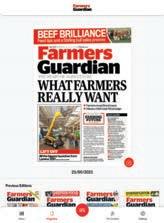










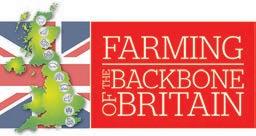
Scotland and New Zealand may be separated by more than 11,000 miles of land and sea, but their farming communities have much in common. Farmers Guardian finds out about a new well-being programme, Farmstrong Scotland, which has roots Down Under.
Farmers’ well-being, rather than the machinery they use or the livestock they tend to, is their most valuable asset.
This is the message that Scotland’s farming and crofting communities have taken to their hearts from Farmstrong Scotland, an organisation committed to the rural community’s well-being. The initiative’s roots, however, stem from across the globe.
“Farming used to be all about this [physical] kind of strength,” says Gerard Vaughan, founder of Farmstrong in New Zealand, flexing the muscle in his arm.
“Now, it is all about the head. Developing mental skills is what you need to be a good farmer nowadays.
“Farmers spend a fortune on servicing their kit and making sure their livestock have the best veterinary attention, but more often than not they neglect themselves.”
With so many farmers struggling to cope with problems such as extreme weather, staff shortages and increased paperwork, Gerard, one of New Zealand’s leading mental health professionals with the added bonus of having an understanding of agriculture, was asked to design a programme to help.
Based on the watchwords of ‘live well to farm well’, he launched Farmstrong in 2015 and it has been a phenomenal success story, helping thousands of farmers learn how to look after themselves and have strategies in place for when times get tough.
Now, after years of fact-finding and fundraising, Farmstrong Scotland has been launched.
“It is absolutely awesome that another country has looked at what we have done and implemented its own programme,” says Gerard, who has visited Scotland twice, including a trip to this year’s Royal Highland Show.
“One of my lasting memories from Scotland was being on farms and seeing endless books of detailed breeding records on Aberdeen-Angus cattle.
“It made me think that if farmers will go to such lengths for their livestock, putting some thought into themselves should not be too much to ask.”
The seeds for the recent launch in Scotland were sown many years ago when Ross-shire farmer John Scott, now chair of Farmstrong
Farmers spend a fortune on their kit and making sure their livestock have the best veterinary attention, but more often than not, they neglect themselves
GERARD VAUGHAN
Scotland, read about a New Zealand farmer called Doug Avery online.
Drought had left his farm facing financial difficulties and he credited the Farmstrong programme for saving both him and his farm.
With challenges such as Brexit on the horizon at the time, John spoke to the Royal Highland and Agricultural Society of Scotland (RHASS) to ask for its support in bringing Doug over to talk about the mental health challenges he had been through.
He got the green light and, in 2018, town and village halls across the length and breadth of Scotland were packed to the rafters as the Kiwi farmer took to the stage to share his story.
“The enthusiasm and warmth the Scottish people showed to Doug was amazing,” says John, a beef, sheep and arable farmer.
“There was an immediate feeling that we needed to do something ourselves, but with the pandemic it took longer than we would have liked.”
Fast forward to spring 2023 and there was another tour, this time by New Zealand dairy farmer Marc Gascoigne. He has joined the likes of farmer and All Black rugby hero Sam Whitelock in becoming an ambassador for the programme.
Marc spoke about how he had been suffering in silence; feeling at the end
of his tether with worries about the farm – and the relief he felt when he finally opened up to his wife and brother.
He firmly believes he is a better farmer now, for having learned how to look after himself.
Support from the RHASS, the Movember Foundation and NFU Mutual turned the dream of Farmstrong Scotland into a reality.
The Movember Foundation had been key to the New Zealand programme’s success, so it was a real coup that it has agreed to match every £1 raised by Farmstrong Scotland, to the sum of £350,000.
On November 20, the well-being initiative took a step forward with the appointment of a key team member.
Alix Ritchie, a Perthshire farmer and passionate advocate for the rural community, has become the inaugural programme director for Farmstrong Scotland.
“I have followed the Farmstrong movement in Scotland as a supporter since the Doug Avery tour, right from the very beginning,” says Alix.
“I think personal resilience and well-being is something we neglect as an industry; not placing enough value on ourselves. Farmstrong Scotland will enable people in the rural community to learn how to improve their
FARMSTRONG Scotland promotes five ways to well-being. These are:
■ Connect - developing new friendships and spending time with friends. Have time away from work
■ Give - Giving your time to others, be that through supporting those having a tough time or spending quality time with family
■ Take notice - Take time to pause and think about what you appreciate. Find the simple things that make you happy and pay attention to them, if only for a few moments
■ Keep learning - Be curious on and off the farm. Learning new things is good for your brain, will keep your mind active and help you farm smarter
■ Be active - Working up a sweat releases endorphins that make you feel alert and better able to cope with challenges. Make activity a habit, aim for at least 30 minutes of movement a day
own well-being which, in turn, will help them to farm and croft better.
“Learning how to build up resilience for when times are tough is a key element of Farmstrong Scotland; making sure farmers and crofters have some coping strategies in their well-being account to draw on.”
Alix, who has two children and farms 100 head of suckler cows and 550 ewes in Perthshire with her husband John and father-in-law George, says one of her first objectives will be to make Farmstrong Scotland a household name among the farming fraternity.
“Farmstrong Scotland is not for when somebody is at crisis point; for that level of need there are other excellent charities that have all the expertise to help,” says Alix.
“What there is, is a need for training and support for farmers and crofters to better understand how they can manage their own well-being.
“It might be something as simple as making time to have a chat or something more structured.
“Farmstrong Scotland is not here to preach a right way or a wrong way – its aim is to help farmers and crofters find a lifelong path of looking after themselves.”
Hot on the heels of Alix’s appointment has been news that farmer’s daughter Clare Dickson will take on the role of Farmstrong Scotland’s community engagement specialist.
While Alix will be heading the programme, Clare will be very much out and about spreading the wellbeing messages to rural communities.
Having helped to start something special five years ago when he invited Doug over to Scotland, John is keen to continue this support in Scotland’s rural communities.
He says: “Agriculture is facing unimaginable changes that will impact generations and could require complete restructuring of farming practices. Many of these challenges we cannot control – they will happen regardless of how well we rear our livestock, grow our crops or manage our finances. It is vital that during this period of immense change we learn to look after ourselves.”
MORE INFORMATION
Visit farmersguardian.com/farm-life, or for more details on Farmstrong, visit farmstrongscotland.org.uk









AMY WILKINSON Lancashire
Amy works on her family’s tenanted farm at Halsall, Lancashire. Working mainly with her dad, Amy farms 285ha (704 acres) of arable crops and 550 beef cross cattle which are all reared through to finishing. You can follow her on Instagram @amygingewilkinson
This year I was very excited to be invited to my first colleague’s wedding like a proper grown up.
When I told my parents this, they said that is impossible as they are already married.
James Huyton, Farmers Guaridan’s machinery specialist, was kind enough to invite me to his lovely nuptials as we have worked together under his boss, Toby Whatley, at events such as LAMMA.
This got me thinking that working on a family farm is such a different work experience than any other I can think of. Especially if, like me, it is just you and your parents employed there.
Thankless
Truth be told, in these situations it can feel quite thankless. There is no such thing as bonuses, but that is not what makes the difference to me personally.
It is the lack of a social side to work, especially since I now live alone and even though I have never experienced it, which is what I miss.
My sister and friends work in offices where they go for drinks after work, there are work Christmas parties, office gossip and even bake off competitions. I didn’t used to notice

‘Working on a family farm is such a different experience than any other’
this as much, as after work I always had my siblings to talk to, but now I go back to my little house alone and it is a silence I have never been used to. I can now go days without speaking to a soul other than my parents and cows.
I am in that weird group of young people in the countryside who are too old for young farmers but not yet settled and married like a lot of my friends.
This, at times, lonely little existence has had me comparing myself to the incredible Land Girls during the world wars as I have recently been reading
about these women in FG’s own Emily Ashworth’s book The Land Army’s Lost Women (Five stars, really recommend).
Often these girls were sent to farms a long way from home to work sometimes alone.
What I took from reading through their memories was that a lot of these girls joined to gain their independence, but with this new-found freedom came a loneliness — a bit like me gaining my independence and living alone.
Where our experience differs is I am unfortunately not surrounded by
CONDITIONS have turned colder across Europe this week as early winter settles in. Snow cover has extended across Scandinavia and parts of Russia with storms ravaging the Ukraine and Black Sea areas of Russia too.
This is all part of the Northern Hemisphere’s transformation from summer to winter weather.
As the pole cools rapidly we see a huge imbalance of heating between the equator and the Arctic, with such sharp temperature contrasts ‘super charging’ the weather machine and sending it into over-drive.
But the weather does not have to
be dramatic to show its power.
As we experienced the northerly winds bringing some drier weather and overnight frosts, plus the first snow showers of the season for many, the very fact that the weather was able to turn so chilly so quickly is evidence of the machine at work.
The chilly weather of this week is not unusual for December.
Just think back to 12-months ago when we experienced the coldest December since 2010. From the beginning of the month until December 17, 2022, the month was frosty and only thereafter became milder.
By contrast November 2022 was
mild overall. Although not as mild, November 2023 proved to be warmer than average for most areas, although northern and eastern Scotland have been colder than average according to provisional data. Rainfall amounts have been sporadic in distribution with many areas wet, notably southern Wales, southern and south east England, eastern England and eastern Scotland. But lower than average rainfall in Ireland, western Scotland and parts of the Midlands. Now the question is, ‘how long will it be cold’? There are a few more days of cold yet and for the latest see our forecasts at weatherweb.net
fit military men or prisoners of war (I know, scandalous.)
This is not to say I am willing to rush into such a commitment, as I am very proud of the independence I have gained by myself and do have some fabulous friends.
However, if you are also part of this group of late 20s/early 30s age, who went into a world pandemic as a massive young farmer-goer and came out the other side too old, in an isolating job, and without the chance to meet a special someone. You are not alone if you feel lonely sometimes.

For location specific forecasts visit farmersweather.co.uk and for video updates go to weatherweb.net or call the number below. Call Farmers WeatherLIVE
Monmouthshire Kate Beavan
Cheshire Ian Garnett
Scottish Borders
Kate Rowell is a fifthgeneration farmer running the 750ha (1,853-acre) Hundleshope Farm on the Haystoun Estate, Peebles, where the family have been tenants for 150 years. She runs the hill unit with her husband Ed and their four children. She is also a vet and chair of Quality Meat Scotland.
Television adverts have become synonymous with the start of the Christmas countdown and, for the first time ever, Scotch meat is to get its moment in the seasonal spotlight.
Quality Meat Scotland’s (QMS) first Christmas TV campaign celebrating Scotch meat, will reach almost 90 per cent of Scotland’s
adult population when it runs on STV, Border TV and STV Player.
This campaign is a significant addition to the QMS marketing calendar, amplifying the focus on our nation’s iconic meats during the important festive shopping period and, importantly, putting the spotlight on our livestock sector.
A lot of thought has gone into making this a powerful campaign that gets consumers to think of Scotch Beef, Scotch Lamb and Specially Selected Pork right up to New Year’s Day and on into 2024.
Conversation
Food-focused Christmas television adverts have provided plenty of entertainment and conversations for consumers in recent years and are proven to drive sales, which is why many retailers place so much emphasis on their festive campaigns.
Being part of this vibrant and compelling advertising season seemed like the perfect time to

push Scotch Beef, Scotch Lamb, and Specially Selected Pork as the centrepiece to any meal over the holidays.
Research into what makes a successful Christmas ad show that storytelling and emotional connection matter most.
The campaign has a bold and epic ‘cinematic’ theme around superheroes — a group of family and friends sitting around a table in awe of the feast before them.
Consumers have a mind-blowing amount of choice of meat and nonmeat options over the festive period, and we are determined to make

sure Scotch red meat is where it should be, front and centre in the minds of buyers.
The adverts will be backed up with recipe ideas and social media activity for the whole holiday period, from Christmas Day dinners through to leftover sandwiches and celebrating again at Hogmanay.
According to Statista, 10 of 2022’s best-loved Christmas ads were produced by retailers. John Lewis took the top spot at 19.3 million views. We are confident Scotch red meat is going to join the ranks of those adverts that get people talking this Christmas.
The first correct entry received by next Friday will receive £20 worth of Love2shop vouchers. Send to: Crossword No. 1221, Farmers Guardian, Unit 4, Fulwood Business Park, Caxton Road, Fulwood, Preston, PR2 9NZ.
6 Mishandled non-U net profit or moment when there is no turning back (5,2,2,6)
9 Top journalist rode back holding Italian vermouth (6)
10 Partly record in a list indicating arrangement of sequence (7)
11 Fruit’s horribly worm-eaten and essentially pulpy (10)
3 Raised money used at first for single item (4)
14 Dirties birds, we hear (5)
15 Fund of money for child’s pet (5)
19 We’re told to wear out wheel’s rubber cushion (4)
20 Locations around a sizeable archaeological mound for celestial bodies (10)
21 Witty saying in page rim maybe (7)
22 Cows and oxen, puss and little pig coming back (6)
23 Get average blend mixed for plot of home-grown produce (9,6)
1 Hearty liqueur (7)
2 Time belonging to us, it’s said (4)
3 Confer title when no blemish concealed (7)
4 Strangely interlaced certification (10)
5 Part of chaptrel listed for latticework structure (7)
7 Cunning biter met no foe - should have happened sooner (3,6,4)
8 Sadly stuttering woe, like the sea shells she sells! (6,7)
12 Small-timer redesigned Scottish lade (10)
16 Prepare for printing newspaper, sort firm put together (7)
17 Take a false step initially silly, clumsy fall (7)
18 Source that is special for rubber boots (7)
22 Prison of conservative maturity (4)
Answers to crossword 1219: Across: 1 Badger, 5 Waller, 10 Andes, 11 Insinuate, 12 Versatile, 13 Dried, 14 Sacking, 16 Noisier, 18 Against, 20 Damaged, 22 Gates, 24 Raindrops, 26 Spiritual, 27 Aside, 28 Health, 29 Deeper. Down: 2 Adder, 3 Gestation, 4 Reining, 5 Western, 6 Lined, 7 Examining, 8 Calves, 9 Tender, 15 Coastline, 17 Immediate, 18 August, 19 Through, 20 Drilled, 21 Dishes, 23 Skill, 25 Olive.
As the Royal Welsh Winter Fair comes to a close, signalling the beginning of the festive season where we can safely eat a mince pie without fear of judgement, it is important to reflect on the event and highlight the many challenges currently facing Wales’ rural communities and farming industries.
We have seen the recent reports of dairy farmers speaking candidly about the very real threat to their industry. In Wales, dairy farming faces an even more uncertain future, thanks to policies from the Labour Government in Cardiff Bay.
Earlier this month, a Labour Senedd Member, representing Wales’ largest rural region, called for dairy farmers to ‘find another business’ if they are under bTB restrictions. This showed a complete lack of empathy for farming families suffering with the consequences of bTB due to the inactivity of the Welsh Government.
Our dairy sector producers provide some of the healthiest, greenest
products available. Yet, when we see global factors impacting input costs, Welsh farmers need a Welsh Government which is going to support the industry, not saddle them with tougher regulations and further burden.
Nitrate Vulnerable Zone (NVZ) regulations continue to be a cumbersome burden and there remains much uncertainty around them.
Since the Welsh Government’s announcement last month that NVZ regulations are being altered to lessen the impact on Welsh food production, it is unclear to Wales’ farmers on what further actions must be taken and what evidence must be provided to meet these new criteria.
I welcome the rowing back on the derogation limit but farmers desperately need clarity from the Welsh Government, because at present, it is as clear as mud. The continuous black cloud over dairy farming in Wales is bTB and the refusal by the Welsh Government to get serious to try and eradicate it from Wales.




Welsh Conservative Shadow Rural Affairs Minister







Unlike in England, Welsh farmers are unable to isolate in-calf reactors, allowing the to calve before the dam is culled. I have heard some real horror stories of the physical and mental impact this has had on our farmers. There is no compassion in this act; not for the dam, the calf and certainly not for the farmer.
I have made it my mission to get the Welsh Government to afford Welsh farmers the same flexibility as our English counterparts, to allow our farmers, who know their animals and farming systems best, to choose how in-calf reactors are culled. There is also the uncertainty when it comes to future farm support in Wales. Will it be appropriately funded and will it be a policy which works for Wales’ farmers?
The Labour Government’s persistence with the arbitrary 10 per cent tree planting target in the Sustainable Farming Scheme is a sticking point.
A one-size-fits-all approach which will not work and will see good, productive land, handed over to tree planting. According to Farmers Union of Wales, if all current Welsh emissions were to be offset by tree planting, then it would require an area around twice the size of Wales to be planted with trees.
Only this month I challenged the Welsh Minister on her Government’s shambolic handling of the Habitat Wales Scheme (HWS) – a one-year
replacement scheme to Glastir. Incorrect information such as mapping, no finalised budget and no specific support for organic has meant the HWS has been riddled with errors from day one so there has been limited interest in the scheme.
However, what concerns me the most is that this perceived lack of interest in the scheme will be an excuse for the Welsh Government to cut the rural affairs budget, having already slashed it in half earlier this year.
I am an optimist, though. I believe in Wales’ farmers and our fantastic agricultural produce. We have dedicated and diligent farming unions supporting those who tend to the land.
The best youth movement supporting the next generation in the Young Farmers. Everyone in the industry should be immensely proud of what you contribute.
As a farmer’s son, I am proud of the efforts of my own father to produce high quality, environmentally sustainable beef.
As the industry looks to tackle these challenges head on, it is evident that farming needs a friend.
They are not going to get that friend from the Labour Party, who have governed Wales for a quarter of a century.
That friend to farming is the Welsh Conservatives and I will continue to stand up to ensure farming in Wales gets the support it deserves.


